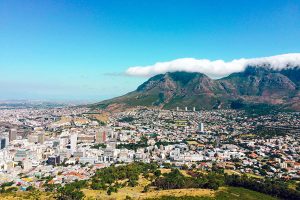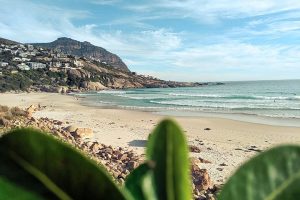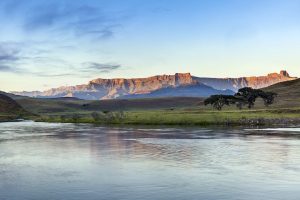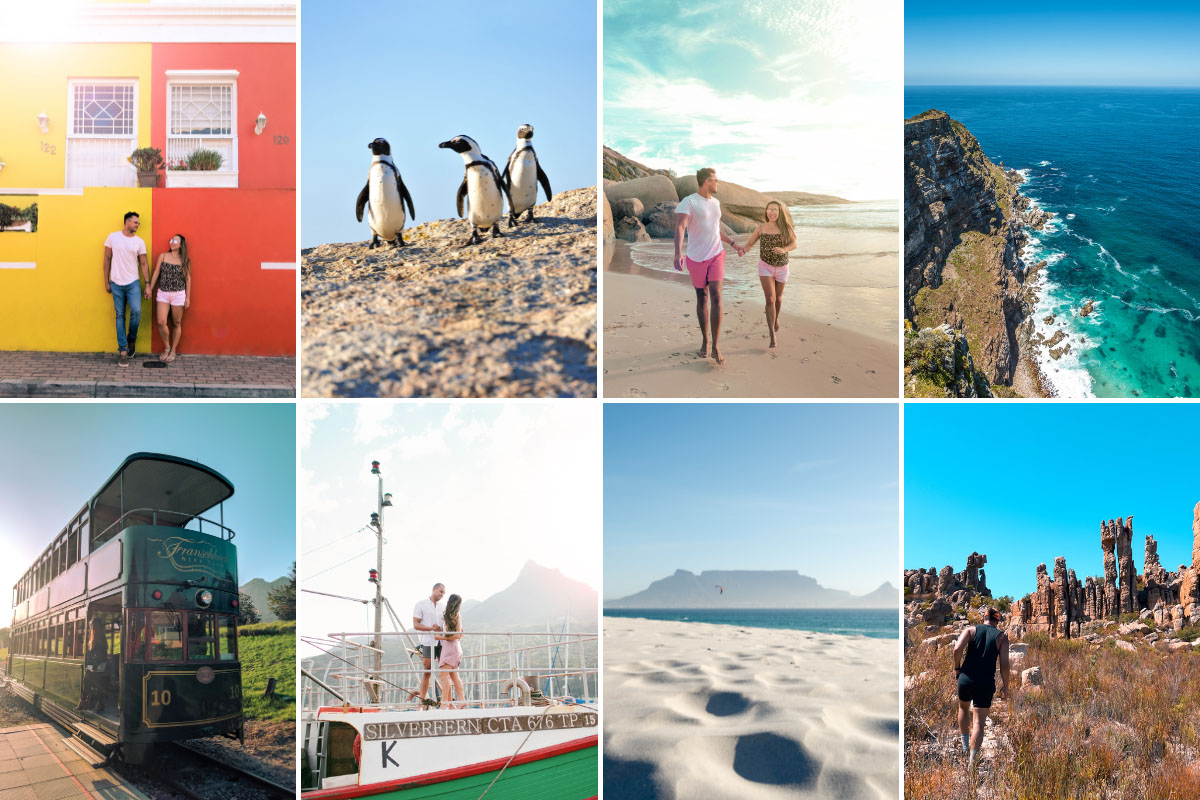
Planning an unforgettable vacation in South Africa? Skip all the guesswork and follow this ridiculously detailed Cape Town itinerary. Find out what to see and do in Cape Town in 3, 4, 5, 7 to 14 days from a local who’s actually lived there.
Excited to visit Cape Town for the first time, but dreading the research and planning? Don’t worry – you’ve come to the right place! I lived in Cape Town for 8 years before trading my office job to become a professional traveler, so I know the Mother City inside out.
I’ve done the must-see attractions every first-time traveler should do in Cape Town, as well as hidden gems only locals know about – and I want to show you how to do the same.
That’s why I’ve written this travel guide.
Whether you’re traveling Cape Town with kids, a group of friends, or planning a romantic honeymoon, this itinerary has something for everyone.
I’ll show you how to experience the best of Cape Town whether you’re there for 3 to 10 days or 2 weeks – I’ve got you covered!
This travel itinerary has it all. From visiting the city’s most famous things to do, best beaches, and epic hiking trails, to wine tasting and seeing South Africa’s unique wildlife in and around Cape Town.
But that’s not all! I’ve also included local tips for traveling safely in Cape Town, as well as how you can do this itinerary with or without a car.
Make sure you bookmark, share or pin this so you can refer back to it later.
Save Me For Later
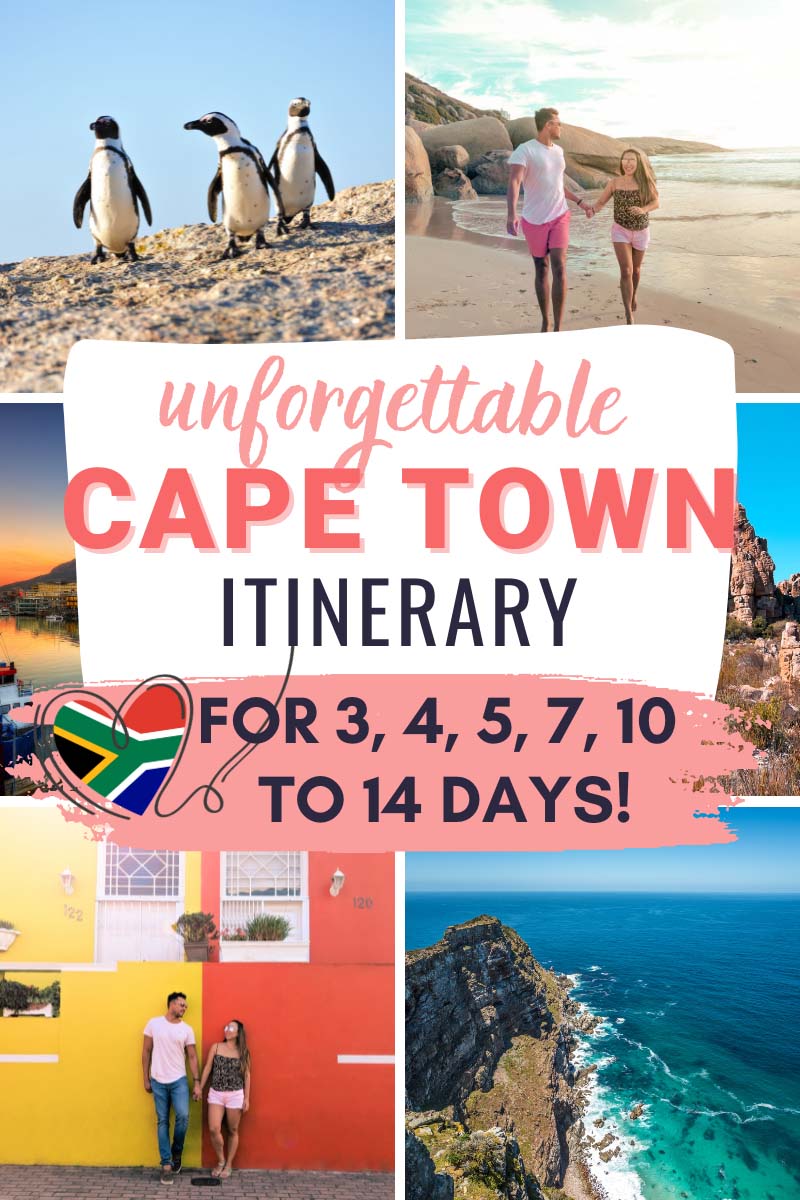
Tips To Know Before Going
Before we jump straight into the itinerary, let us answer some of the most common questions travelers ask us before visiting Cape Town for the first time.
Bonus Tip: Don’t skip travel insurance! It’s your safety net if things go wrong—covering you for injury, illness, theft, and even trip cancellations. We never travel without it (and trust us, we’ve needed it more than once). The best part? It’s surprisingly affordable. Don’t take our word for it—get a quick quote below and see for yourself!
Where to Stay in Cape Town As A Tourist (Without A Car)
I’m going to be honest. There is no straightforward answer to this question. It depends on whether you’re renting a car or not, what your safety tolerance is, and of course, your travel budget.
I plan to write a detailed ‘Where To Stay in Cape Town’ guide next. But for now, we’d recommend you stay in the Atlantic Seaboard area if you plan to follow this itinerary without renting a car.
It’s the best place to stay for the panoramic ocean views, stunning beaches, and most importantly, getting around Cape Town without a car.
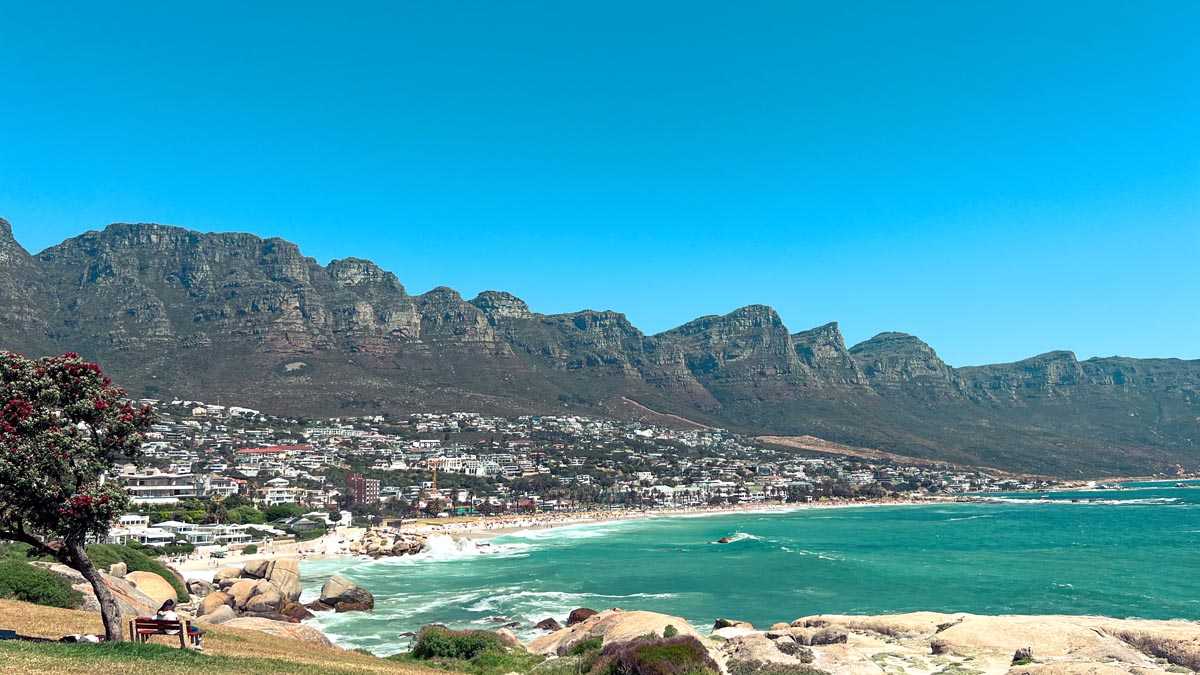
From the Atlantic Seaboard, you can easily hop on a MyCiti bus (the official public transport in Cape Town), grab a short Uber ride, or go on a day trip to Cape Point, Franschhoek, and more by guided tour.
Where is the Atlantic Seaboard exactly?
Basically all the neighborhoods to the west of the V&A Waterfront up until Llandudno. So if you’re looking to stay in Mouille Point, Green Point, Sea Point, Fresnaye, Bantry Bay, Camps Bay or Clifton, you’re on the right track.
Booking.comThese areas are considered safe (or rather safer) for tourists. It’s some of the most affluent neighborhoods in Cape Town after all.
That being said, the Mother City isn’t immune to the high crime in South Africa. It’s not safe to walk around outside at night, even in these upscale neighborhoods (especially Sea Point).
Staying in the Atlantic Seaboard area is expensive – especially if you’re traveling during peak season (December to May). Make sure you compare prices and book in advance to find good hotel deals.
Where to Stay With A Car
If you’re renting a car, we recommend staying in Gardens, Kloof Nek, or Tamboerskloof. You won’t get sea views here, but you’ll be treated to breathtaking views of Table Mountain instead.
Like the Atlantic Seaboard, it’s central and a safe area to stay in – only cheaper.
We stayed at the gorgeous Kensington Place Boutique Hotel and absolutely loved it! It combines all the luxury and amenities of a 5-star hotel with the warm, personalized service you’d expect from a charming bed and breakfast.
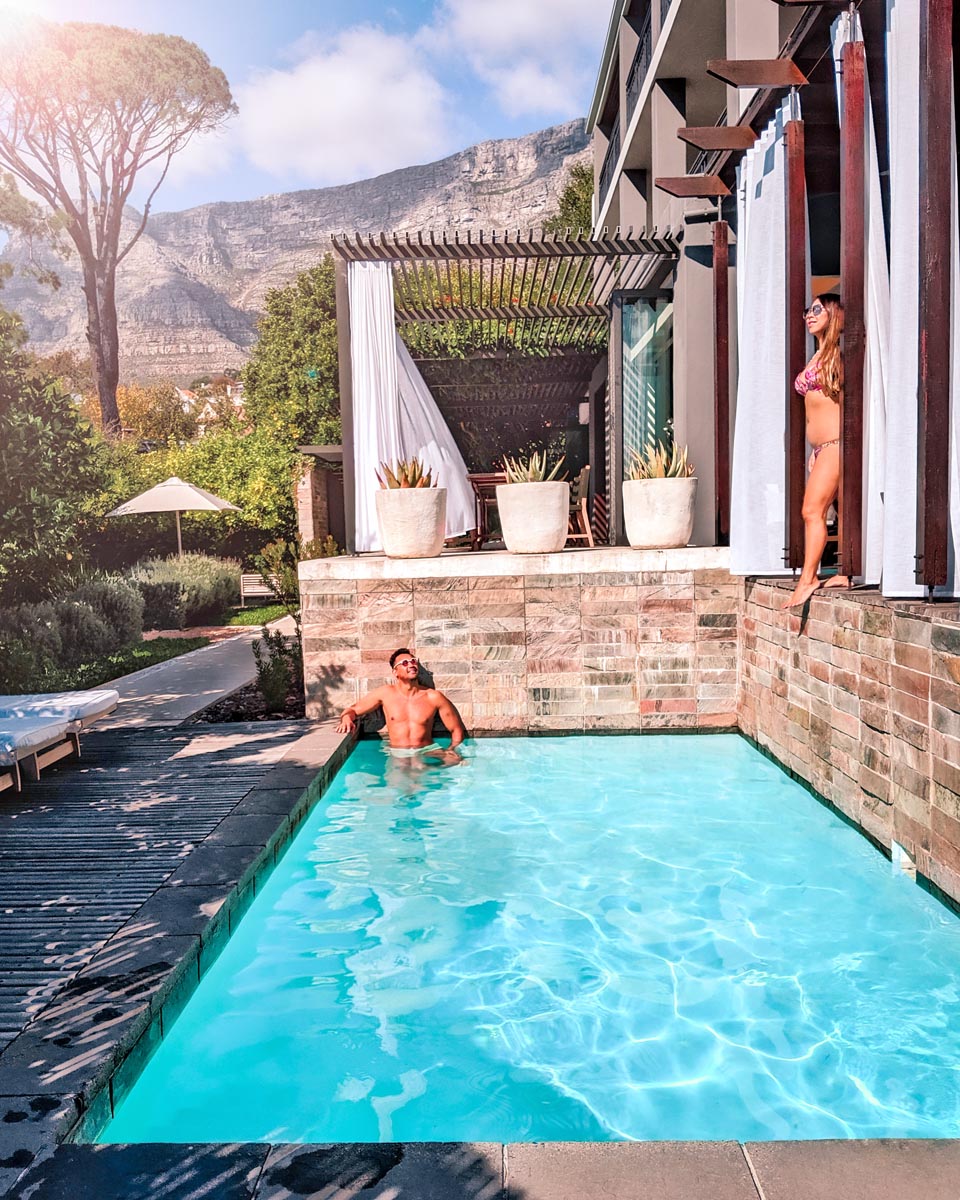
Otherwise, the southern suburbs of Cape Town (Newlands, Claremont, and Constantia) are another great option.
It’s further away from the tourist hotspots. Perfect for those who want to escape the hustle and bustle. And the cherry on top? It’s safe, you’ll still get incredible views of Table Mountain, and hotels and vacation apartments tend to be cheaper too.
Bonus Tip: Make sure you book your car hire in Cape Town well in advance, especially if you’re traveling during peak season. Compare car rental prices on DiscoverCars or RentalCars to find the best deal for your budget.
How to Get From Cape Town Airport To City
The best way to get from Cape Town International Airport to the city (if you’re not picking up a rental car) is to take an Uber.
Uber is not only super affordable for tourists visiting South Africa but also very safe.
As long as you double-check that your Uber driver matches their profile photo, you’re good to go. If not, cancel the ride, report it to Uber, and book a new ride.
Bonus Tip: Get a local eSIM so you can easily (and cheaply) find your way around Cape Town! Check out GlobalYo and SIMLocal to find the best eSIM deals.
You’ll also find metered taxis at the airport.
We never take metered taxis for two reasons. Firstly, for safety reasons. Secondly, haggling over fair fare prices (see what I did there?) isn’t exactly the way we’d like to start our vacation.
Save yourself the hassle and just grab an Uber instead. It will cost you anywhere between €10 to €15 from the airport to the city. Pretty affordable, right?
If you do plan to rent a car in Cape Town, make sure you book one in advance. Especially if you’re traveling there during high season (December to May).
We found a great car rental deal with Sixt when we were there in March. But we’d highly suggest comparing prices on DiscoverCars or RentalCars to find the best option for you.
Bonus Tip: You’ll need an International Driver’s License to drive in South Africa if yours isn’t written in the English language. This means that if your license is in German, Dutch, French (or any other foreign language), you’ll need to apply for one. Don’t worry though – you can easily get an International Driving Permit online.
Cape Town Itinerary Map
We know how much effort and time it takes to plan a travel itinerary. Especially when you have a full-time job and limited vacation days.
That’s why we’ve created a simple and easy-to-follow custom map so you know exactly what to do and see in Cape Town without the stress of planning it.
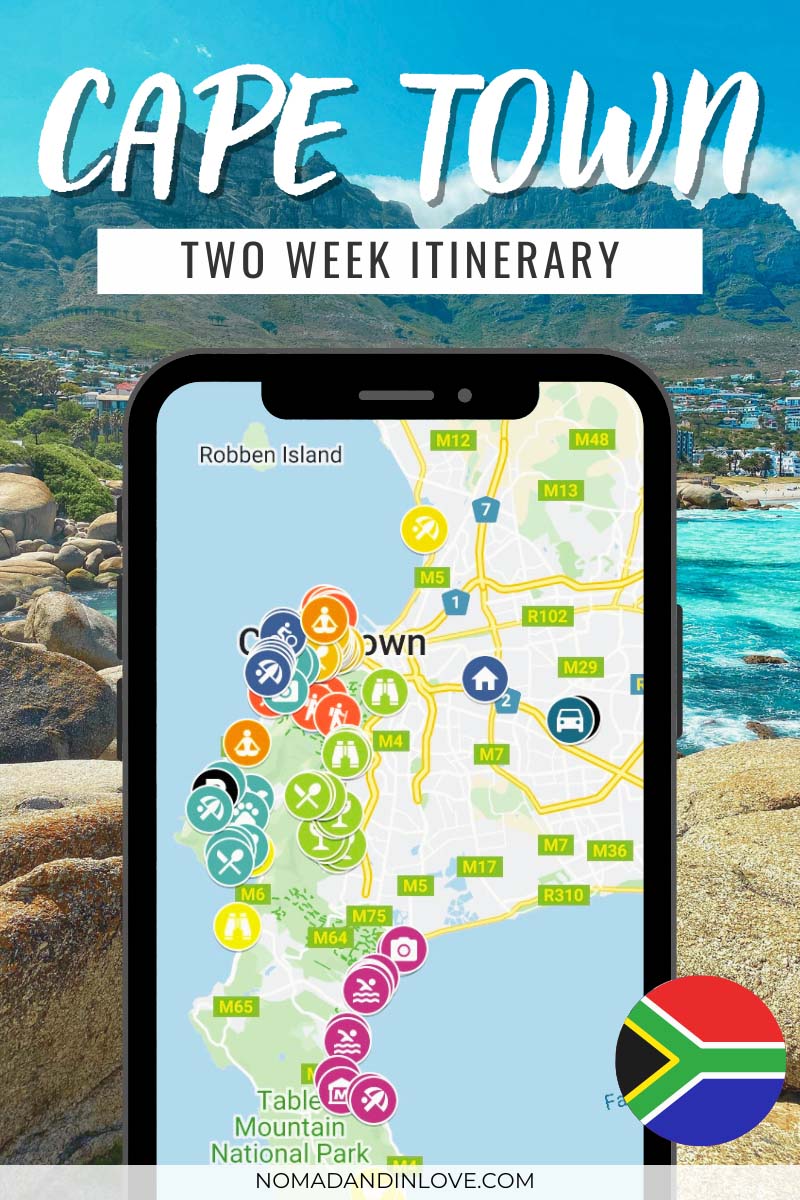
The map not only includes all the places mentioned in this guide listed from day 1 to day 14. But also bonus locations like local cafes and bakeries to visit, which non-touristy restaurants to eat at, our favorite bars and coffee spots, and even where to find parking. It’s THAT detailed!
The custom map lets you follow our itinerary as is or easily cherry-pick specific days by hiding the ones you don’t need.
Get the exact locations of 170+ places from this Cape Town itinerary with our interactive map – for less than the cost of 4 cups of coffee! Plus, as a bonus, we’ve included a local tip inside that will save you more than what you paid for our Two Week Cape Town Itinerary. The map works on all smartphones!
3 Days in Cape Town Itinerary: Without A Car
Day 1: Explore The Atlantic Seaboard
Day 1 of this itinerary kicks off with exploring the most famous sightseeing spots in Cape Town. The ultimate ‘what to do’ list if you only had one day in the city.
Table Mountain
Cape Town would not be Cape Town without Table Mountain. It’s the city’s defining icon and one of the most famous landmarks in South Africa.
But what exactly makes Table Mountain so famous?
Well, unlike most mountains, Table Mountain lacks the traditional summits or peaks. Instead, it stands out with a flat, expansive plateau, that creates a one-of-a-kind ‘table’ silhouette.
This unique feature not only inspired its name, but also makes it one of the most recognizable mountain landscapes in the world.
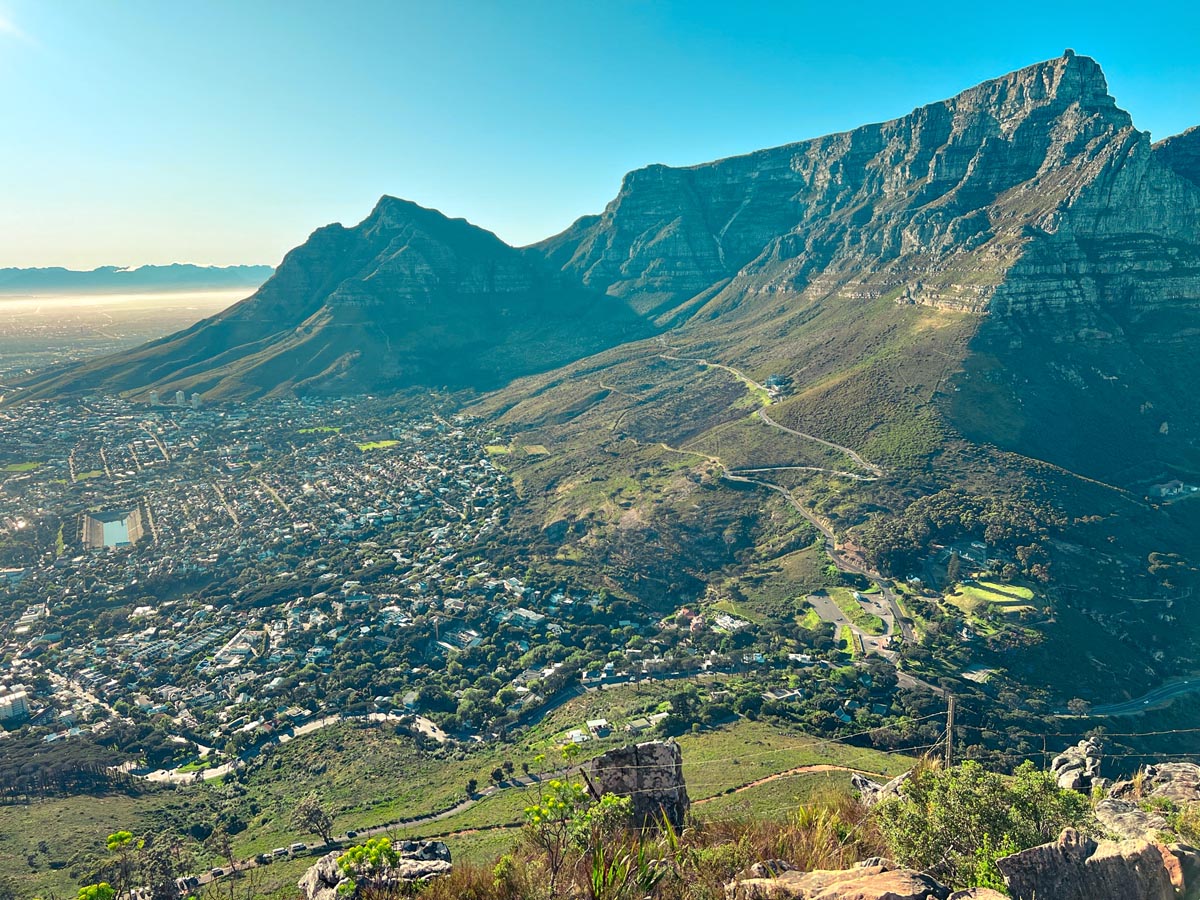
If you’re visiting Cape Town for the first time, you MUST go up Table Mountain. Yes – it’s very touristy, but a visit to the city simply wouldn’t be complete without it.
Even us locals make the trip up at least once in our lives. Not only will you be rewarded with breathtaking panoramic views of the city. But it’s also quite a fascinating experience to stand on a flat mountaintop.
In my 20+ years living in South Africa, I’ve gone up Table Mountain many times. The last time I was up there, Michael proposed and we got engaged.
How To Go Up Table Mountain
There are two ways you can go up Table Mountain. A scenic cable car ride or an adventurous hike along one of the many mountain trails to the top.
Taking the cable car is the easiest and fastest way to the top, but it will cost you. Tickets cost R490 for adults (€25 or $26) and R245 (€13 or $14) for kids.
The second option is to hike up Table Mountain. This is not only the cheapest way (basically free) up, but also the most fun and adventurous.
There are many hiking trails to choose from. For your first time up, we’d recommend the Platteklip Gorge hike. It’s the quickest, easiest and most direct route up Table Mountain.
We’ve done this hike before. It’s moderately challenging because of the steep incline up. But the good news is that no technical hiking skills are required.
As long as you’re relatively fit enough to walk long distances, and don’t have major hip, knee or ankle problems, you’ll be fine.
The Platteklip Gorge trail is very well marked – it’s near impossible to get lost. If you’re sticking to this route, you won’t need a guide to hike up Table Mountain.
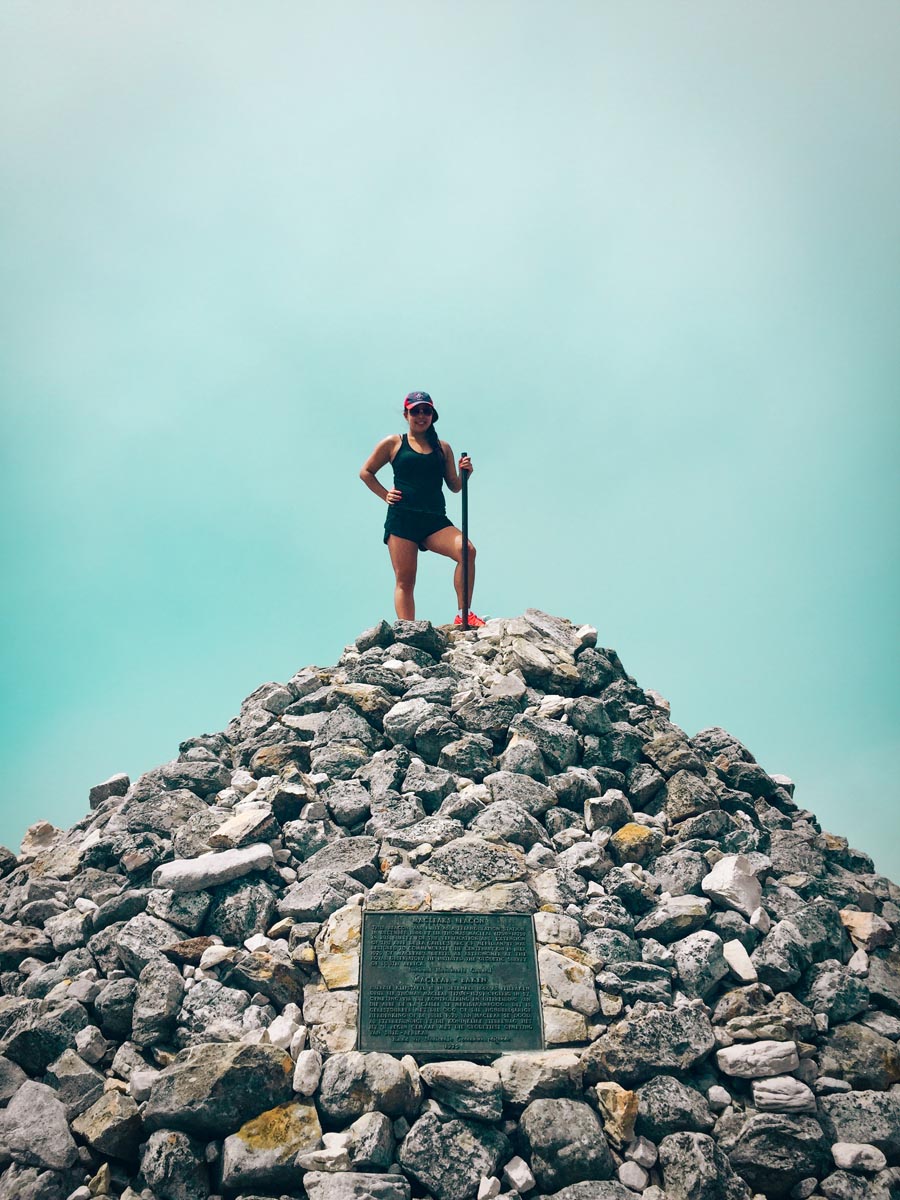
The total distance of the Platteklip Gorge trail is around 2.5km long (or 1.6 miles for our US friends). But don’t be fooled – it takes on average 2.5 to 3 hours to complete at a leisurely pace. And that’s one-way by the way…
If you plan to hike up and down Table Mountain, the total distance and hiking time doubles.
If that’s not how you would like spend a day in Cape Town, you could always hike up and take the cable car down.
Make sure to start the hike early in the morning (before 08:00 ideally), wear sun lotion, and bring lots of water and snacks.
Bonus Tip: Only opt for the road less travelled (i.e. hike up Table Mountain) if you can split this one day Cape Town itinerary into 2 days. The hike will take up most of the day so you won’t have enough time to do everything we’ve planned for day 1.
Tips for Visiting
Now that you know how to get there, here’s some local insider tips you should know before visiting Table Mountain.
Firstly (and most importantly), check the weather. You won’t be able to take the cable cars if it’s too windy.
The best way to check whether the cable cars are running is to look at the official Table Mountain website.
It provides real-time updates on whether the cableway is open, the time of the last ride, and even estimated wait times, so you’ll know how busy it is before you go.
Second tip: avoid hiking up Table Mountain when it’s enveloped in clouds. We locals lovingly call this the famous ‘tablecloth’ of Table Mountain.
Yes – it’s a beautiful sight to behold. But it also makes hiking treacherous when visibility is poor and you can’t see where you’re going.
Whether you’re hiking or taking the cable car, always check weather conditions before visiting Table Mountain. It can truly make or break your visit.
Our third tip. The best time to visit Table Mountain is either when it opens (8AM or 9AM depending on weather conditions) or 3 hours before it closes (20:00 or 21:00 in summer).
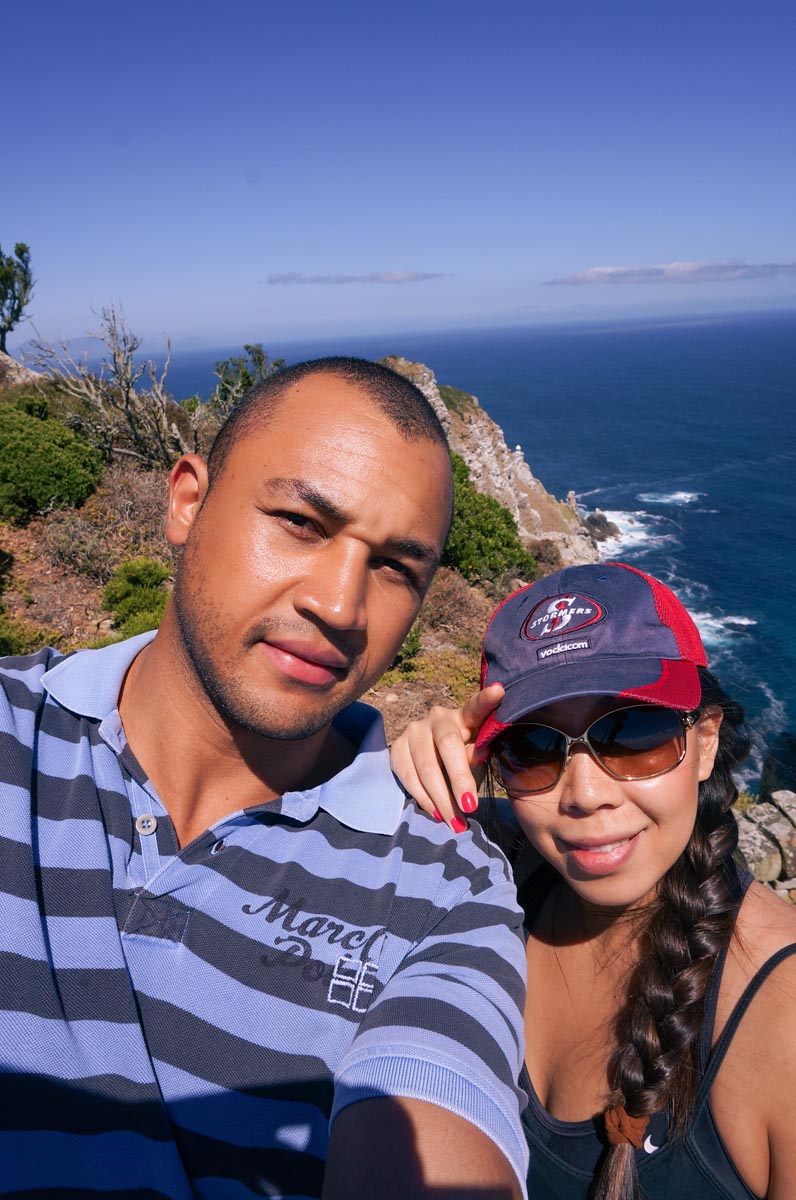
It’s less crowded during these times, and you’ll enjoy walking on Table Mountain more with the cooler temperatures.
There is no shade on top of the mountain (unless you visit the restaurant) and the African sun is strong. Be sure to wear a hat and sunscreen because a sunburned scalp is never fun for anyone.
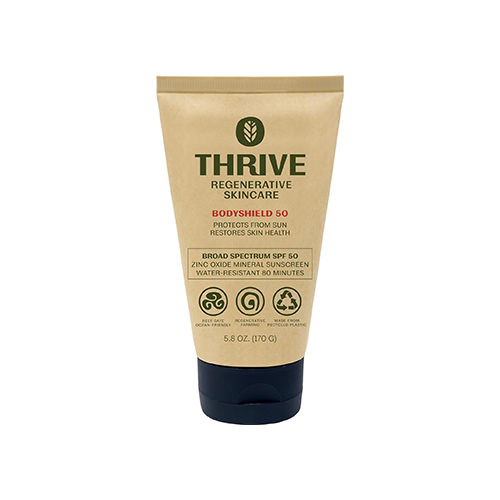
Safety on Table Mountain
And finally, our tips wouldn’t be complete without addressing the elephant in the room – safety.
Let me start by saying it’s absolutely safe to visit Table Mountain. However, like any popular tourist attraction, there are a few things to keep in mind to ensure a stress-free experience.
First and foremost, never hike up the mountain alone. Stick to well-trodden trails and don’t wander off onto quiet paths you’re unfamiliar with. Safety in numbers is key.
If you’re hiking in pairs or in groups, I’d suggest the Platteklip Gorge route mentioned earlier. It’s the most popular trail and therefore always bustling with locals and other hikers, making it one of the safest options.
And if hiking isn’t your thing, the cable car is a great and completely safe alternative.
Once you’re on top of the mountain, you’ll find plenty of people around, so there’s no need to worry about exploring the plateau and enjoying the natural beauty of Table Mountain.
Related Guide: Read our comprehensive South Africa Safety Tips guide for more useful travel tips.
Guided Table Mountain Hiking Tours
For those of you who prefer to err on the side of caution, here are some great guided tours for hiking Table Mountain in a group:
V&A Waterfront
If Table Mountain is Cape Town’s natural icon, then the Victoria and Alfred (V&A) Waterfront is the city’s most famous man-made landmark.
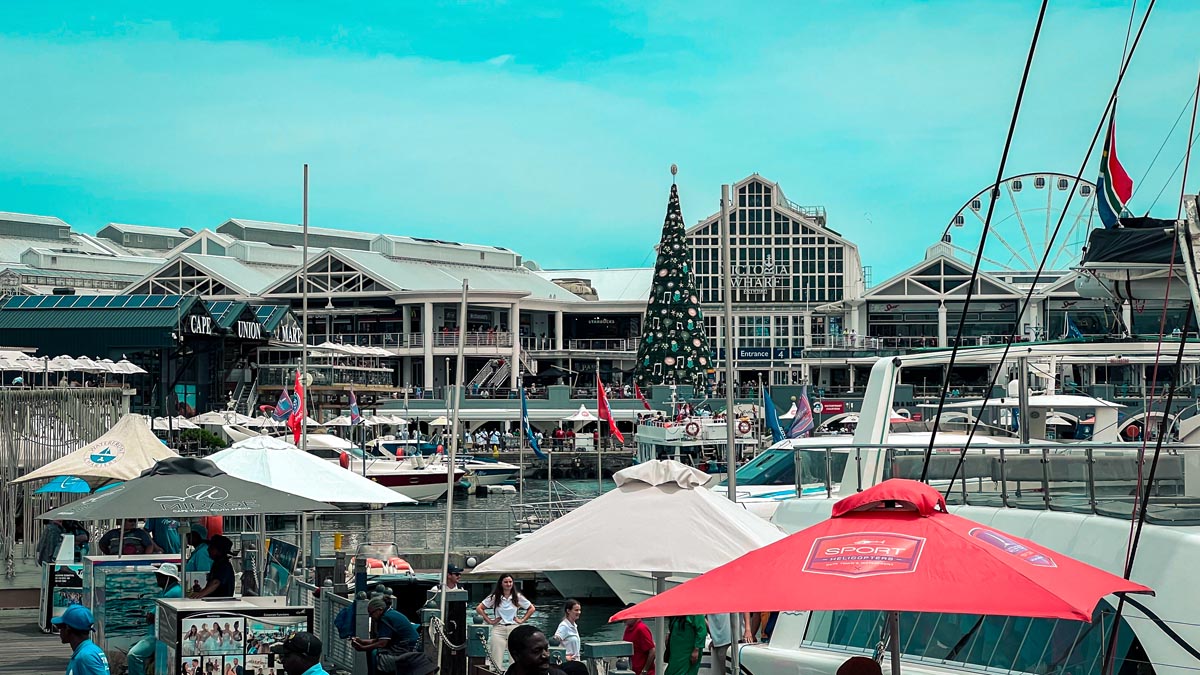
Oh, it’s iconic alright, and so much more than just a shopping mall.
You could easily spend an entire day here and still not run out of things to do. There’s something for everyone, whether you’re traveling as a family with kids, as a couple or a group of friends.
Families with kids will love the Two Oceans Aquarium. With a bit of luck, you may even see Cape Town’s famous seals swimming in the harbor or sunbathing on the dock.
Foodies can indulge in everything from cheap eats to fine dining. And if bustling food markets are more your thing, then you’ll be spoilt for choice at the Time Out Market and Oranjezicht City Farm Market.
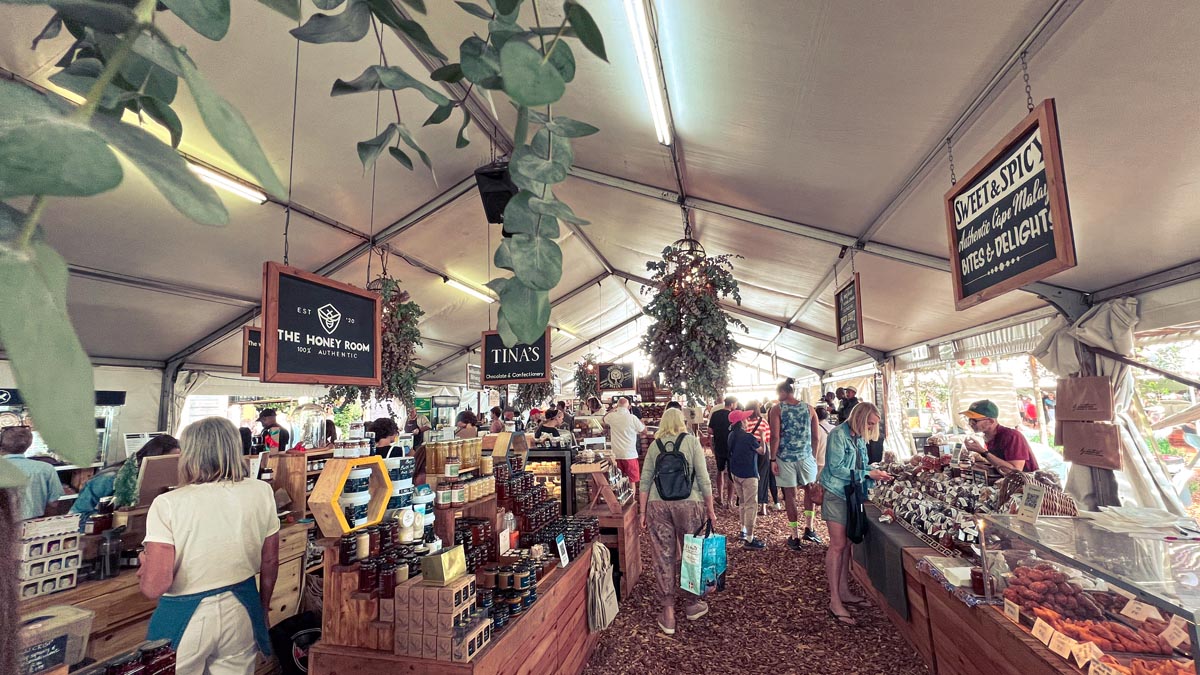
Make sure to try the snoek samoosas when you visit the Oranjezicht Farm Market. It’s a delicious South African snack made from the rich and smoky ‘snoek’ fish found off our coastline. It’s a local favorite and a must-try when visiting South Africa.
History lovers can hop on the Robben Island tour from the V&A Waterfront and learn more about South Africa’s complex past, including the life and legacy of Nelson Mandela.
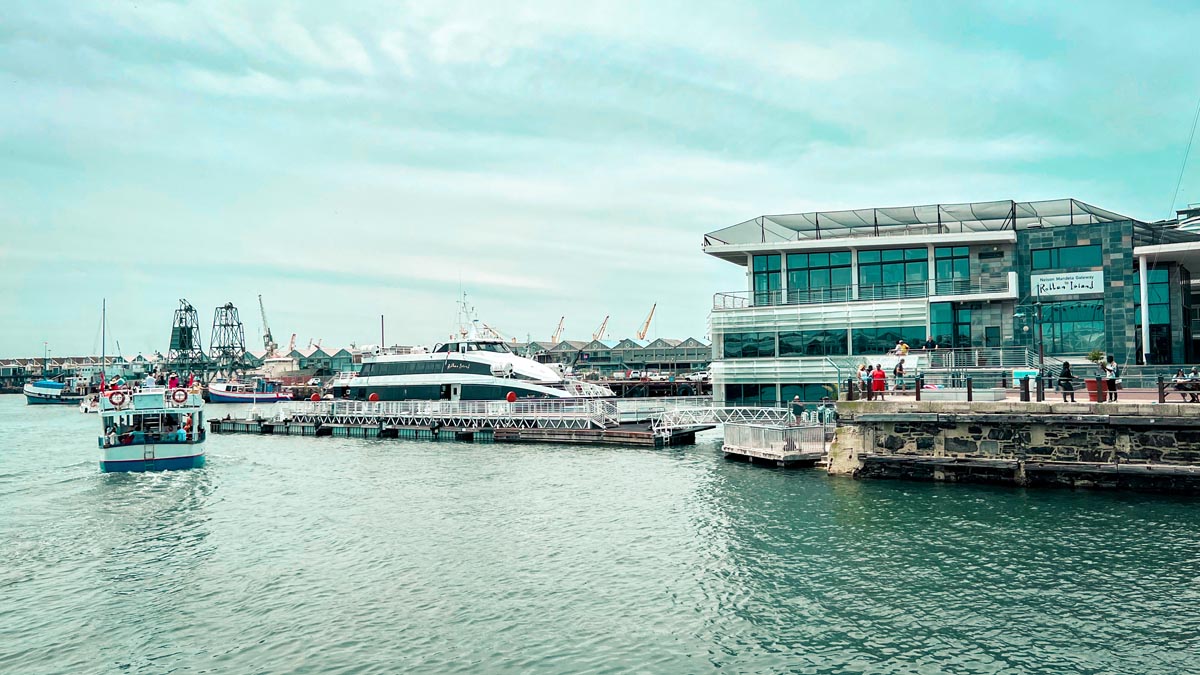
End your visit at the waterfront admiring contemporary African art at the Zeitz Museum (MOCAA).
Or (our favorite) on a sunset catamaran cruise because nothing beats the combination of a breathtaking sunset AND South African sparking wine.
Camps Bay
End day one in Cape Town off in style with pre-dinner cocktails and supper in Camps Bay.
It’s one of the most boujee areas in the city (not gonna lie). But the palm tree lined promenade, bustling vibes, and majestic views of both the ocean and the Twelve Apostles mountain range, makes it worth visiting.
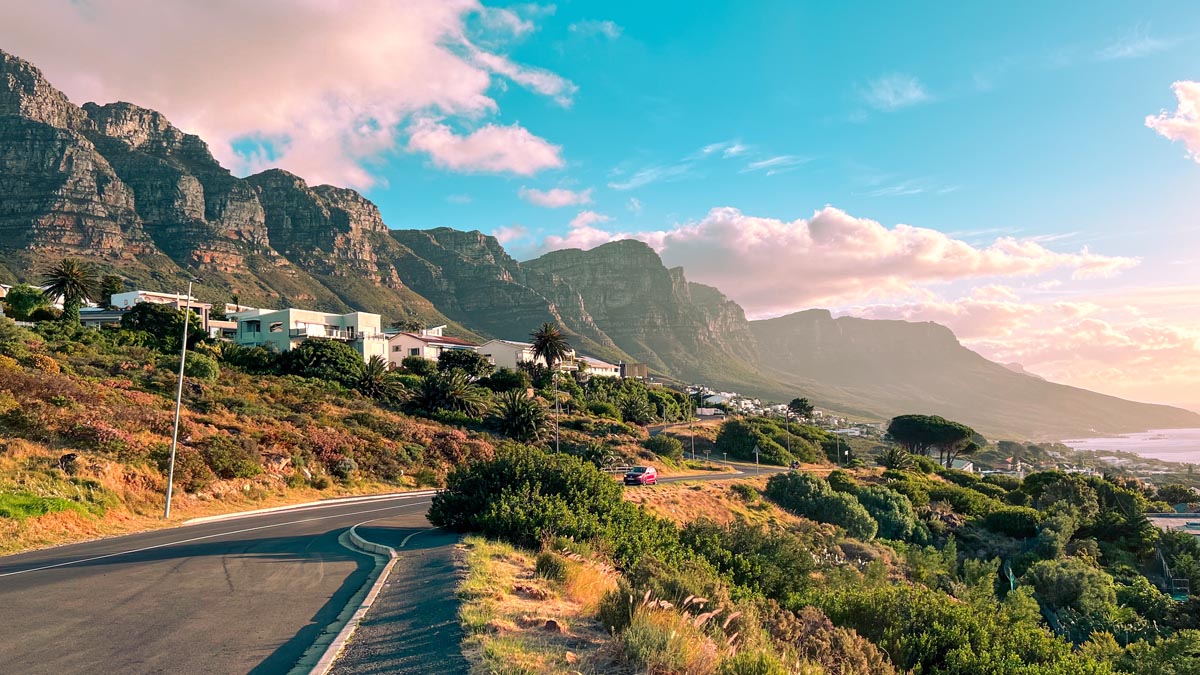
For a laidback cocktail spot, you can’t go wrong with Cafe Caprice. It’s been around for over 25 years (since 1999) so you know it’s good! If you’re in the mood for something fancier, try Paranga.
You can enjoy dinner at both these spots. But if you’re a seafood lover, we’d highly recommend Codfather Seafood & Sushi.
And for the ultimate luxury dining experience, treat yourself to dinner at The Lawns at the Roundhouse – just be sure to book in advance.
How To Get There Without A Car
You can easily get to Table Mountain, the V&A Waterfront and Camps Bay with or without a car.
By car is the fastest. Road conditions are great but finding parking can be a challenge (especially in Camps Bay). Don’t worry – I’ve shared all the parking spots I know in our map.
You can also get to all 3 spots on day 1 of this itinerary without a car.
Grabbing an Uber will be the easiest and fastest way to get around. But if you’re staying in the Atlantic Seaboard area, you could also take public transport (MyCiti bus).
Bonus Tip: Download the MyCiti App to plan your route and check the public bus schedule.
Day 2: Cape Town City Tour
No trip to Cape Town is complete without exploring the city centre. Or as us locals like to call it – the City Bowl. It’s the vibrant heart of the Mother City, brimming with culture and history.
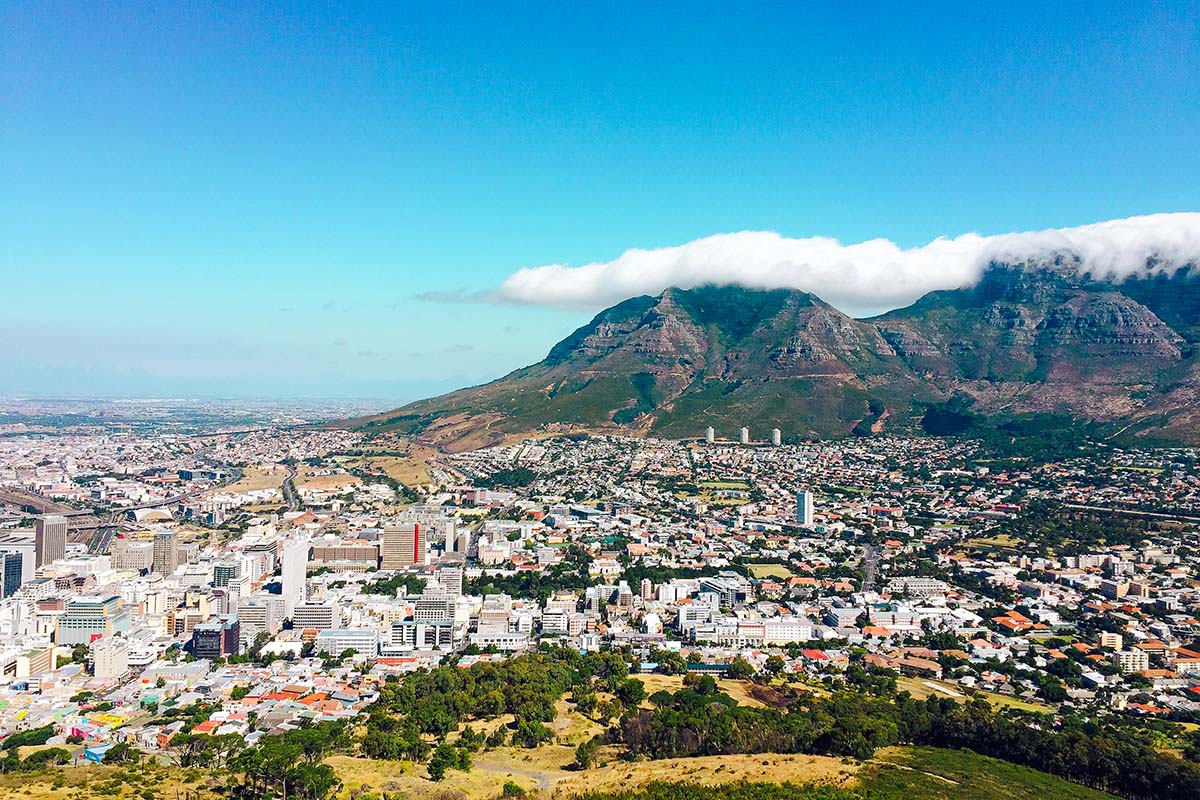
This is where you’ll find most of the historical buildings and monuments dating back to South Africa’s colonial past, like the Castle of Good Hope, St George’s Cathedral, and of course, the colorful (and Instagram famous) Bo-Kaap district.
Follow our self-guided Cape Town City Tour Itinerary to explore not only the city centre’s top attractions, but also hidden gems you’ve probably not heard of.
Sunset Walk on Signal Hill
For a magical end to your day 2 in Cape Town, take a sunset walk around Signal Hill. You’ll be treated to jaw-dropping views of the city, Table Mountain, and the glistening Atlantic Ocean in the distance.
It’s pure Cape Town magic as the sun dips into the horizon and the sky transforms into a canvas of fiery oranges and pinks.
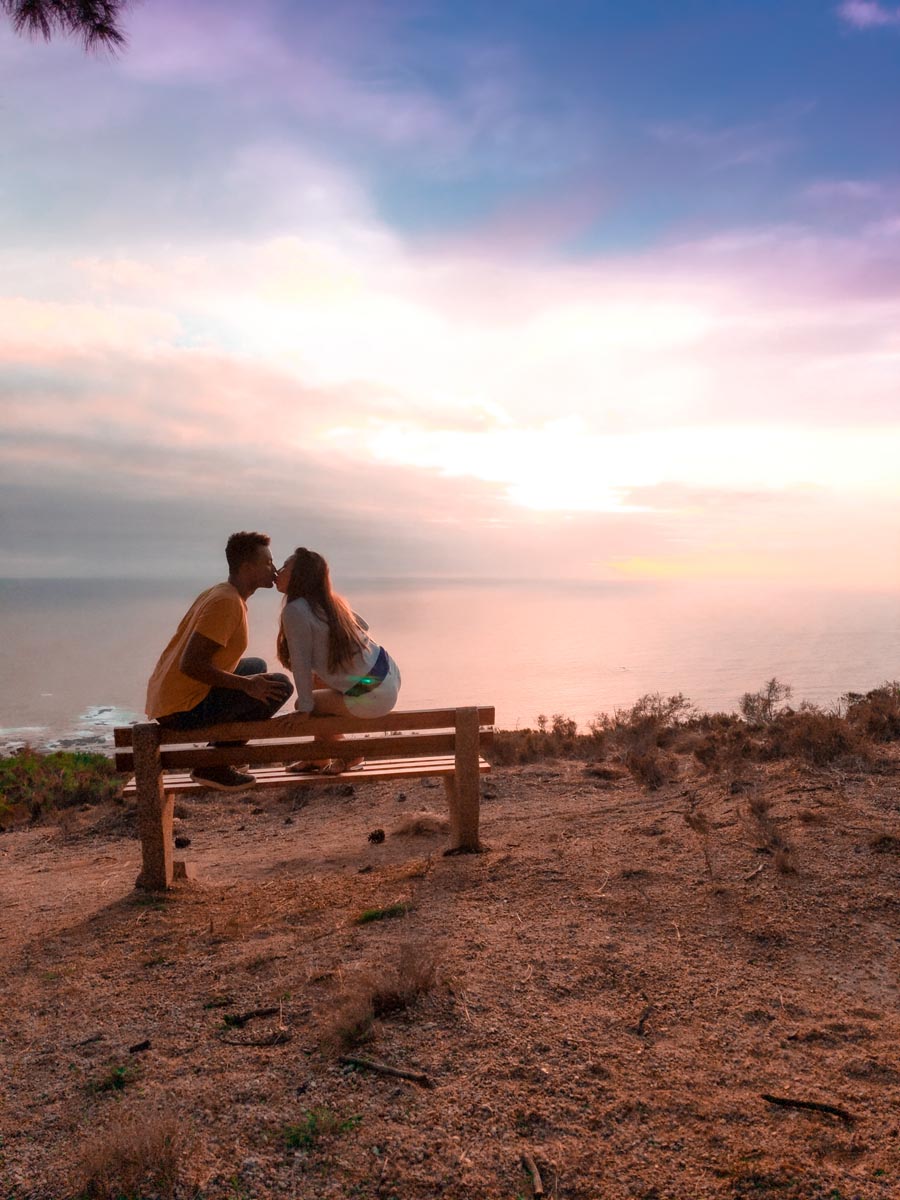
The path is easy to navigate and always buzzing with locals and tourists alike, making it a safe and serene way to enjoy the beauty of the Mother City.
If you’re driving, we’ve marked where you’ll find parking on our map. Otherwise, you can also get here without a car by hopping on an Uber.
Day 3: Visit Cape Point and Chapman’s Peak
Day 3 is for our nature and photography lovers! We’re heading to the southernmost tip of the Cape Peninsula to visit one of South Africa’s most famous natural attractions – Cape Point National Park. If it’s your first time in Cape Town, this is one day trip you simply can’t skip!
Cape Point National Park
This National Park is home to two iconic landmarks: Cape Point and the Cape of Good Hope.
It’s a must-visit for the jaw-dropping scenery, rich history, and some of the freshest ocean air you’ll ever breathe. Even the drive there is an experience, with winding coastal roads that will have you pulling over for photos every few minutes.
One of the highlights is to see where the Atlantic and Indian Oceans meet. While you can’t always see it, at certain times of the year, the currents and water colors create a visible divide marking where these two great oceans come together.
Bonus Tip: The best time of year to see this visible line between the Indian and Atlantic Ocean is during the summer months (December, January and February). During this time, the weather conditions are usually calm (i.e. not windy), and the sunlight enhances the contrast between the two oceans.
When you arrive, you’ve got two options for getting to the old lighthouse at Cape Point for those gorgeous panoramic views.
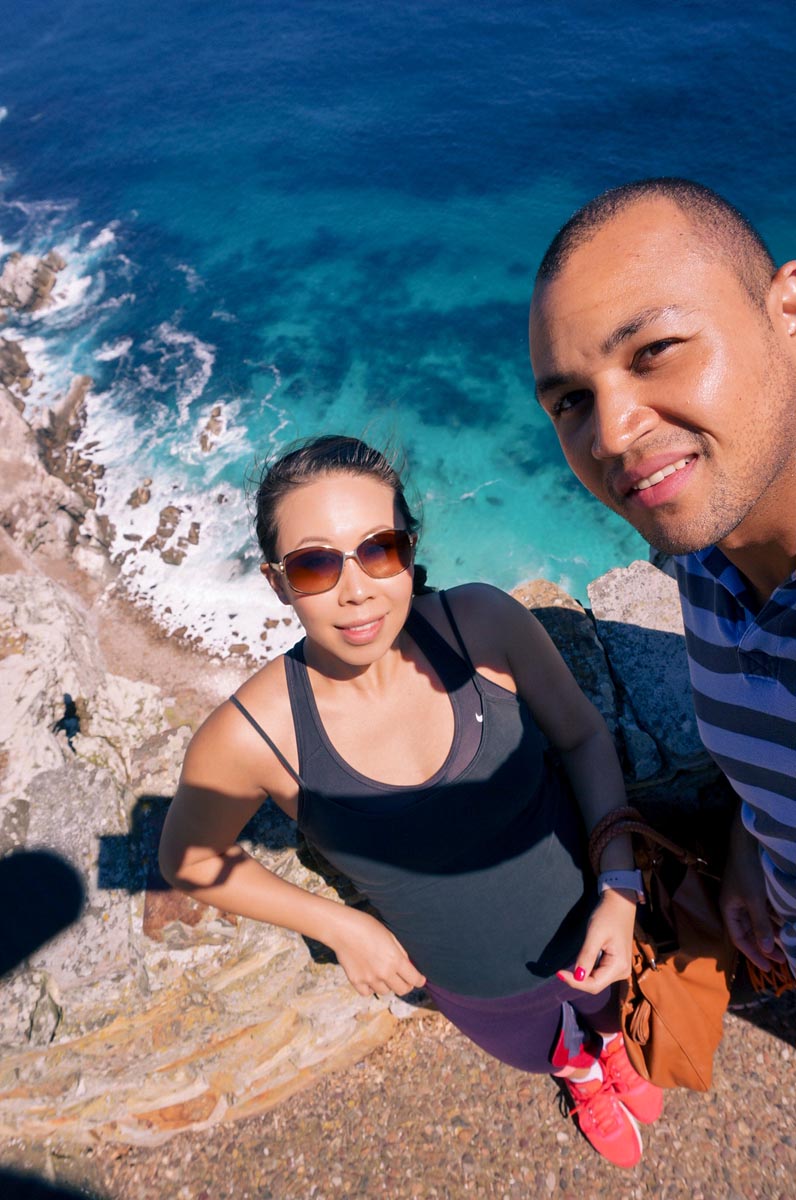
If you’re traveling with young kids or need a wheelchair-friendly option, hop on the Flying Dutchman Funicular. It will take you from the car park to the top in no time.
Option 2 is to hike there – our favorite. Honestly, it’s more a relaxing nature walk than a hike. It does involve a slight uphill climb, but the path is paved and well-maintained so anyone who is able to walk will easily manage.
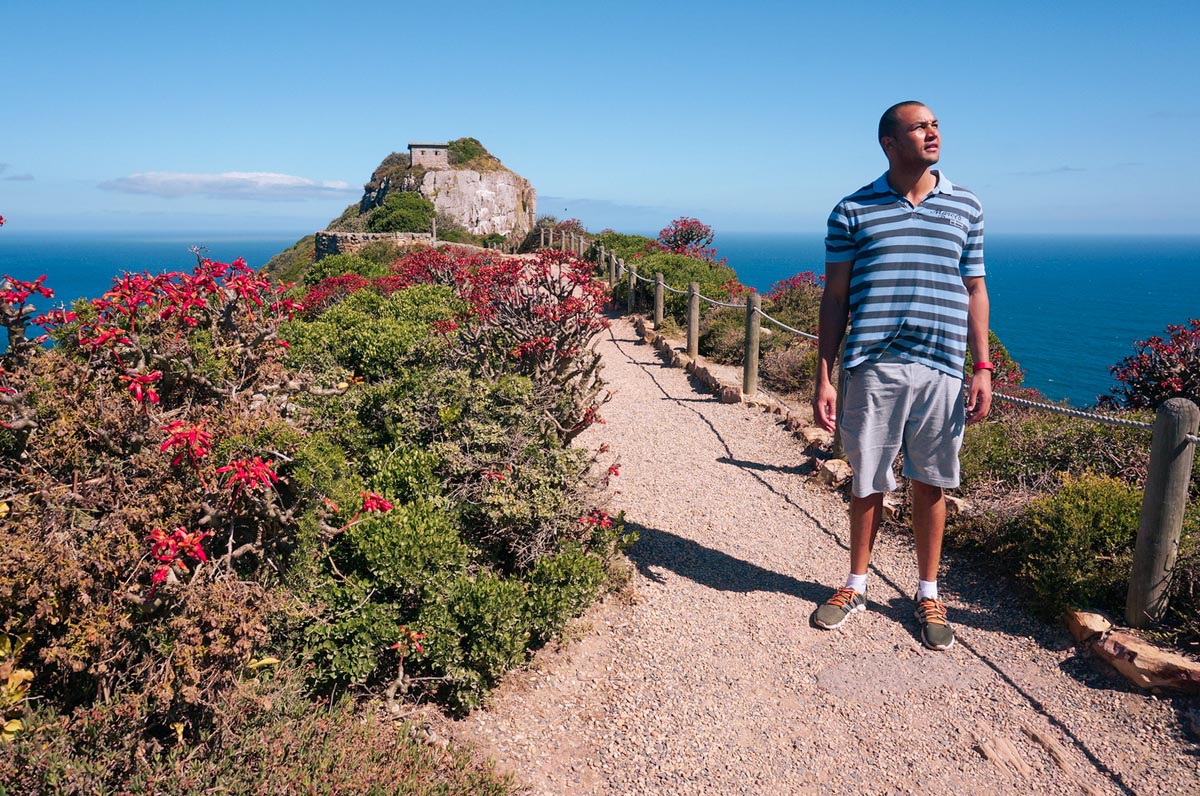
The walk itself is a treat. We love breathing in the aromatic scent of the fynbos (a unique local vegetation of South Africa), taking in the views, and keeping our eyes peeled for birds and wildlife.
If you’re lucky, you may even spot a dassie (what we South Africans call a rock hyrax) lounging on the rocks. These furry little guys might look like oversized guinea pigs, but here’s a fun fact: their closest relative is actually the African elephant!
Entrance Fee
There is an entrance fee to visit Cape Point National Park. For international travellers, the entry fee costs €23.5 ($25) for adults and €11.70 ($12) for children.
Cape Point entry tickets are cheaper for SADC (Southern African Development Community) and South African citizens. Make sure to bring your passport or ID if you’re eligible for cheaper entrance fees.
You can pay the entry fee at the Cape Point National Park Toll Gate when you arrive. Or buy your entrance tickets online.
We’d recommend buying your tickets online, just in case foreign bank cards aren’t accepted at the toll gate.
If you’re hopping on the funicular, you’ll have to buy tickets for that too. The return tickets cost €5.50 ($7) for adults, €2.90 ($3) for kids and €3.10 ($3) for pensioners.
Bonus Tip: We use Revolut or Wise bank cards when we travel. Besides free cash withdrawals, it’s also the cheapest way to convert and buy foreign currency for traveling. We’ve explained in detail how it works in our Revolut Travel Card guide.
How To Get To Cape Point Without A Car
There are two ways to get to Cape Point National Park from Cape Town.
By car, it’s an easy 70 to 80 minute drive.
Otherwise, you can also get there without a car by going with a guided tour. Here are some options:
Cape Point Ostrich Farm
This is a bonus stop for those who are following this Cape Town itinerary by car.
Just a short drive from Cape Point, the Cape Point Ostrich Farm is a fun stopover, especially if you’re traveling with kids or just want to see these fascinating birds up close.
You can learn more about what life’s like being an ostrich and even snap a selfie with one (if they’re feeling photogenic!).

The farm also has a reptile rehabilitation centre for those who love scales and creepy crawlies.
Sunset Drive Chapman’s Peak
Our final stop on day 3? An unforgettable sunset drive down Cape Town’s most breathtaking road – Chapman’s Peak Drive. Trust me, this is not just a road – it’s an experience.
This route is world-famous for good reason. This stunning stretch of road hugs the sheer cliffs of the Atlantic Coastline, offering dramatic mountain views on one side and the endless bounds of the ocean on the other.
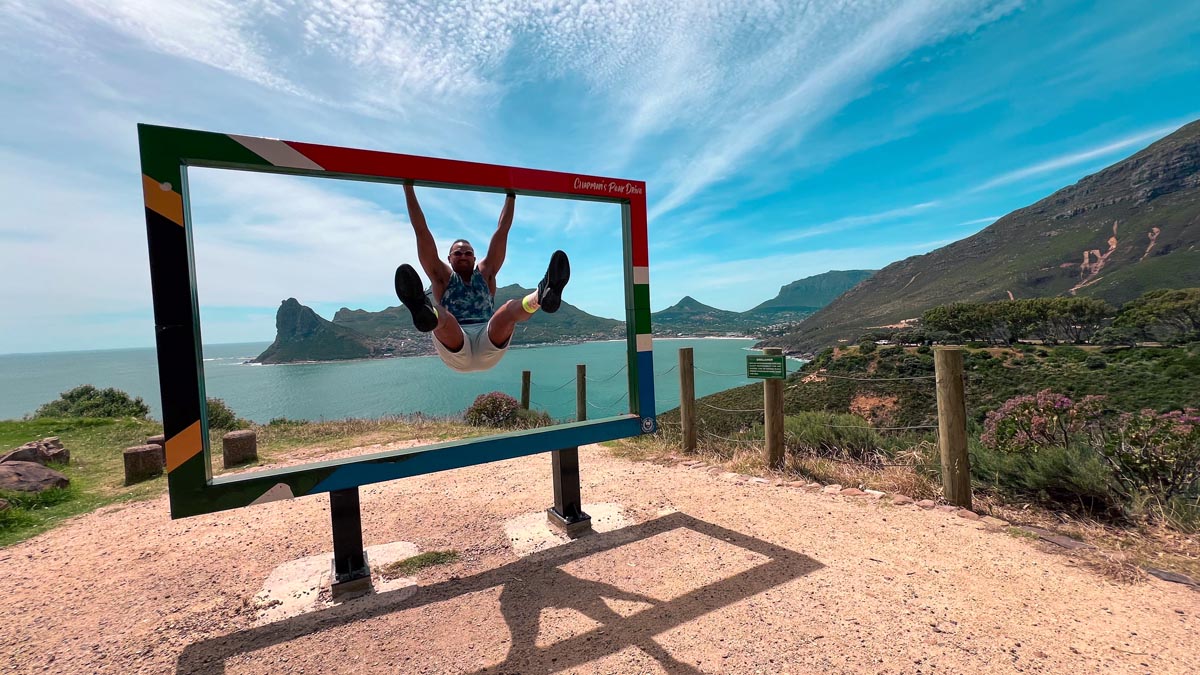
It’s pure magic when the setting sun casts its glorious, golden hues across this magnificent landscape. The perfect way to end another beautiful day in South Africa.
Before you head out, check the official Chapman’s Peak website to make sure the road is open. Chapman’s Peak Drive may close during bad weather or if there’s been a rockfall (which happens from time to time).
And here’s a local insider’s tip: start the Chapman’s Peak drive from the Muizenberg side towards Sea Point direction.
Why? Because you’ll be on the left side of the road, making it so much easier to stop at the viewpoints without crossing traffic. Trust me, you’ll want to pull over – the views are too good not to!
If you’re not sure what direction that is, don’t worry – I’ve marked exactly where to start the Chapman’s Peak Drive and where it ends on our custom map.
This drive is the kind of memory that stays with you forever. So take your time, soak it all in, and don’t forget your camera.
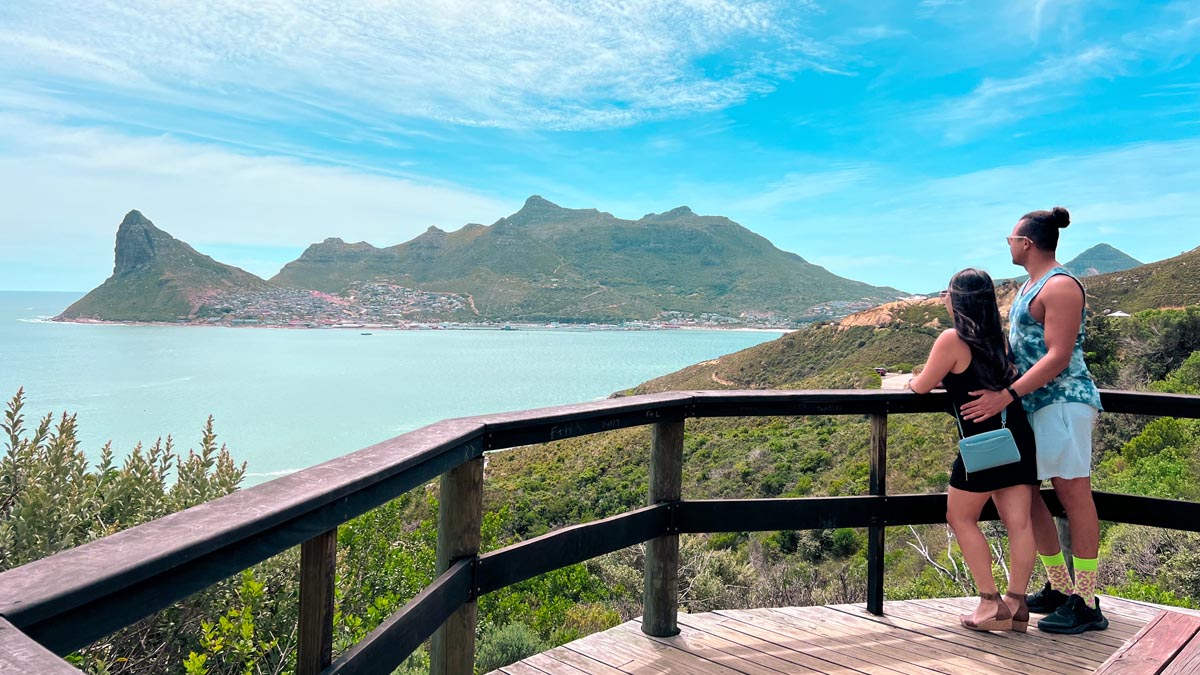
Bonus Tip: You have to pay a small toll fee for Chapman’s Peak Drive. It costs R64 (€3.30 or $4) per vehicle. Have this toll fee in cash just in case foreign credit and debit cards aren’t accepted.
How To Do Chapman’s Peak Without A Car
Chapman’s Peak Drive is best done with your own rental car. But if you don’t have one – don’t worry. You can still experience Chapman’s Peak Drive without a car.
There are guided tours for Chapman’s Peak, but they’re part of full day tours that combine other things to do and see in Cape Town.
Here are the options:
Cape Town 4 Day Itinerary
If you’re spending 4 days in Cape Town, then we’d do the 3 day travel itinerary and add one of these options:
- Explore Hout Bay and visit Seal Island (best option for families with kids)
- Spend the day wine tasting on the Constantia Wine Route
Day 4: Lion’s Head Hike and Hout Bay
Day 4 of this itinerary has a little bit of everything. A short but stunning sunrise hike for adventure lovers. A chance to admire birds, monkeys, and seals for the animal lovers. And to end the day, a relaxing sunset stroll (or even a swim) at Llandudno Beach for the beach lovers.
Lion’s Head Sunrise Hike
This one’s for the early birds – a sunrise hike up Cape Town’s most iconic peak, Lion’s Head. Start your morning on a high (literally!) with jaw-droppings views of the city and the sun rising up in the distance.
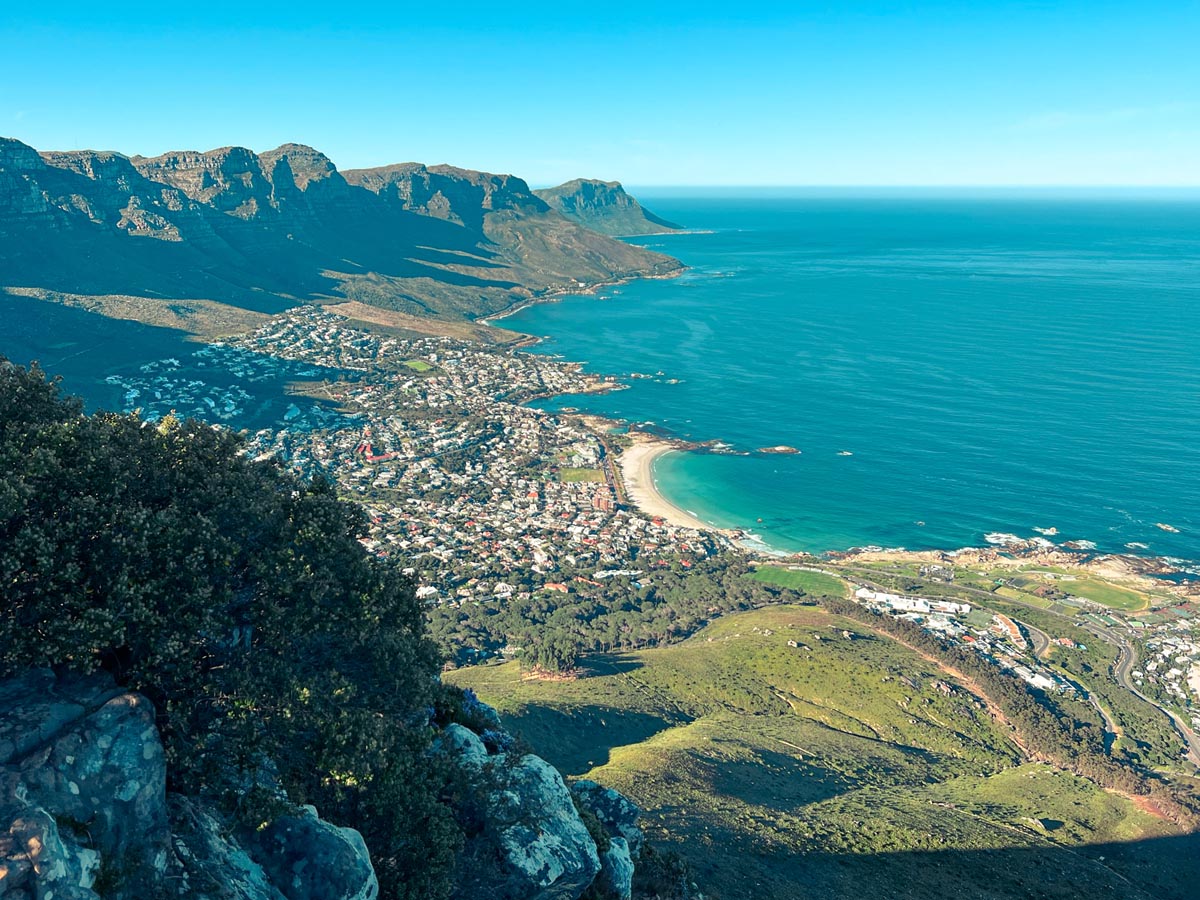
There are two main hiking routes to get up Lion’s Head.
The first option is faster but more adventurous. This route has some exciting (and slightly challenging) sections where you’ll need to use chains and staples to get up rocks. These sections are very short – you’ll need a little bit of courage but no technical hiking or climbing experience (or superhuman upper body strength) is required.
If that sounds a bit too intense, no worries! The second option is a slightly longer, more gradual route. Basically, you walk around the circumference of Lion’s Head until you reach the summit. No chains, no climbing.
Both routes are rated moderate in difficulty, but they do require a bit of fitness and a head for heights.
On average, it takes about 45 minutes to an hour to reach the top, depending on your pace and which route you take.
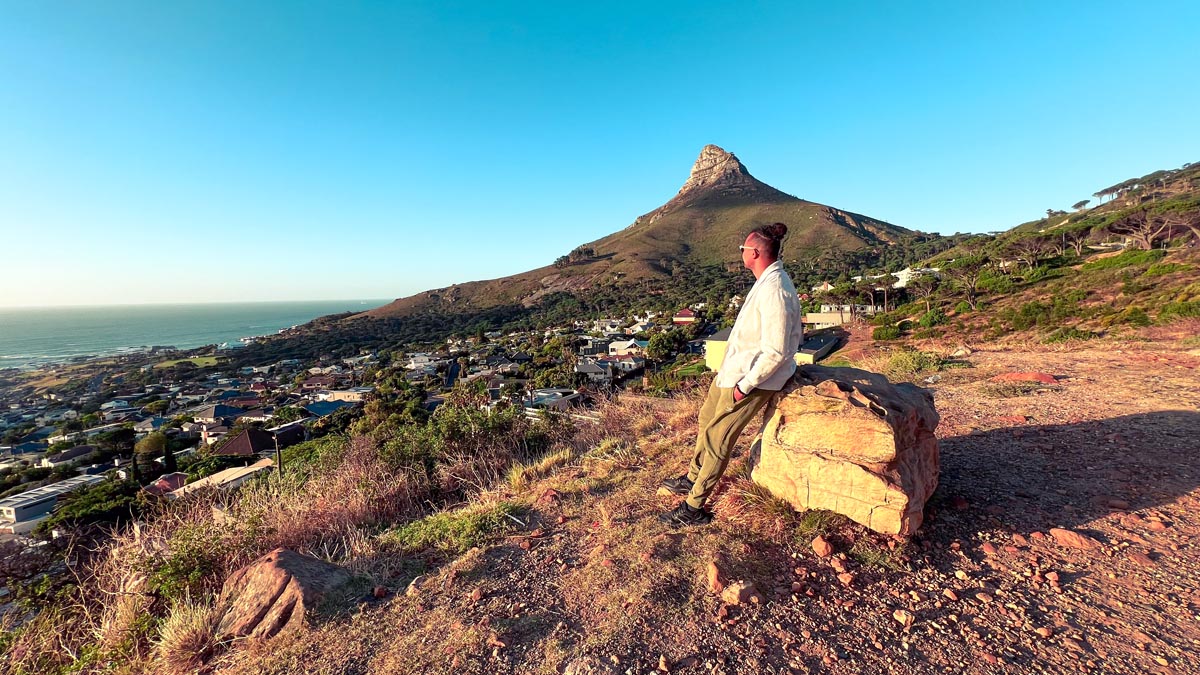
As for safety, hiking Lion’s Head at sunrise is generally considered safe because it’s a very popular trail with plenty of people heading up early to catch those views. That being said, make sure you stick to the main paths, avoid hiking alone and keep your valuables out of sight.
The payoff at the top? Totally worth it!
Lion’s Head Guided Hikes
For those of you who’d rather play it safe, here are some great guided hiking tours up Lion’s Head:
How To Get To Lion’s Head Hike Starting Point
Getting to the start of the Lion’s Head hike is easy.
If you’re driving, head towards ‘Lion’s Head Hike Parking’ on Google Maps – it’ll take you right to Signal Hill Road where the hike begins.
There’s a small parking lot at the trailhead, but let me warn you: it fills up fast. Especially at sunrise and sunset. Otherwise, you can also park along the road. Just make sure you’re out of the way.
You can also get to the Lion’s Head trailhead without a car.
You can take the public MyCiti Bus from the Atlantic Seaboard to the Kloof Nek bus stop. Walk uphill for 15 minutes and voila – you’re at the start of the hike.
Alternatively, you can also get Uber to drop you off at the Lion’s Head hike parking area.
Bonus Tip: If you’re driving, make a quick stop after the hike at Camps Bay Viewpoint (exact spot on our map) for a bird’s eye view of Camps Bay and a couple of selfies.
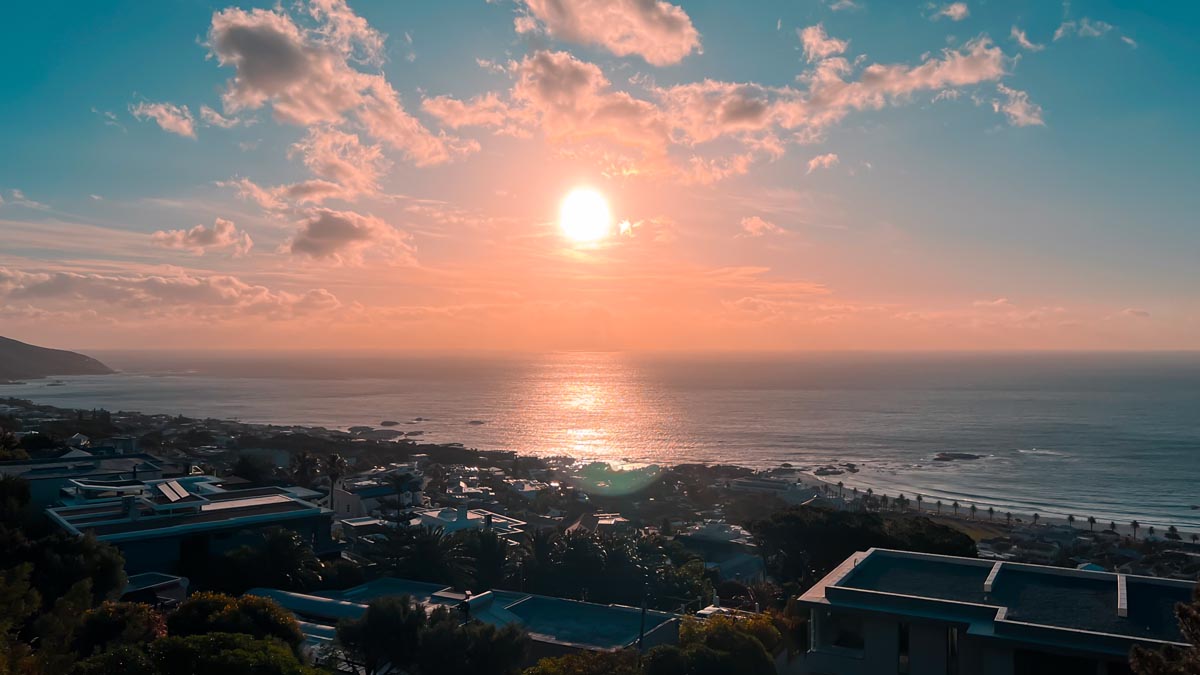
World of Birds Wildlife Sanctuary & Monkey Park
This is the kind of place where kids squeal with delight and adults secretly have just as much fun if not more.
The World of Birds Wildlife Sanctuary & Monkey Park is one of the largest bird parks in Africa, home to over 3,000 birds and small animals. From colorful, exotic birds to handsome but cheeky monkeys, there’s something here to entertain every kind of animal lover.
The real highlight? The large walk through monkey jungle, where you can get up close and personal with playful squirrel monkeys as they swing above you. And if you’re really lucky, maybe even hop on your shoulder!
Don’t worry, they’re harmless. Just keep an eye on your snacks!
Domestic Animal Rescue Group (DARG)
We’re adding this as a bonus on our Cape Town itinerary for the serious animal lovers out there.
It’s not far from the World of Birds Wildlife Sanctuary and if you’re an animal lover like us, a visit to the Domestic Animal Rescue Group (DARG) is sure to tug at your heartstrings.
DARG is a non-profit organization dedicated to rescuing, rehabilitating and rehoming dogs and cats in need. It’s a heartwarming spot where you can meet some furry friends, lend a hand as a volunteer, or even adopt a new family member.

Whether you’re popping in for a cuddle session or looking to leave a donation, DARG is a beautiful reminder of the good that is happening in the world.
Explore Hout Bay Harbour
Next on the itinerary – Hout Bay Harbour.
Take a leisurely stroll from Hout Bay beach, all the way down along the harbor. The local fisherman should be done selling their daily catch by this time of day. But if you’re lucky, you might see a couple of playful seals swimming around the harbor or basking in the sun.
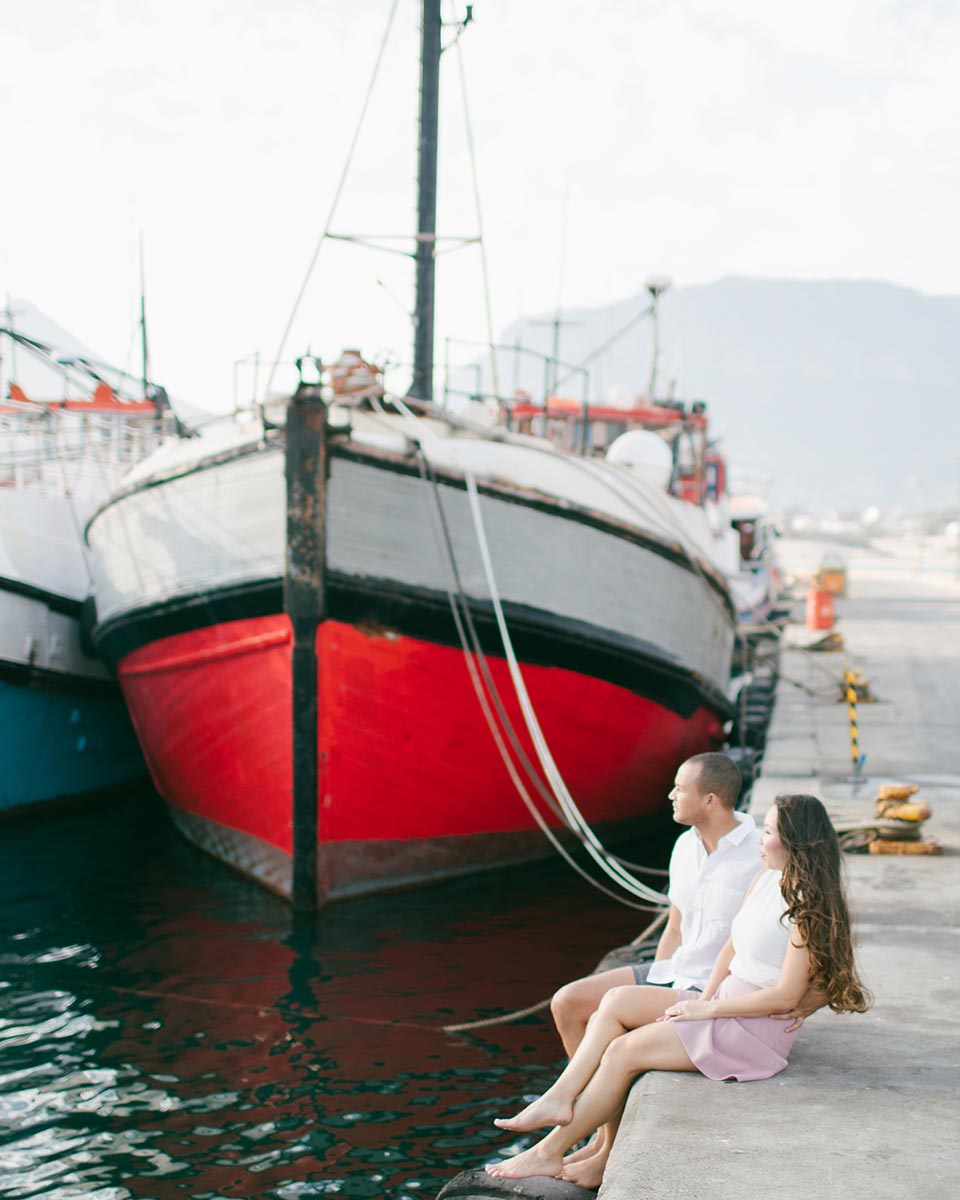
Visit Seal Island
If the harbor’s ‘official greeters’ (aka the seals) are not there, don’t be disheartened. You can always hop on a boat trip to Seal Island and go find them there. They’ll be hundreds of Cape fur seals lounging on the rocks or diving into the waves there.
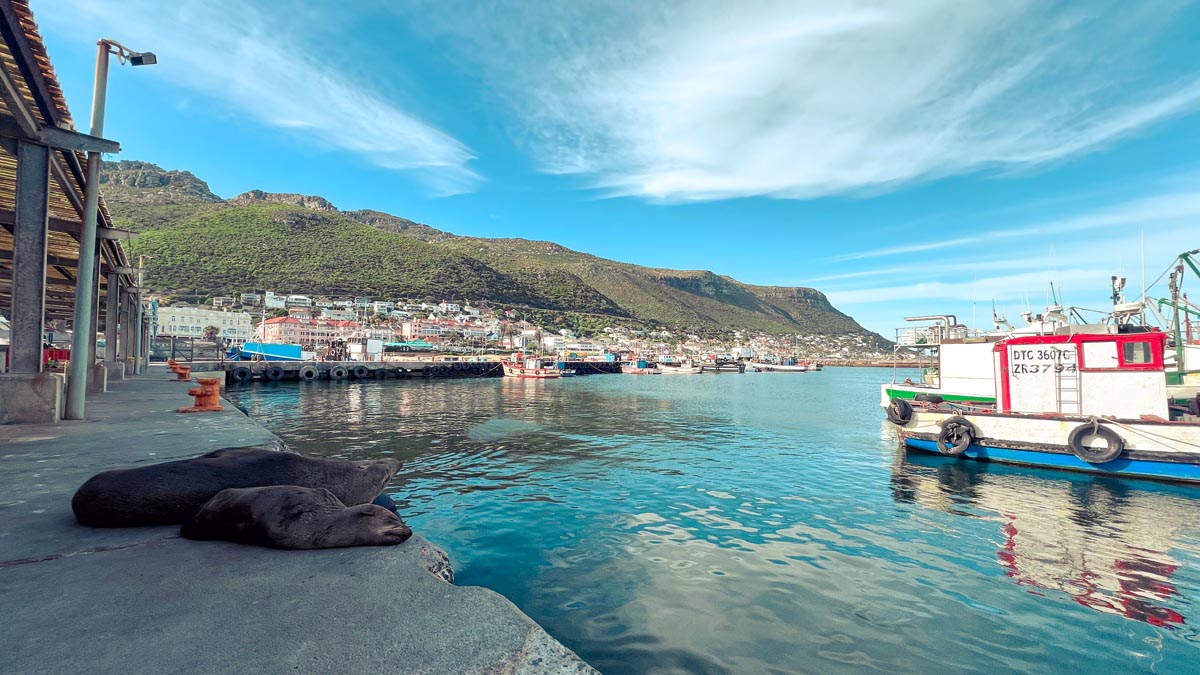
Otherwise, wrap up your visit at the Bay Harbour Market if you’re visiting on the weekend. It’s a lively but laid-back spot filled with local crafts, live music and delicious street food.
Llandudno Beach
Our final stop on day 4 of this itinerary is the beach, of course!
And if you’re wondering why it took us 4 days to go to the beach, well… The beaches in Cape Town are beautiful, but the water is COLD – even in summer. It’s the Atlantic Ocean remember? The one where Jack froze to death to save Rose (any Titanic fans?).
Most locals just tan on the beach and MAYBE go in for a quick dip on a hot day. But if you’re coming from a cold country (i.e. Germany, Norway – basically northern Europe) then swimming in Cape Town shouldn’t be a problem for you.
We managed to swim here after living in Germany for 6 years (and counting). Isn’t it amazing how the body acclimatizes?
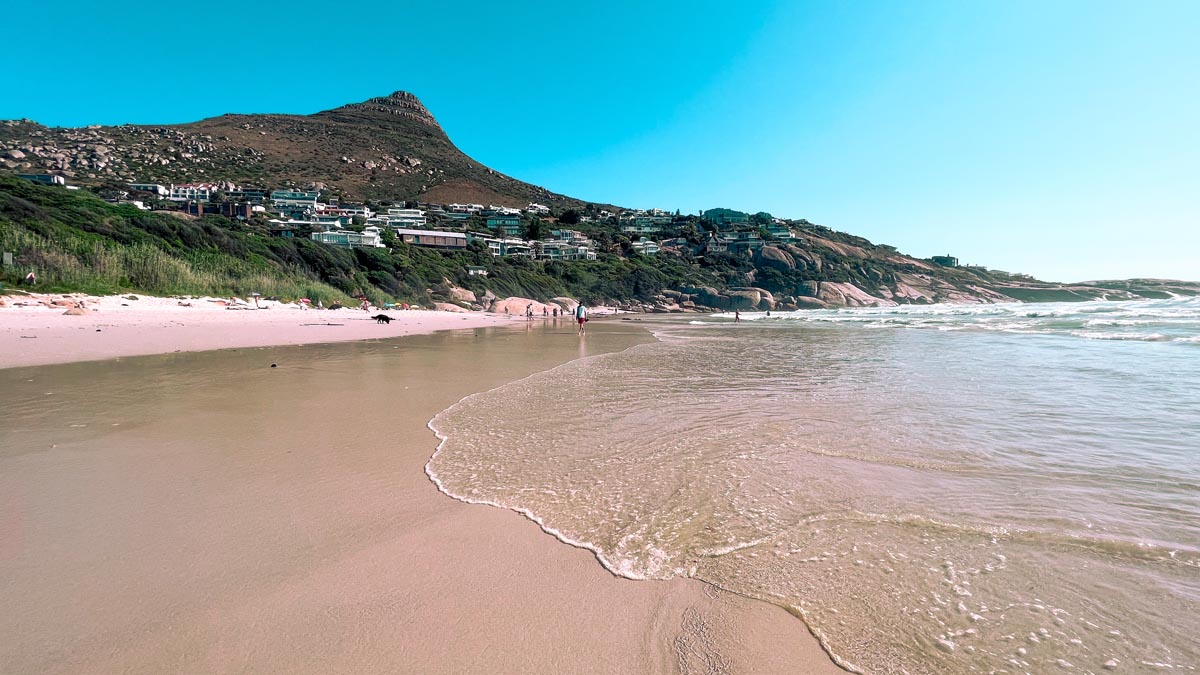
Llandudno Beach is no exception. Water temperatures here range between 19 degrees Celsius (or 67 Fahrenheit) in the height of summer, to 15 degrees Celsius (59 Fahrenheit) in winter.
That doesn’t change the fact that Llandudno Beach is one of our all-time favorite beaches in Cape Town – and for good reason.
With soft white sand, waves crashing in the distance, and the fresh salty breeze filling the air, it’s the kind of place that feels like a little slice of heaven. Surrounded by dramatic boulders and mountains, this spot is simply out of this world, especially at sunset.
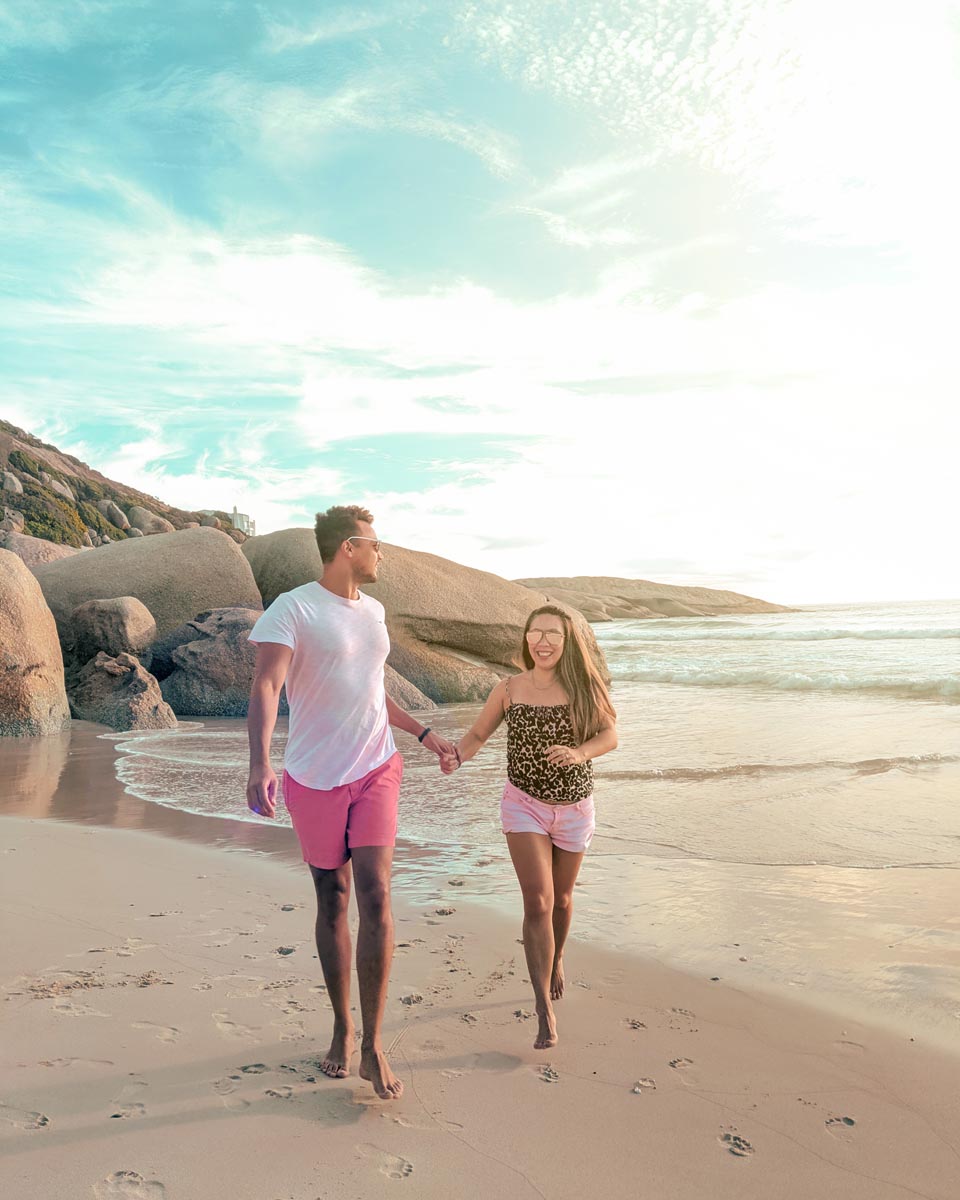
It’s a popular spot for locals. Surfers come here to chase waves, residents come to walk their dogs, and families and friends (like us) just come here to enjoy a stroll on the beach.
If you’re facing the ocean, make sure to wander between the boulders on the right for a peaceful walk and some Instagram-worthy views.
Sandy Bay
If you’re looking for a ‘naturalist’ alternative to Llandudno Beach, then Sandy Bay is the answer.
Sandy Bay is one of the few nudist-friendly spots in Cape Town. It’s a rare gem considering the fact that nude beaches aren’t really common in South Africa due to safety reasons and cultural customs.
Getting to Sandy Bay is part of the adventure. It’s not accessible by car, so you’ll need to take a short 15-20 minute walk from the southern end of Llandudno (we’ve marked exactly where on our custom map).
The trail is a bit rocky and uneven, but absolutely worth it for the secluded, untouched beauty that awaits you.
Once you arrive, you’ll be greeted by soft white sand, blue waters, and boulders that offer privacy and a natural shield from the wind.
Even if you’re not keen to bare it all, Sandy Bay is an amazing alternative to Llandudno for anyone who needs a little alone time. Just don’t forget sturdy shoes for the walk and sunscreen – you’ll want to spend hours at this hidden gem of a beach!
How To Explore Day 4 Without A Car
We promised we would show you how to explore Cape Town without a car, so here goes.
There’s quite a lot to see and do on day 4. You could, of course, just Uber to all the places.
But if you’re looking for a cheaper option, then we’d recommend getting the 2 day Cape Town Hop-On Hop-Off Bus tickets.
The Hop-On Hop-Off bus will take you to World of Birds, Hout Bay Harbour and drop you off back in the Atlantic Seaboard area. From there, you can head back to your hotel or take the public bus to Llandudno Beach.
Why 2 days? Because you’ll need it for the next part of the itinerary.
Cape Town Itinerary For 5 Days (Without A Car)
If you only have 5 days in Cape Town, then you should DEFINITELY designate a day for wine tasting!
There are a few wine regions in and around Cape Town. We’d recommend wine tasting the Constantia Wine Route if you want to avoid traveling 60 minutes or more outside the city.
Otherwise, you can also do the famous Franschhoek Wine Tram or a day trip to the wine regions of Stellenbosch and Paarl on day 5 of this itinerary.
Day 5: Southern Suburbs and Constantia Wine Route
It would be a sin to visit Cape Town and NOT sample its world-famous wine. But first, let’s explore some highlights of the Southern Suburbs before it’s wine o’clock.
Kirstenbosch Botanical Gardens
Kirstenbosch Botanical Garden is a must-visit for nature and photography lovers.
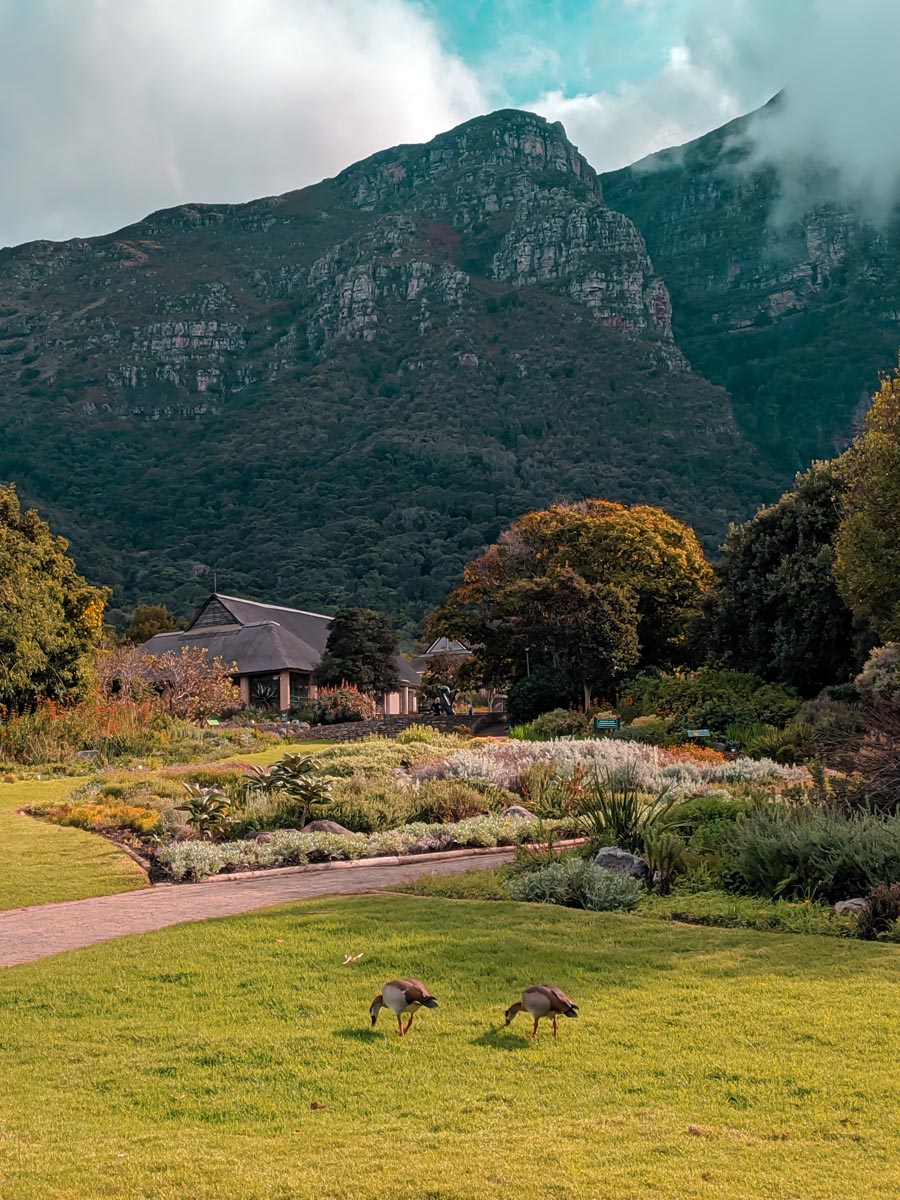
It’s famous for being the largest botanical garden in Africa. Here, you’ll get to see South Africa’s indigenous plants and flowers in all their glory – including the iconic protea, the country’s national flower.
The best time to visit is during spring and summer (September to March) when the gardens are in full bloom. But honestly, Kirstenbosch is a stunner all year round.
Don’t miss the Boomslang (means ‘tree snake’ in Afrikaans) Canopy Walkway. Aptly named for the curved bridge that winds through the treetops with magnificent views of the gardens and Table Mountain in the background.
The Kirstenbosch Conservatory is another highlight you shouldn’t miss. Here, you’ll find unique plants from South Africa’s desert and arid regions.
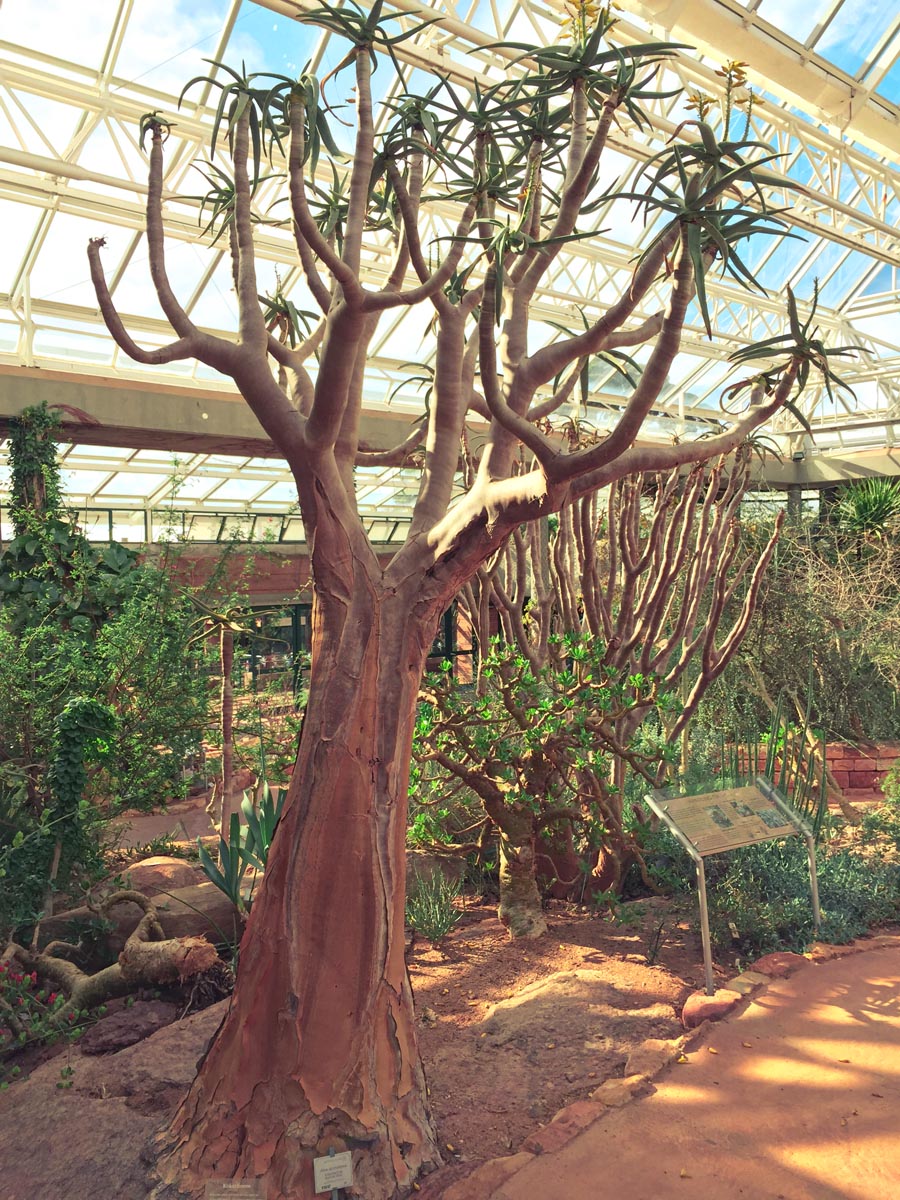
For the music lovers, the Kirstenbosch summer concerts are legendary! There’s nothing more magical than lounging on the lawns with a picnic and wine, live music filling the air, and Table Mountain as the backdrop.
Check out the Kirstenbosch summer concert schedule ahead of time to avoid disappointment. If you’re lucky, you’ll get to see The Cape Town Philharmonic Orchestra or Mi Casa perform.
Rhodes Memorial
This is a bonus stop (and a hidden gem) for those of you following this Cape Town itinerary by car.
Rhodes Memorial is more than just a beautiful viewpoint – it’s a slice of South Africa’s history. As you may have guessed, this memorial was built to honor Cecil John Rhodes – a controversial figure and former Prime Minister of the Cape Colony during colonialism.
The memorial itself is a bit run down. But it’s still worth the visit for the serene atmosphere and beautiful views.
Lunch at Constantia Uitsig
It’s almost wine o’clock! But first – lunch. And there’s no better place to enjoy lunch than at Constantia Uitsig.
Not only are there plenty of restaurants and cafes to choose from but there’s plenty to do for both young and ‘older’.
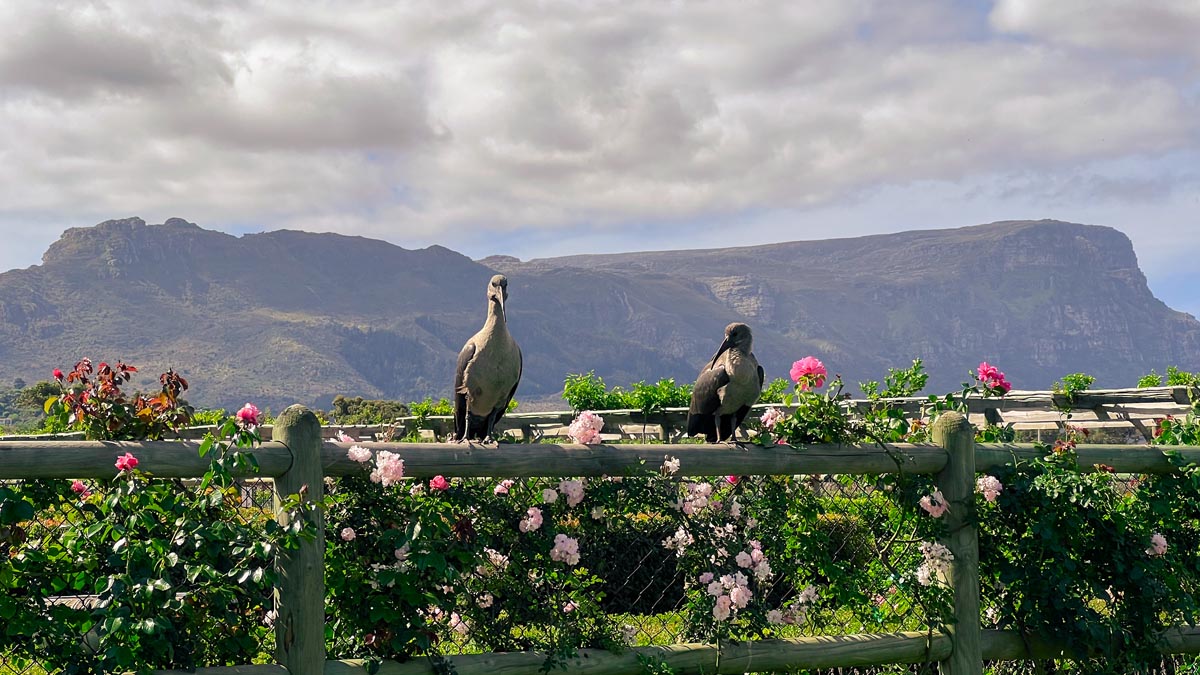
Kids will love the bike park, exploring Heritage Gardens, and eating ice cream (try Kirsten’s Kick Ass Ice Cream). Adults can enjoy a pre-wine tasting, wine tasting (HA!), a delicious food experience at one of the restaurants, or a romantic picnic on the lawn.
Constantia Wine Route
And now for THE highlight of day 5 – wine tasting!
The Franschhoek Wine Tram may be more Instagram-famous. But the Constantia Wine Route is where Cape Town’s wine story actually began.
Here’s where you’ll get the chance to drink from some of the oldest vineyards in South Africa. If you’re thinking Groot Constantia, Buitenverwachting, and Klein Constantia, you’re on the right track!
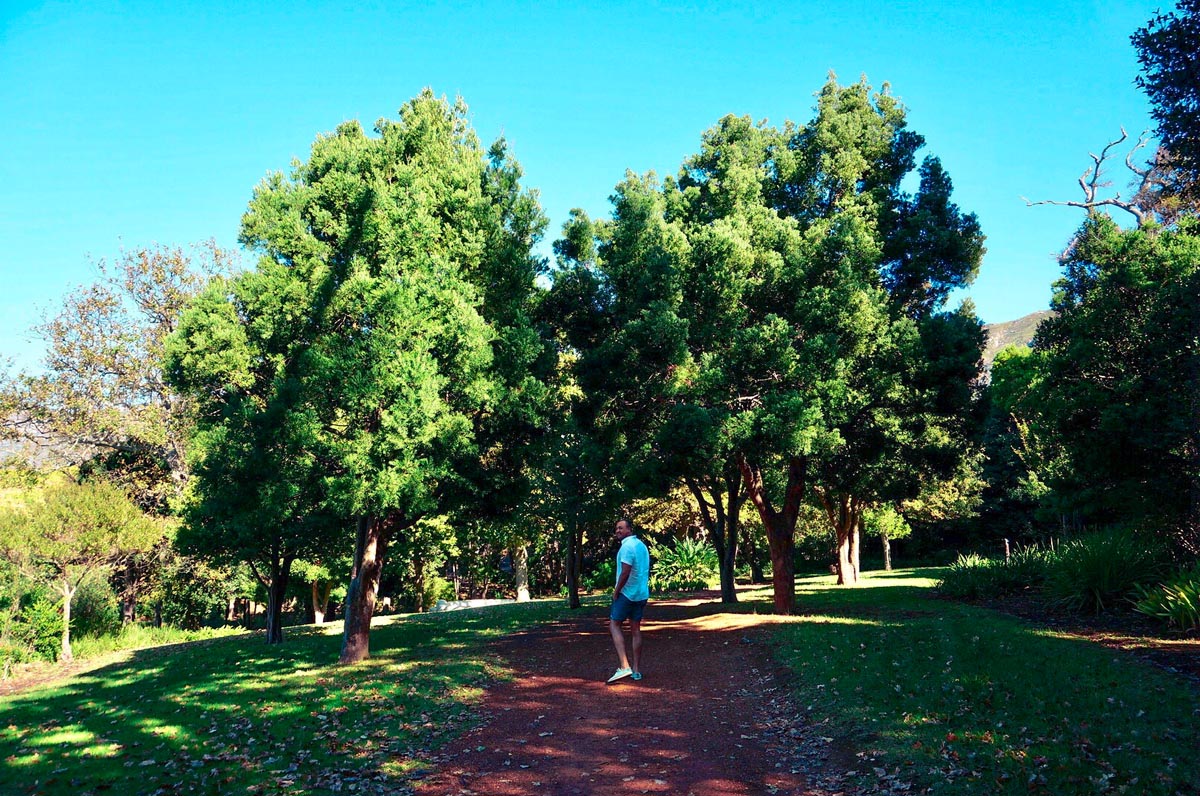
There are alot of wine farms along the Constantia Wine Route, so if you don’t know where to start, I don’t blame you! Let us help you narrow it down.
You can’t go wrong starting at Groot Constantia. It’s the oldest wine estate in the country, famous for its award-winning red wines like their Shiraz and Pinotage.
In case you didn’t know, Pinotage grapes originated in South Africa and most of the world’s Pinotage wine is produced here. Do yourself a favor and make sure to try it.
If you prefer white wine, head over to Constantia Glen. Their crisp Sauvignon Blanc is out of this world and the stunning panoramic views from their vineyard doesn’t hurt either.
Klein Constantia is another winery great for white wine lovers. They too make an exceptional Sauvignon Blanc. But if you prefer sweet wine, then you must try their world-famous dessert wine – Vin de Constance.
And for those who don’t discriminate and love both white and red wines (like me), then don’t miss Buitenverwachting. Their Sauvignon Blancs are often considered some of the best in South Africa. But they produce some stellar reds too. We love their Cabernet Sauvignon blends and Merlot.

There are many more wine farms to visit. If you prefer to follow a ready-made itinerary that will take you to 7 wineries along the Constantia Wine Route (followed by an unforgettable fine dining experience), make sure you get our custom map.
Bonus Tip: If you’re a self-anointed wine connoisseur like me, then you may want to get your hands on the Platter’s South African Wine Guide. It’s like having a local wine expert in your pocket, with insider tips, ratings, and everything you’ll need to find the best wine in South Africa.
How To Get To Constantia Wine Route Without A Car
Unlike the Franschhoek Wine Route, there’s no wine tram here (unfortunately!). So you’ll need to draw straws to decide who the designated driver will be. Or better yet, call an Uber so everyone can have a good time.
Otherwise, if you’ve followed our advice and snagged the 2 day Hop-On Hop-Off bus ticket, you’ll be dropped off at 3 of the top wine farms on this route, so you can sit back, sip and enjoy the ride.
6 Day Cape Town Itinerary Without A Car
This 6 day itinerary is perfect if you’re not planning to rent a car. You’ll still get to experience the very best of Cape Town—minus the scenic False Bay coastline and the adorable penguins at Boulders Beach…
If that’s a deal breaker for you, then take our 5 day itinerary and visit False Bay and Boulders Beach on day 6 instead. Otherwise, get the full local experience and follow our Cape Town itinerary as is.
Day 6: From Townships to Clifton
On day 6 of this itinerary, we’re taking you to get a true local experience of Cape Town.
While the Mother City has earned its spot as one of the best cities in the world, the reality is more complex… Cape Town is a city of contrasts – stunning landscapes and vibrant culture, but also stark social and economic divides.
Although South Africa has been a democracy since 1994, the aftermath of Apartheid is still felt today. To really get a truly authentic experience of Cape Town, it’s important to explore both sides of the coin and today’s itinerary does just that.
Township Tour
A guided township tour is one of the most eye-opening and educational experiences you can have in Cape Town.
While it’s often called a ‘tour’, it’s important to understand that this isn’t a tourist attraction – it’s a glimpse into the reality of how many South Africans live. These communities are rich in culture, resilience, and history, but they also show the deep inequalities that still exist in the country today.
Joining a township tour is a chance to learn about South Africa’s past and present from local guides who share their personal stories and perspectives. Remember to be mindful and respectful during your visit. Keep in mind that this is someone’s home, not a stage.
While you’re here, you can support small local businesses by buying handcrafted souvenirs or getting something to eat. It’s a meaningful way to connect with Cape Town’s people while giving back to the community.
Here’s an important safety tip. Don’t do a township tour anywhere in South Africa without a local guide. It’s not safe. Even locals like Michael and I will only explore the township with a guide only.
Here are some options:
Lunch at Mojo Market
Next on the itinerary – lunch! And lunch at Mojo Market is an absolute must if you love variety and good vibes.
This vibrant indoor food market in Sea Point is a foodie’s dream. There are over 30 food vendors serving up everything from sushi and wood-fired pizza, to Cape Malay curry and freshly shucked oysters.
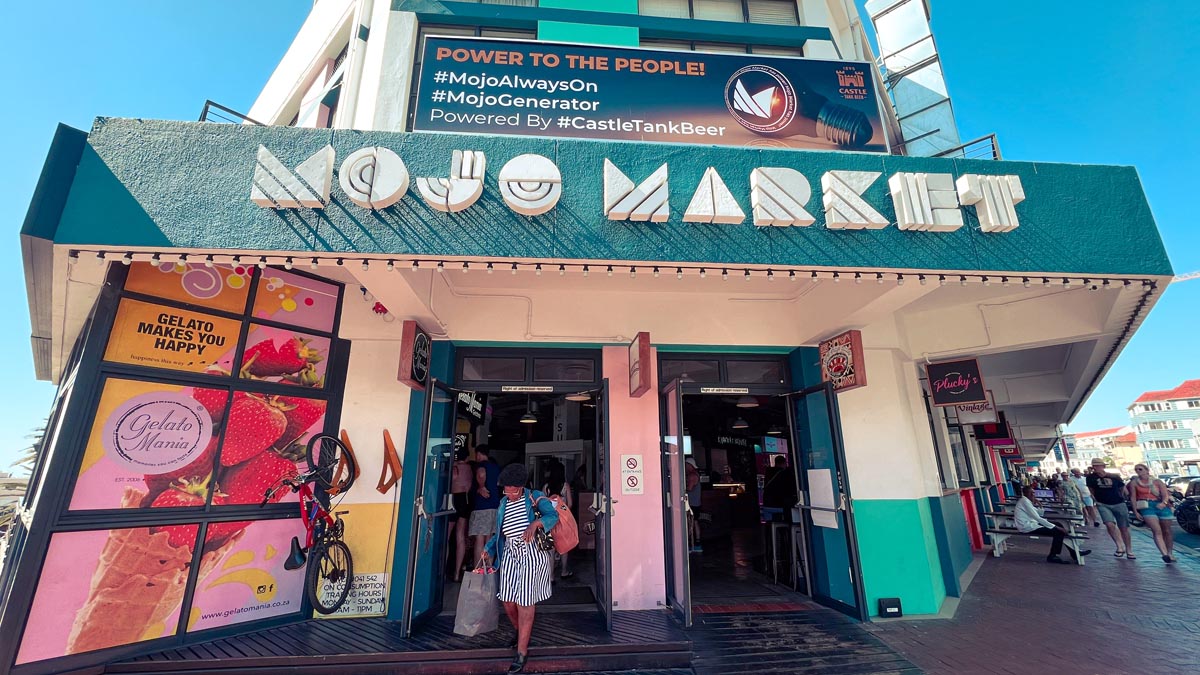
Feeling indecisive? We know how that feels! Grab a bit of everything and share – it’s the perfect excuse to sample your way through all the stalls.
If you haven’t tried South Africa’s version of champagne – Methode Cap Classique (or MCC) – make sure you try it at Mussel Monger Oyster and Mussel Bar. Their Villiera MCC pairs oh-so-well with their fresh oysters or steamed mussels.
Bonus Tip: You can easily get to Mojo Market without a car by taking the MyCiti public bus from the Atlantic Seaboard area. Otherwise, grab an Uber and ask him or her to drop you outside. Sea Point is lively but it can feel dodgy depending on your safety tolerance levels.
Seapoint Promenade
After lunch at Mojo Market, stretch your legs with a walk or cycle along the famous Sea Point Promenade.
This scenic coastal walkway is a favorite hangout and workout spot for locals, and it’s easy to see why. It’s the perfect place to enjoy some fresh ocean air and sunshine while taking in gorgeous views of the Atlantic and Lion’s Head in the backdrop.
For those feeling ambitious, the full length of the promenade runs from Mouille Point near Cape Town Stadium all the way to Bantry Bay – a solid 5.5km (3.4 miles) one way or 11km (6.8 miles) round trip. That’s about an hour if you’re walking one way or two hours if you’re keen to loop back.
Not feeling like a full-on ‘walk out’? Don’t worry – you can also rent a bicycle at Up Cycles Sea Point and cruise the promenade instead.
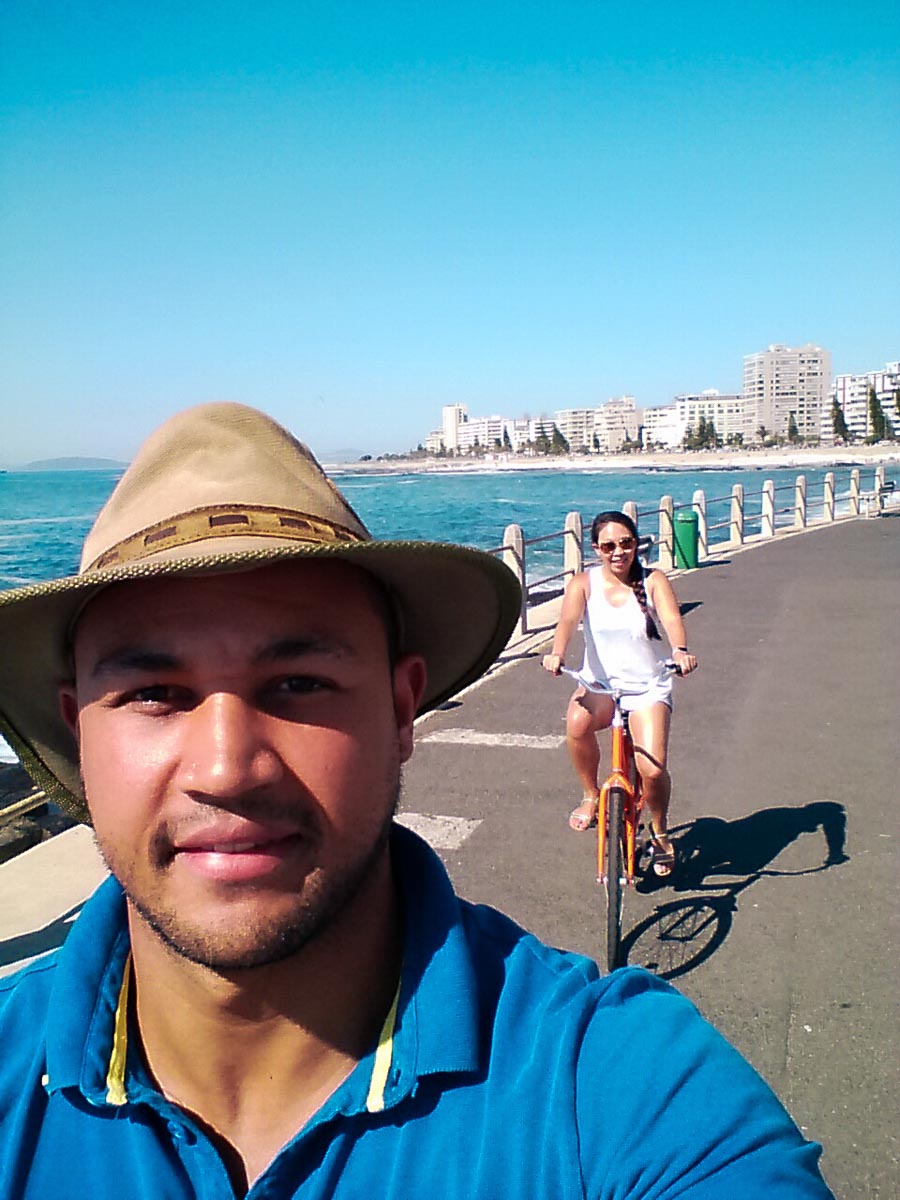
It’s a fun and breezy way to cover more ground. Plus, it’ll save you time and energy to enjoy the beaches coming up next on the itinerary.
Bonus Tip: Sea Point Promenade is a fantastic and safe spot for a daytime stroll, but come nightfall, it’s best to give it a pass for safety reasons.
Swim at Clifton Beaches
We’re ending day 6 at the ultimate beach destination in Cape Town – Clifton Beach.
If you’re looking for unrivaled luxury in Cape Town, Clifton is it. This is where the city’s wealthiest residents call home, with some of the most breathtaking (and expensive) houses you’ll ever see perched on the mountainside.
But it’s not all about mansions – Clifton’s real gem is its beaches, and trust me, they live up to the hype.
Clifton doesn’t just have one beach – it’s got four, each with its own unique vibe.
Clifton 1st Beach is a quieter, less crowded spot, popular with surfers and dog walkers. Clifton 2nd Beach attracts a more laidback crowd, often families or groups of friends looking for a chilled beach day.
Clifton 3rd is a favorite with the LGBTQ+ community, known for its friendly, welcoming vibe. Then there’s Clifton 4th, the star of the show – famous for its powdery white sand and sparkling turquoise waters. It’s easily the most popular of the four beaches, which means it’s also the most crowded.
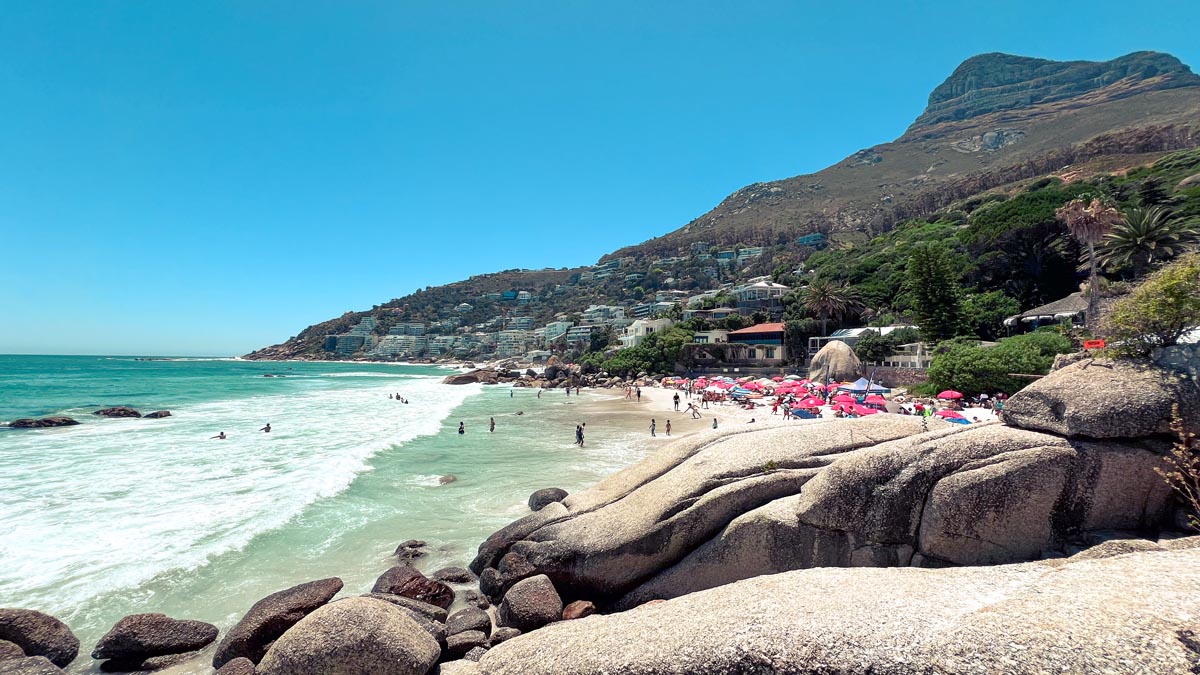
But let’s be real – no matter which beach you pick, that water is going to be icy cold. If you’re brave enough to go for a swim, you’ll get major bragging rights (and maybe lose feeling in your toes for a bit).
Otherwise, it’s the perfect place to relax, sunbathe, and enjoy some of the most beautiful beach views in the world.
Tips For Visiting Clifton Beaches
Clifton’s beaches are naturally sheltered from the strong south-easterly wind Cape Town is notorious for. Making these some of the best beaches to go sunbathing and relaxing even on the windiest days.
But these gorgeous beaches come with a catch – they’re no secret!
On weekends or during peak travel months (December, January, and February), they get VERY busy. If you’re looking for a quieter experience, visit midweek or aim to arrive before noon to beat the crowds.
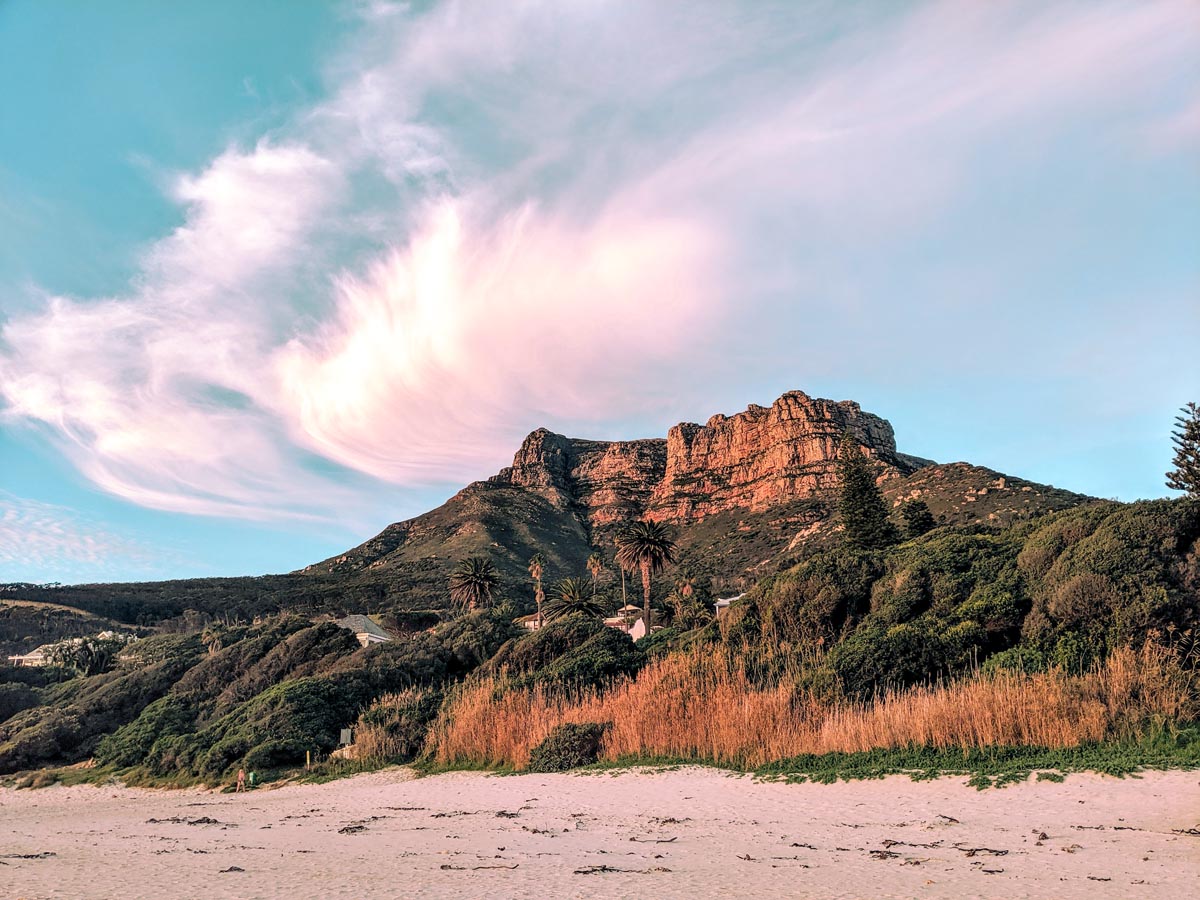
Parking can be a nightmare, especially later in the day, so consider grabbing an Uber or taking the MyCiti bus to save yourself the stress.
Once you’re on Clifton Beach, you’ll notice locals strolling around with cooler boxes, selling drinks, snacks, and ice cream (the famous granadilla lolly). Be sure to carry cash so you can treat yourself!
Drinking in public is illegal in South Africa. Leave the beer or wine at home (or rather your hotel room) and enjoy a sunset cocktail at a nearby cafe or bar later.
Tanning or swimming nude or topless is not normal in South Africa. If you’re looking for a nudist beach, head to Sandy Bay instead.
And finally, while Clifton’s beaches are considered safe, we don’t recommend leaving your personal items unattended when you go for a swim or stroll.
Instead, ask a friendly neighboring beachgoer to keep an eye on your belongings. You can always offer to do the same for them.
What To Do In Cape Town For A Week
If you’re wondering what to see and do in Cape Town for a week, this 7 day itinerary is a great place to start! You can also mix and match days to include more wine tasting, hiking, or adventure day trips from Cape Town by swapping out some of the activities from Days 1 to 7 with options from Days 8 to 14. That way, you can tailor the itinerary to match your unique travel style.
Simply follow our 6 day Cape Town itinerary and add one of these options:
- Explore the False Bay Coastline and see Penguins at Boulder’s Beach (great for kids)
- Wine tasting with the famous Franschhoek Wine Tram
- Bird watching and nature walks in The West Coast National Park (great for kids)
- Quad biking and sand surfing at Atlantis Dunes (for the adventure junkies)
- Wine tasting in Stellenbosch and Paarl
Day 7: False Bay Coastline Line and Seeing Penguins
On Day 7, we’re exploring the stunning False Bay coastline.
Up until now, our itinerary has been adventuring around Cape Town’s Atlantic Seaboard. Today though, we’re heading to the city’s quieter east coast – the side that hugs the Indian Ocean.
False Bay is a dream to explore, with its chilled vibe, warmer waters, and less-crowded beaches compared to hotspots like Clifton and Camps Bay.
This part of the itinerary is best explored by car. This way, you have the freedom to stop whenever the mood strikes!
While it’s possible to explore the False Bay coastline without a car, we wouldn’t recommend it. We’ve taken the train to these places before and, to be honest, it’s not the safest option…
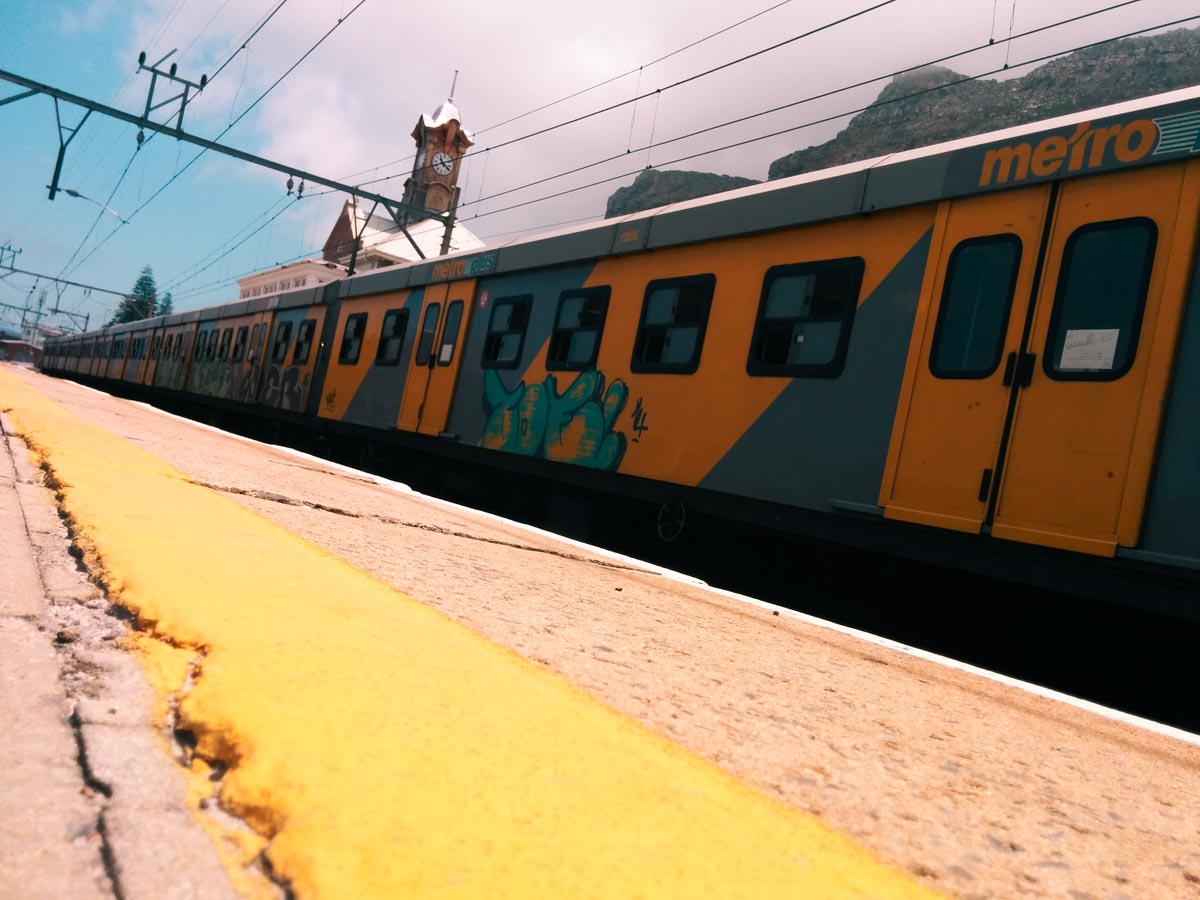
Alternatively, you can take a guided bus tour. It won’t take you to every stop we have on this 7 day itinerary, but you’ll see the main sightseeing spots as part of a full day trip.
Here are some options:
Muizenberg Beach
We’re starting off at Muizenberg Beach, famous for its colorful beach huts that have become an Instagram staple.
The beach has a relaxed, family-friendly vibe and is very popular for surfing. Especially for those who prefer swimming in warmer waters.
But before you dive in, keep in mind that sharks are a known hazard here. Only swim when lifeguards are on duty and the beach is busy. If no one else is in the water, take it as a sign to stay dry.
Dalebrook Tidal Pool
If you’ve watched too many shark movies (like me) and prefer not to risk it, go for a swim at Dalebrook Tidal Pool instead. It’s a hidden gem and a great spot for a refreshing dip.
It’s sheltered (so you won’t need to worry about sharks), calm, and offers magnificent views of the ocean crashing against the rocks.
Kalk Bay
Next on the itinerary is the charming town of Kalk Bay, where time slows down and the old-world charm of Cape Town shines.
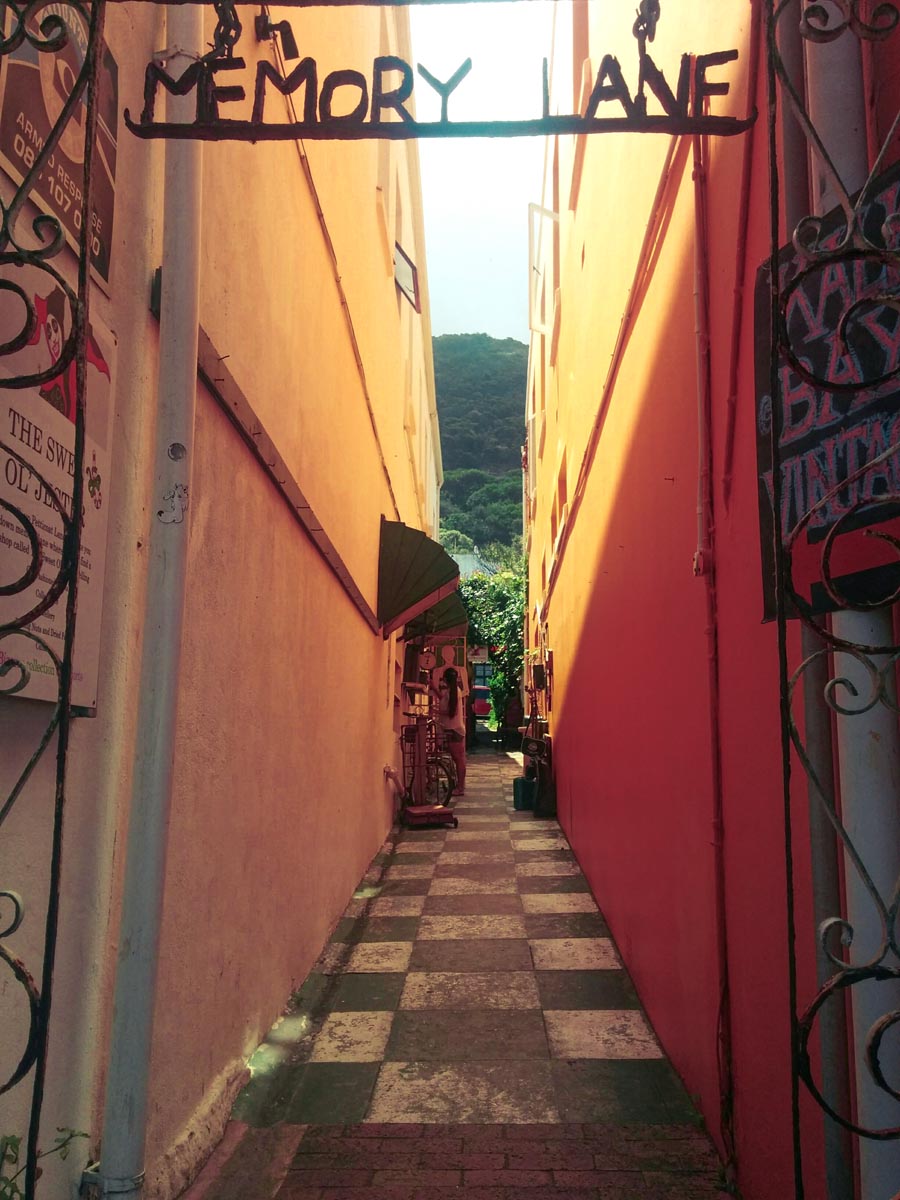
Start by exploring its quaint old town. Then wander around Kalk Bay Harbour where you can watch fishing boats come and go before checking out Kalk Bay Fish Market.
Wine lovers, don’t miss Kalk Bay Vineyards. Their grapes are grown in one of the southernmost vineyards in the hemisphere and exposed to the salty sea breeze. If you love tasting wine with unique terroir – this is it!
Lunch at Harbour House
End your visit with lunch at Harbour House, a seafood restaurant that offers incredible ocean views. Pair your meal with a crisp glass of white wine, and you’ve got yourself a quintessential Cape Town lunch!
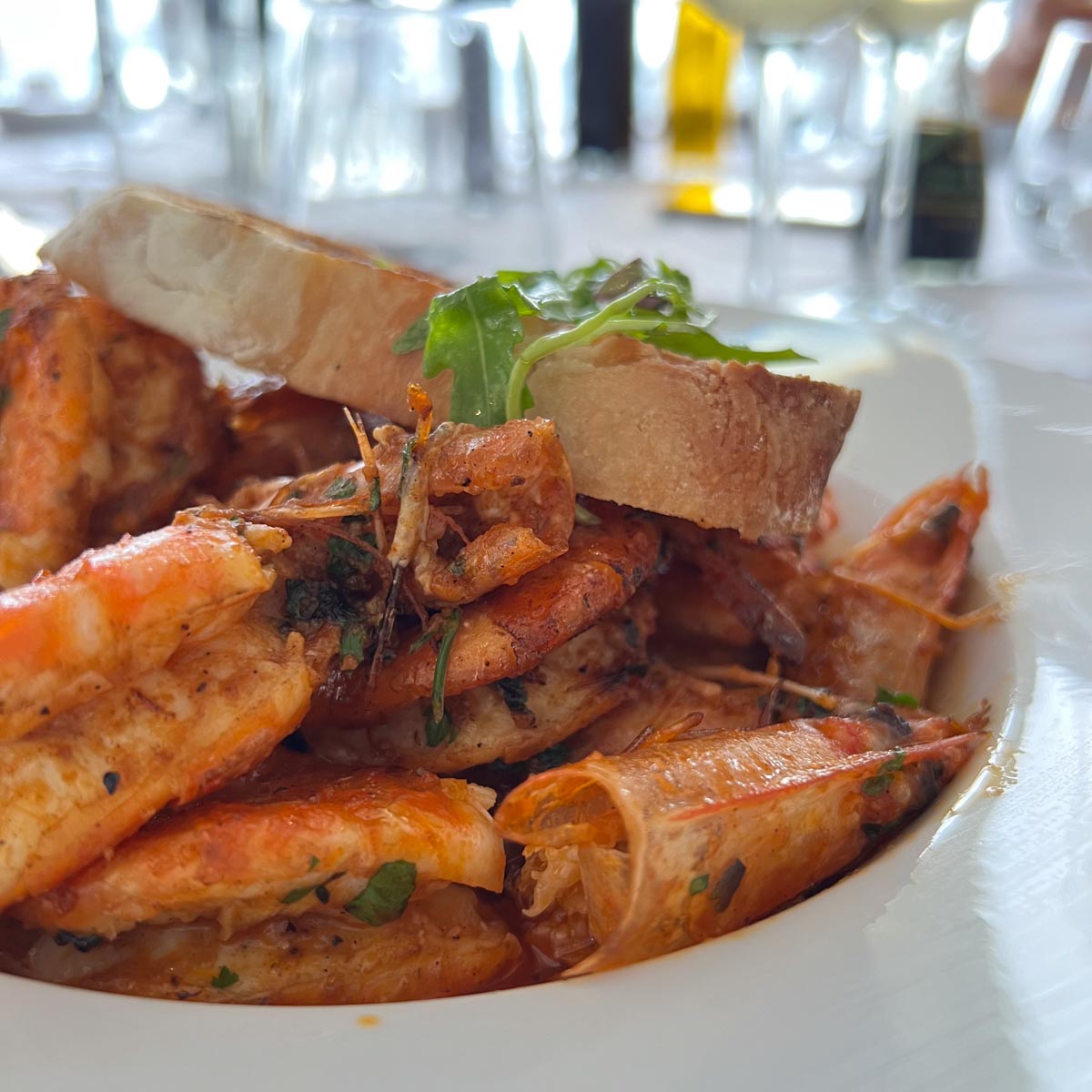
Simon’s Town
After lunch, we’re heading toward Simon’s Town with a few quick stops along the way.
First up is Woolley’s Tidal Pool, a peaceful spot for a swim with gorgeous views of the surrounding cliffs and ocean. If you’ve got some extra time, Glencairn Beach and Glencairn Tidal Pool are also worth a visit.
Once you arrive in Simon’s Town, you’ll notice the laid-back charm of this historic naval town. Famous for its colorful Victorian architecture, picturesque harbor, and rich maritime history.
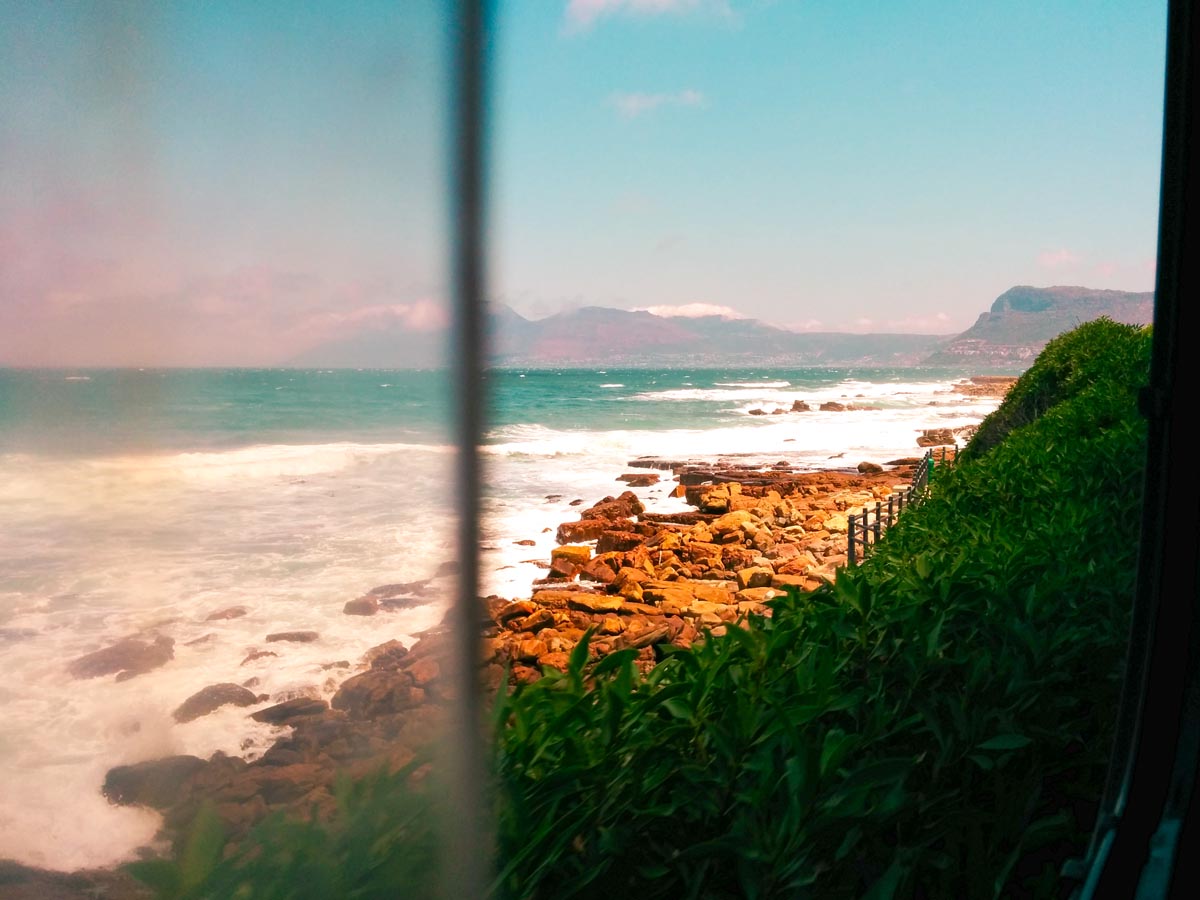
If you’re a history buff (or love all things ships), carve out time to visit the South African Naval Museum. It will give you a fascinating glimpse into South Africa’s naval heritage.
Or if you’re scuba diving lovers (like us), Simon’s Town is the perfect place to gear up. Make a stop at Pisces Divers to see what upcoming scuba dive trips they have planned.
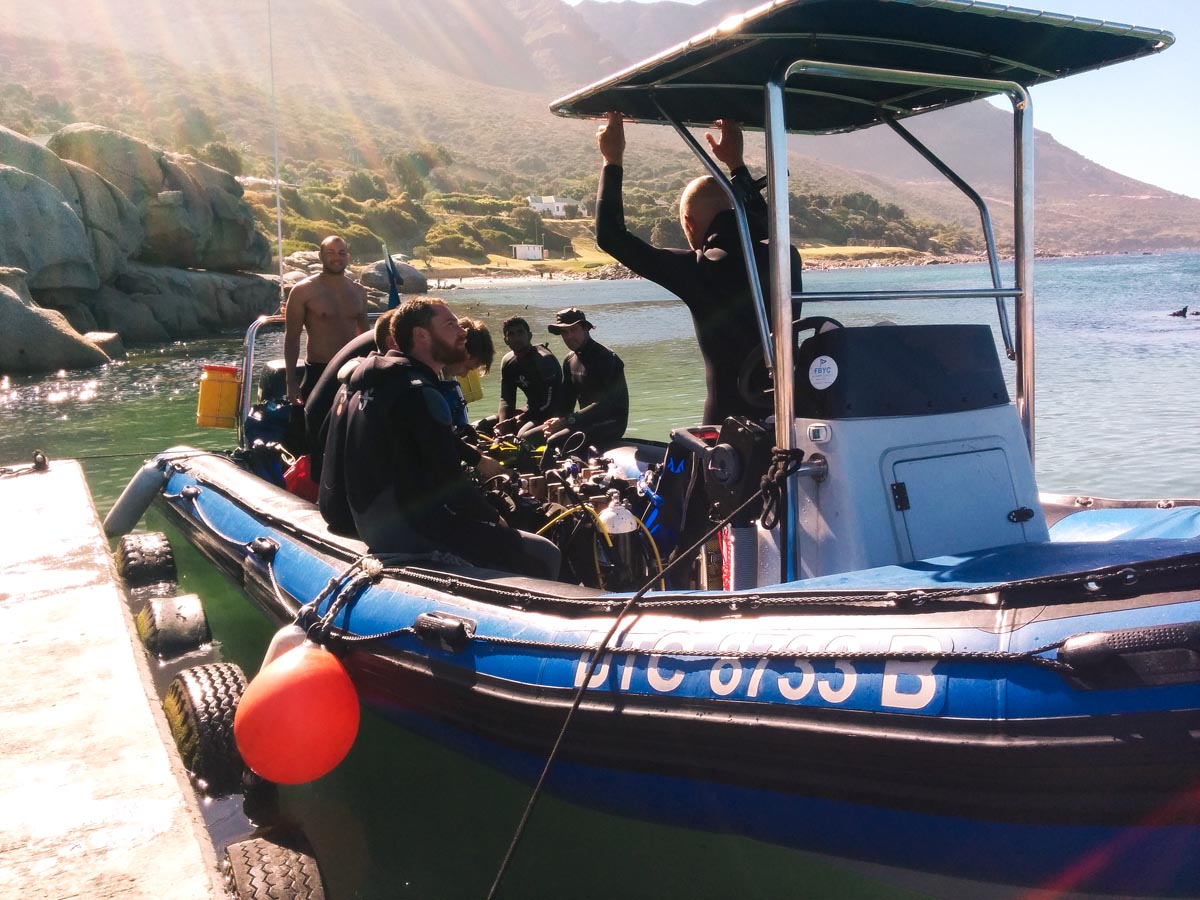
We did the kelp forest and Partridge Point dives with them back in 2017 and had a great experience. If you’d like to know more about scuba diving in Cape Town and whether it’s worth it, let us know and we’ll write a detailed guide on that.
Boulders Beach
No visit to Cape Town would be complete without meeting the stars of the show – the famous penguins at Boulders Beach!
Here’s a fun fact. Did you know that these charismatic African penguins are the only penguin species that breed on the African continent? The only other places you can see penguins breed are in Antarctica and the Galapagos Islands.
These two places are on our ever-growing travel bucket list, but they’re remote and far to travel to. So if you’ve ever wanted to see wild penguins in their natural habitat (without crazy jet lag), then don’t miss them in Cape Town!
It is super touristy, but worth it for the unforgettable experience of seeing them waddling along the beach in their black and white tuxedos.
Boulders Beach Entry Fee
You have to buy tickets to visit Boulders Beach. Paying to visit a beach isn’t normal in South Africa. But in this case, the proceeds from the entrance fees go towards protecting the endangered African penguins, so well worth the money.
Boulders Beach tickets cost €11 ($12) for adults and €5.50 ($7) for children (up to 11 years). If you’re South African, tickets are cheaper at R50 per adult and R25 for kids. SADC citizens also get a discount (R100 for adults and R50 for kids).
You can buy these tickets online or at the sales booth when you arrive.
Middle Beach
Here’s a local insider’s tip, but promise me that you’ll be a responsible traveler if you do follow it.
For a quieter and more intimate encounter with these famous penguins, head to Middle Beach just next door. It’s a hidden gem where you’ll find these adorable creatures without the big crowds.
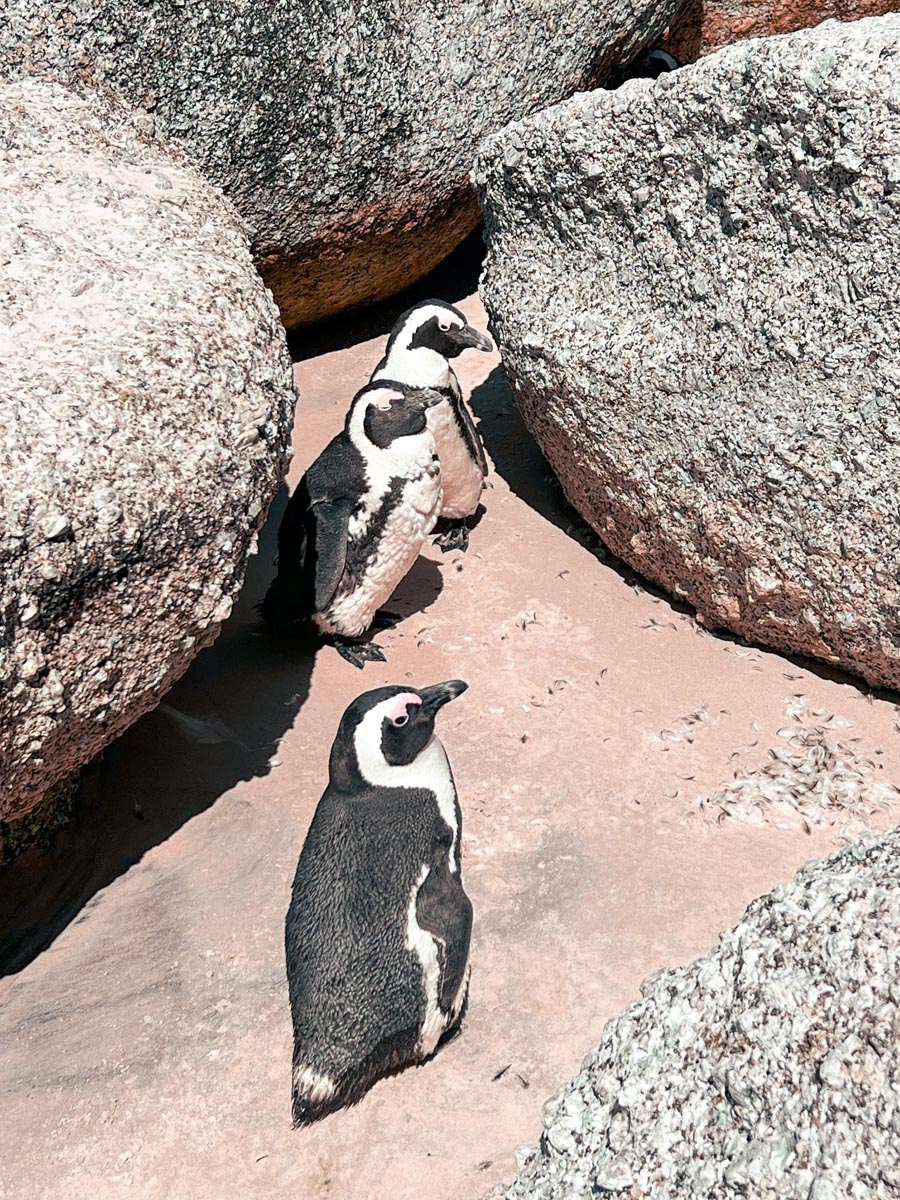
But please remember, these adorable little tuxedoed birds are endangered. Keep your distance, don’t touch them, feed them, or bait them. Be ethical – don’t just do it for the Gram.
The best kind of wildlife encounters are the ones where the animals barely notice you are there. Respect their space and enjoy the moment responsibly.
To get there, go to Middle Beach and walk left (facing the ocean). Depending on the tide, you may have to wade in the water between rocks to see penguins.
10 Day Cape Town Itinerary
10 days is a good amount of time to spend in Cape Town. It gives you enough breathing room to hike Table Mountain at a relaxed pace, sip your way through both the Constantia Wine Route and Franschhoek, AND tick off all the must-visit attractions for first-time travelers—without feeling too rushed.
Simply follow our Cape Town One Week Itinerary, add day 8 and 9 and choose one of the following options for your last day:
- Bird watching and nature walks in The West Coast National Park (great for kids)
- Quad biking and sand surfing at Atlantis Dunes (for the adventure junkies)
- Wine tasting in Stellenbosch and Paarl (for the wine lovers)
- Relaxing at a luxury day spa (great for couples)
Day 8: Wine Tasting in Franschhoek
It would be a sin to skip day 8 of this Cape Town itinerary if you love wine!
South African wines are world-renowned, and Franschhoek has some of the most picturesque wine farms in the country – maybe even the world.
Hence the name Franschhoek which literally translates to ‘French Corner’ in Afrikaans. A nod to the French Huguenots who settled here back in the 1600s and planted the seeds (literally!) for this now-famous wine region.
Picture this: sipping a perfectly chilled, velvety Chardonnay, surrounded by endless rolling vineyards stretching as far as the eyes can see. All whilst enjoying mouth-watering food paired with top-notch service. Pure bliss!
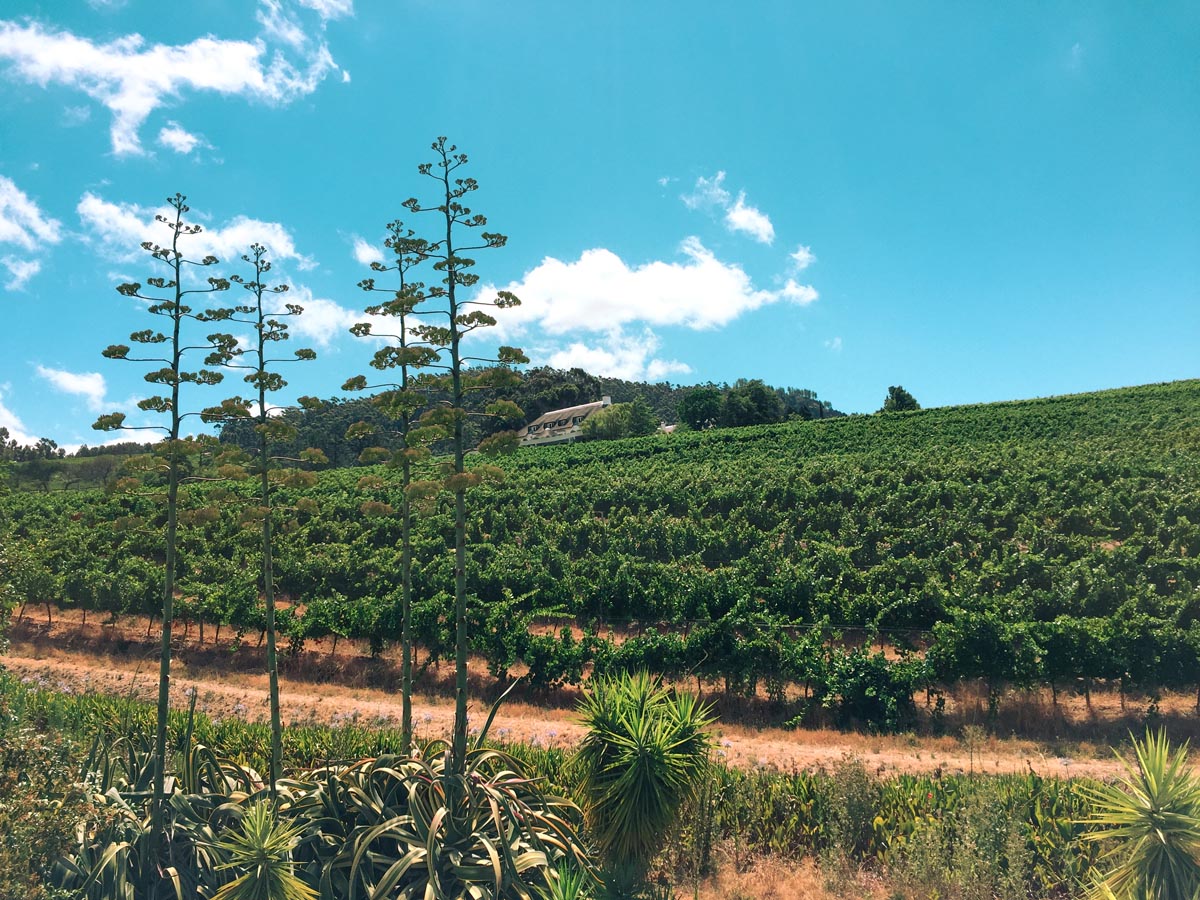
Franschhoek makes for a fantastic full day trip from Cape Town. But honestly? The ultimate experience is staying for a night or two (or making a whole weekend out of it).
With its charming hotels and cozy B&Bs, plus some of the best restaurants in the country, you’ll thank yourself for sticking around.
If you’re spending 10 days to 2 weeks or more in Cape Town, definitely reserve a night or two for Franschhoek. You won’t regret it!
Booking.comWineries Not On The Franschhoek Wine Tram Route
On your first day in Franschhoek, we’d suggest visiting wineries that are not on the Franschhoek Wine Tram route. Some of our favorites are:
- Colmant (if you love bubbles and want to try South Africa’s version of champagne – Methode Cap Classique)
- La Motte (if you like Shiraz or Sauvignon Blanc)
- Boekenhoutskloof Winery (if you love red wines – we love their Chocolate Block blend)
- Anthonij Rupert Wine Farm (famous for red wines like Cabernet Sauvignon and Bordeaux-style red blends)
- Akkerdal Wine Estate (a boutique winery for red wine lovers)
You can easily get to these wine farms with Uber.
Then wrap up day 1 in Franschhoek with a scrumptious dinner at the famous Reuben’s Restaurant & Bar. Make a reservation for this well in advance – you don’t want to be disappointed.
How To Get To Franschhoek from Cape Town
There are a few ways to get from Cape Town to Franschhoek.
Getting there by car is easy. Franschhoek is a 1 hour and 20 minute drive (around 88km) from Cape Town. The roads are well paved and maintained well, making it a pretty straightforward and relaxing drive.
It’s just as easy to get from Cape Town to Franschhoek without a car, so don’t you worry. You have two options: Grab an Uber or take this bus coach to Franschhoek.
The bus coach includes pick-up and drop-off from the Cape Town city centre as well as the Atlantic Seaboard. Plus, it also includes your Franschhoek Wine Tram ticket so you can skip the queue altogether.
Alternatively, you can also take this full day guided tour from Cape Town to Franschhoek and explore the wine region by bike! It includes pick-up from Cape Town, bike rentals, helmets, 3 wine tastings and even lunch!
Where To Stay in Franschhoek
When it comes to where to stay in Franschhoek, you’re spoiled for choice.
Whether you’re after a luxurious escape, a charming boutique hotel or a cozy B&B with that personal touch, this little wine town has it all.
If you’re not planning to drive, we’d recommend staying close to Franschhoek Main Road or Huguenot Road. That way, you’re within walking distance to cafes, restaurants, shops and bars.
Here are some great hotel options nearby:
- Luxury: Le Quartier Francais
- Mid-range: Macaron Boutique Guest House
- Budget: The Belmont
Otherwise, if you are hiring a car, you can stay a little further out and get the full experience staying on a wine farm.
We stayed at Jardin de la Ferme on our last Cape Town trip and had the most fabulous time!
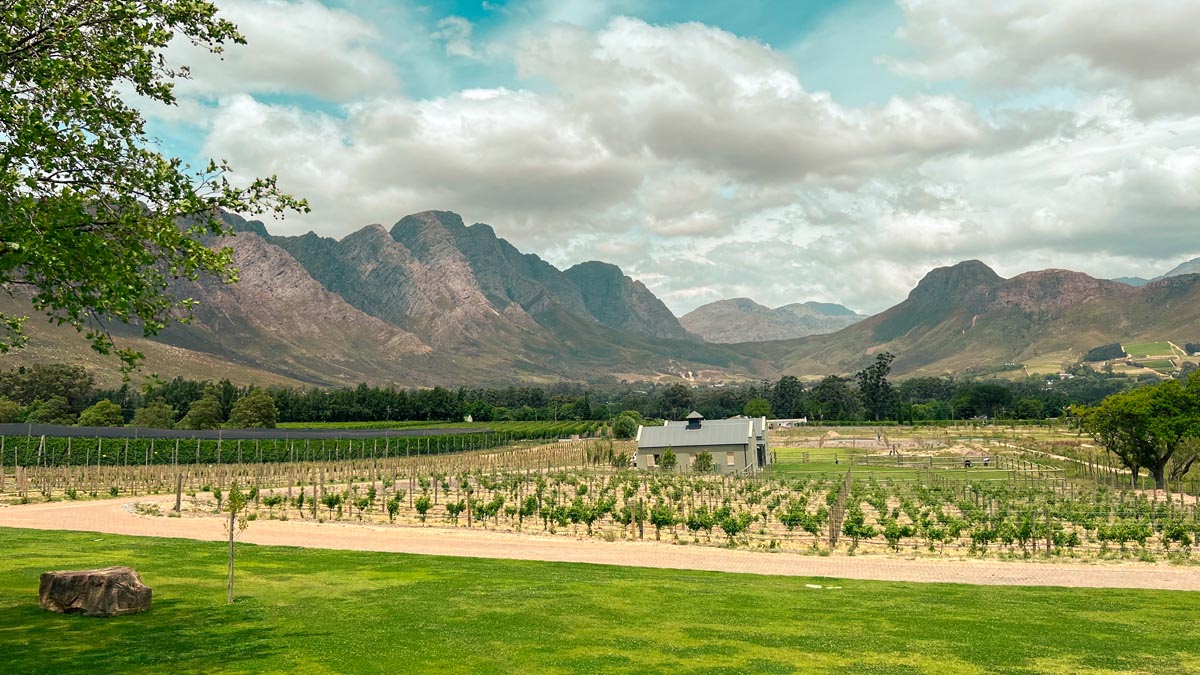
Compare hotel prices in Franschhoek below and remember to book early, especially if you’re traveling there during peak season (December to February).
Day 9: Franschhoek Wine Tram
Wine lovers, day 9 is the day you’ve been patiently waiting for – the famous Franschhoek Wine Tram! But first, breakfast.
Trust me, you’ve got to line that stomach before embarking on a full day of wine tasting.
Our favorite breakfast spot is Terbodore Cafe. Their coffee is chef’s kiss and the Turkish Meze breakfast for two is a great choice if you’re in the mood for something unique and shareable.
We also loved the fact that we got to enjoy breakfast with the cutest Great Dane ever – Jack!
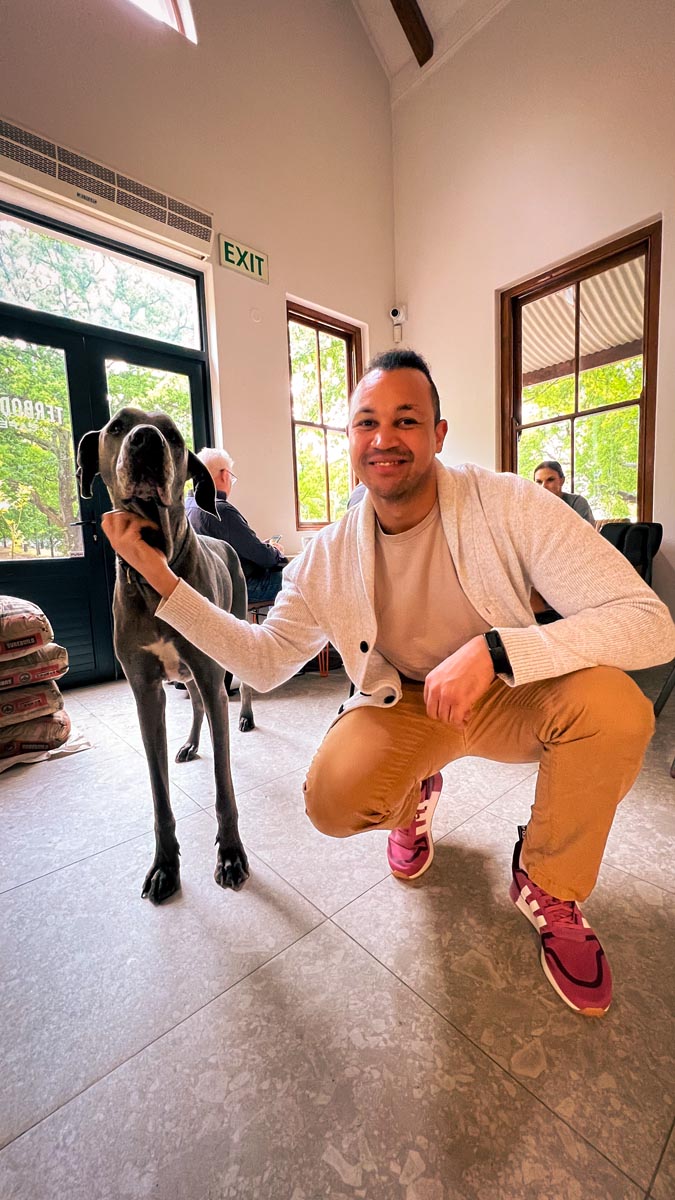
Now you’re ready for wine o’clock – and don’t worry, no one will judge you for drinking before noon in Franschhoek.
Hopefully, you were wise and pre-booked your Franschhoek Wine Tram tickets beforehand. If not, you can try your luck at their sales booth, but keep in mind that certain tram lines may already be fully booked.
We plan to write a detailed guide on the Franschhoek Wine Tram soon. But here are some things you should know if it’s your first time.
How Much It Costs
Franschhoek Wine Tram tickets cost R330 (around €17 or $18) per person and only cover your ride on the tram. Wine tastings at the vineyards are paid separately, usually between R70 (€3.60 or $5) to R200 (€10 or $11) per person.
Our pro tip? Share a wine tasting if you don’t want to get tipsy too fast.
How Does The Franschhoek Wine Tram Work
The tram currently has 5 routes named by colors: the Blue, Navy, Orange, Pink and Red line.
These routes change from time to time, so the best way to check which wineries are on which route is to check the official Franschhoek Wine Tram website.
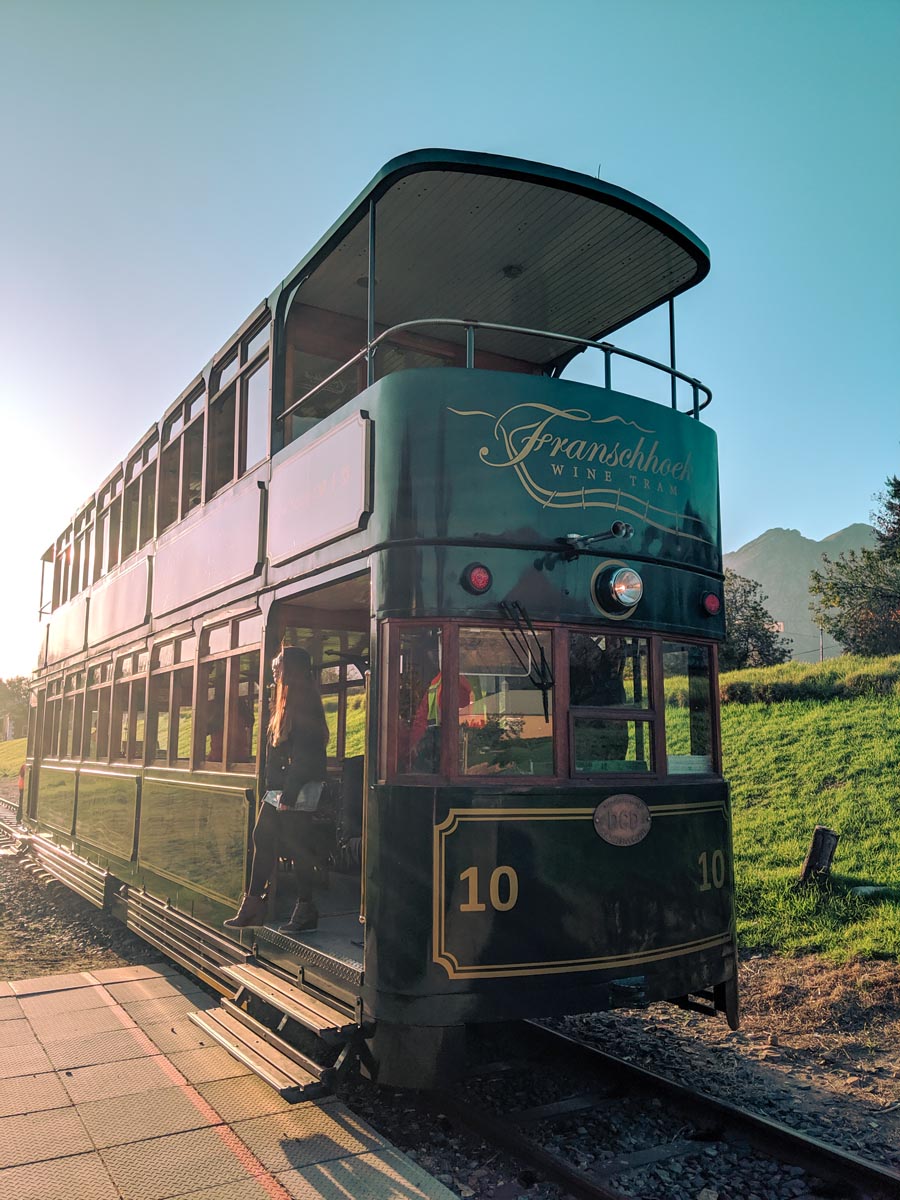
Depending on the line, the next tram arrives at every 30 or 60 minute intervals. If you prefer a more relaxed experience, you are welcome to skip a wine farm or two to spend more time sipping, snacking and soaking up those dreamy vineyard vibes at your favorite spots.
Some farms have restaurants, so it’s worth planning a lunch stop or grabbing a charcuterie board to share – because nothing pairs better with wine than delicious food and stunning views.
Which Is The Best Franschhoek Wine Tram Route
We often get asked which Franschhoek Wine Tram line is best. The answer? It depends on you.
We’d recommend doing some research on which wine farms align with your taste preferences (red, white, MCC, or views) and picking your route accordingly.
On our last visit, we went on the Blue Line and had a great time. But if you love bubbles and views, we’d highly recommend picking the line that stops at Haute Cabriere.
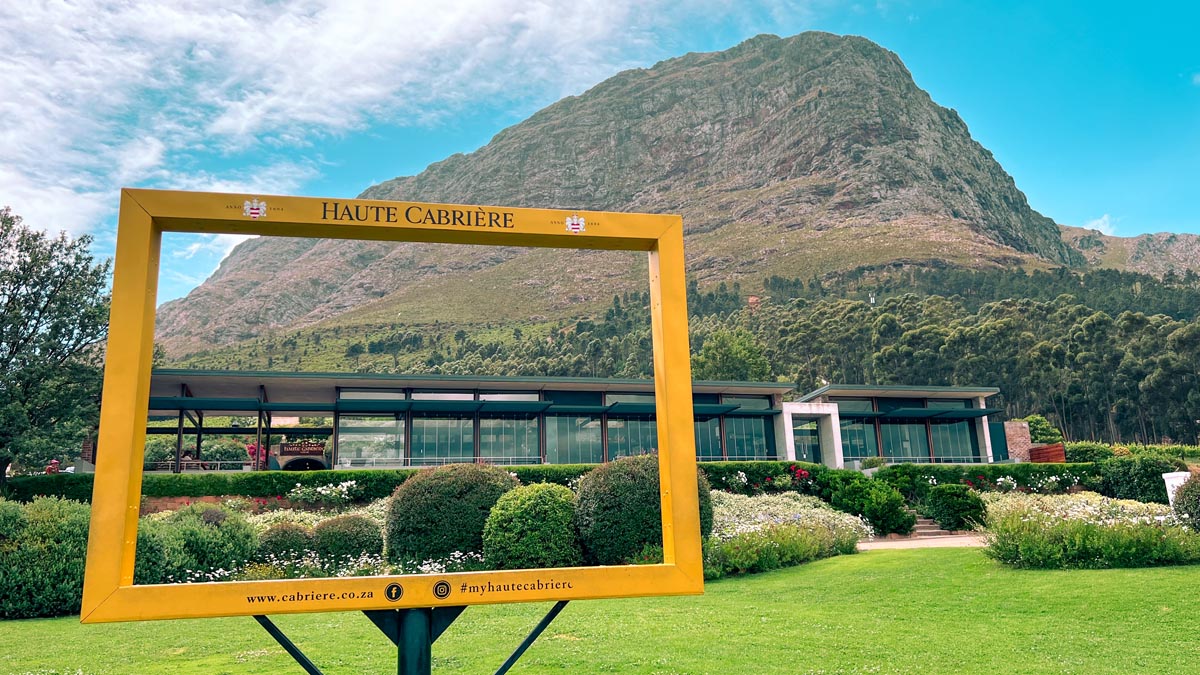
Their MCCs (South Africa’s version of champagne) are some of our favorites! So much so that we bought cases of it for our wedding.
And the views from Haute Cabriere are simply breathtaking! If you can’t decide which route to go on, you can’t go wrong picking the line stopping at Haute Cabriere (currently the Red Line).
2 Week Cape Town Itinerary (14 Days)
If you’ve got 14 days to spend in Cape Town, you’re in for a real treat! Not only will you get to experience the very best the city has to offer, but you’ll also have time to explore a few hidden gems just a few hours’ drive away.
Like the rugged otherworldly beauty of the Cederberg Mountains and the wild, windswept landscapes of the West Coast National Park.
You can easily do the first half of this 14 day itinerary without a car. But for week two, you’ll need to rent one to make the most of these off the beaten path adventures. Trust me—it’s 100% worth it.
Day 10: Cederberg Mountains
Okay, I’ll admit it – day 10 of this itinerary isn’t technically in Cape Town, but if you’re into hiking and adventure, it’s worth the detour.
The Cederberg Mountains are famous for their dramatic sandstone rock formations, ancient San rock art, and untouched wilderness that feels worlds away from the city.
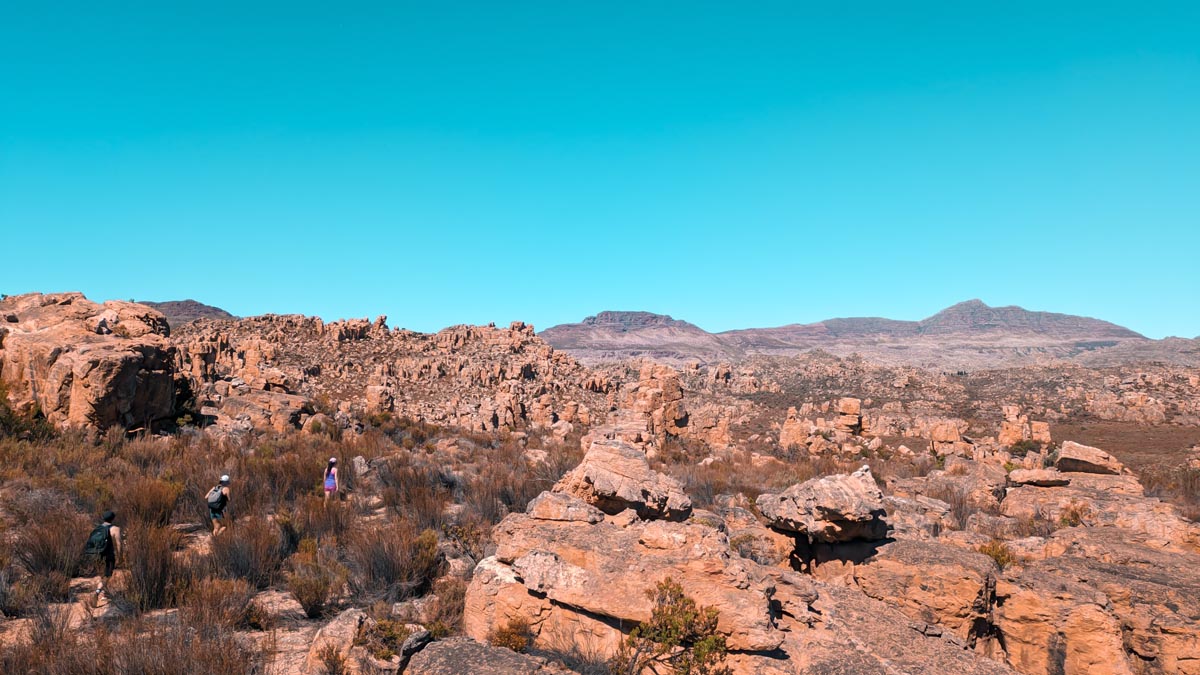
There are many hiking trails in the area, but the most legendary one is the Wolfberg Arch hike.
While you could do a day trip from Cape Town to Cederberg (it’s around a 3.5 hour drive one way), we wouldn’t recommend it. Unless waking up before dawn, driving in the dark, sweating it out for 8 to 10 hours on the trails, and driving another 3.5 hours back exhausted is what you’d call a vacation…
Do yourself (and your hard-earned holiday) a favor and stay overnight. There are more things to do and see in Cederberg besides hiking.
Arrive at Sanddrif Holiday Resort
On day 10, make your way to the Cederberg mountains and check in at Sanddrif Holiday Resort. It’s around a 3.5 hour drive (239km or 149 miles) from Franschhoek to Cederberg, and slightly less at 3 hours and 20 minutes (245km or 152 miles) if you’re driving from Cape Town to Cederberg.
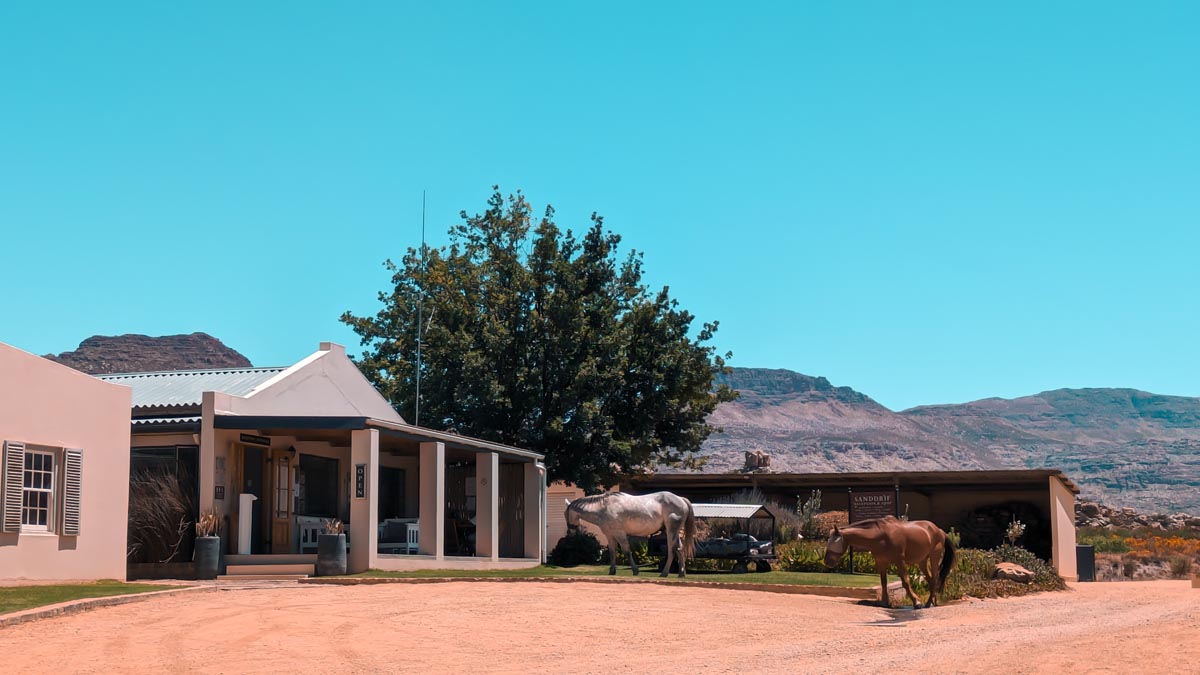
Don’t make the same mistake we did staying elsewhere if you want to do the Wolfberg Arch Hike. You’ll end up driving an hour (one way) on unpaved gravel roads dodging potholes just to reach the start of the hikes…
We made this rookie mistake back in 2023 and boy are we not doing that again.
After you check in, head to Stadsaal Caves to see the fascinating ancient rock art etched by the San people thousands of years ago. Keep an eye out for the dramatic Stadsaal rock formations in the area – they’re equally mesmerizing.
Wrap up your afternoon with a refreshing swim at Maalgat Rock Pool – a hidden gem perfect for cooling off after all that exploring. It’s safe for swimming, just keep an eye on your snacks – the baboons around here are pros at swiping your lunch.
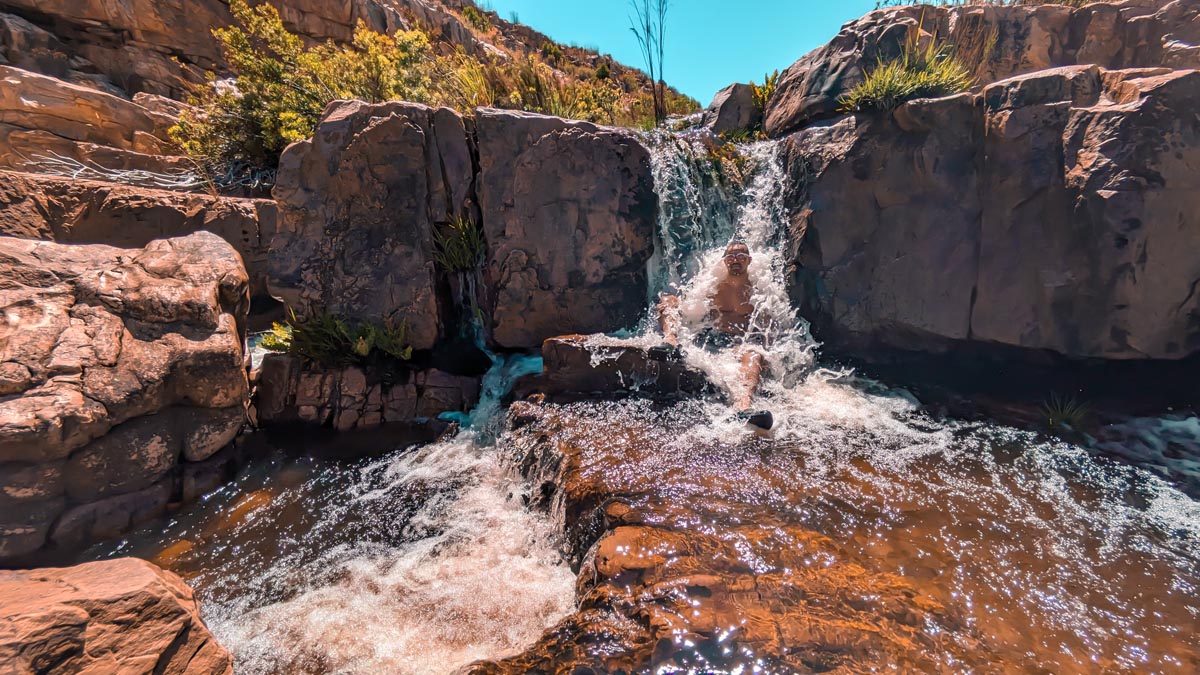
Wind down the evening with a South African style braai (what we call a barbecue or grilling in South Africa). And if you happen to be staying over on a Saturday, book a stargazing session at the Cederberg Astronomical Observatory.
There’s nothing quite like standing under the inky black sky, surrounded by the rugged beauty of the Cederberg Mountains, and marveling at the twinkling stars in the sky.
Day 11: Wolfberg Arch Hike
Day 11 kicks off with hiking one of the most beautiful trails in the Cederberg Mountains – Wolfberg Arch.
Start the hike early, ideally between 5 and 6 in the morning (just after sunrise). You’ll want to avoid the notorious Cederberg heat, especially during summer when temperatures can soar above 38 degrees Celsius (100 Fahrenheit).
The Wolfberg Arch hiking route is breathtaking alright, but not for the faint-hearted.
This hike is no walk in the park. It’s a challenging 14 kilometers (8.7 miles) round trip that will take the average hiker 8 to 10 hours to complete. Expect some heart-pumping steep climbs, rugged rocky sections, and the occasional scramble.
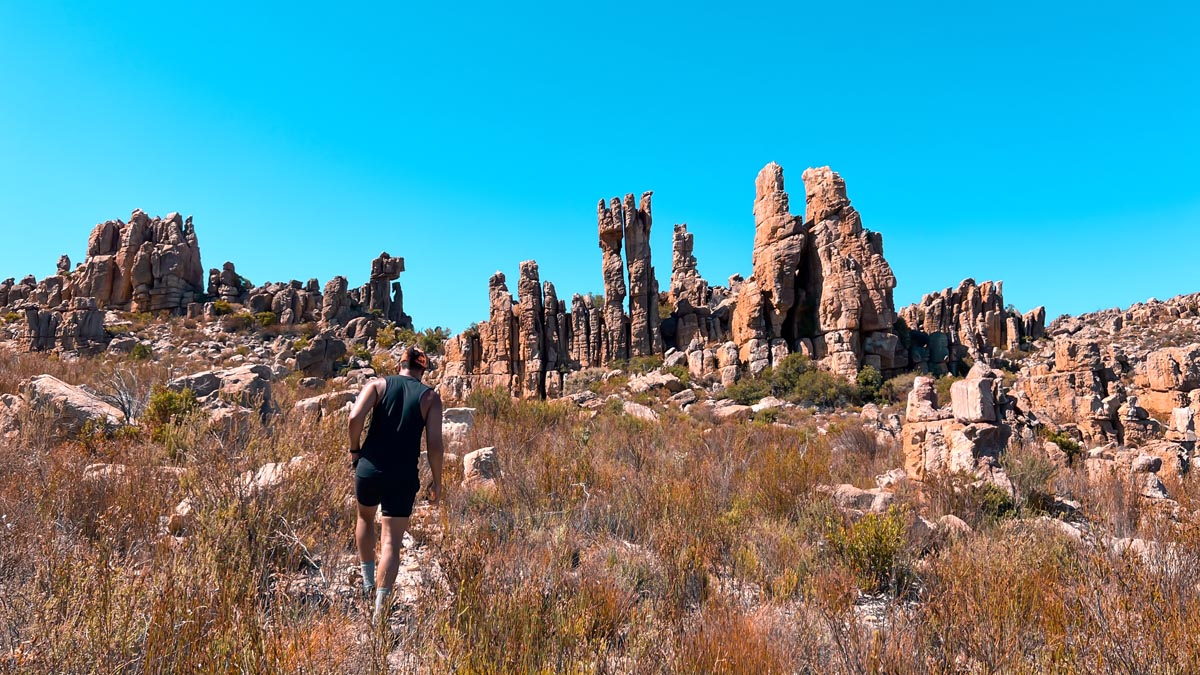
I hope you’re comfortable with tight spaces because you’ll need to squeeze through a few when maneuvering through Wolfberg Cracks. It’s all part of the adventure!
In terms of difficulty level, you don’t need the fitness of a 5-star athlete to hike Wolfberg Arch. As long as you have a good level of fitness to walk long distances, and don’t have hip, knee, or ankle problems, you’ll be fine.
After the hike (if you still have some energy left), take a short walk around Lot’s Wife. It’s a great spot to see Cederberg’s signature rock formations and snap some unique landscape photos.
Otherwise, unwind with a visit to Cederberg Wines for a tasting session. They’re renowned for their exceptional white wines, particularly their Ghost Corner series. Don’t miss their Sauvignon Blanc and Semillon wines – it pairs perfectly with the dry and hot Cederberg weather.
Related Guide: Craving for more beautiful hikes in South Africa? Check out these beautiful day hikes in the Drakensberg Mountains.
How To Get To Cederberg
Is it possible to get to the Cederberg Mountains without a car?
I hate to be the bearer of bad news, but it’s not exactly easy. This isn’t like hopping on a train to Kalk Bay or catching a bus to Cape Point. Public transport options are pretty much non-existent in the area and hitchhiking is not common or safe to do.
Your best bet? Rent a car.
To hike Wolfberg Arch specifically, you’ll need a vehicle that can handle gravel roads. And by handle, I mean not falling apart when you hit those infamous bumpy, dusty Cederberg tracks.
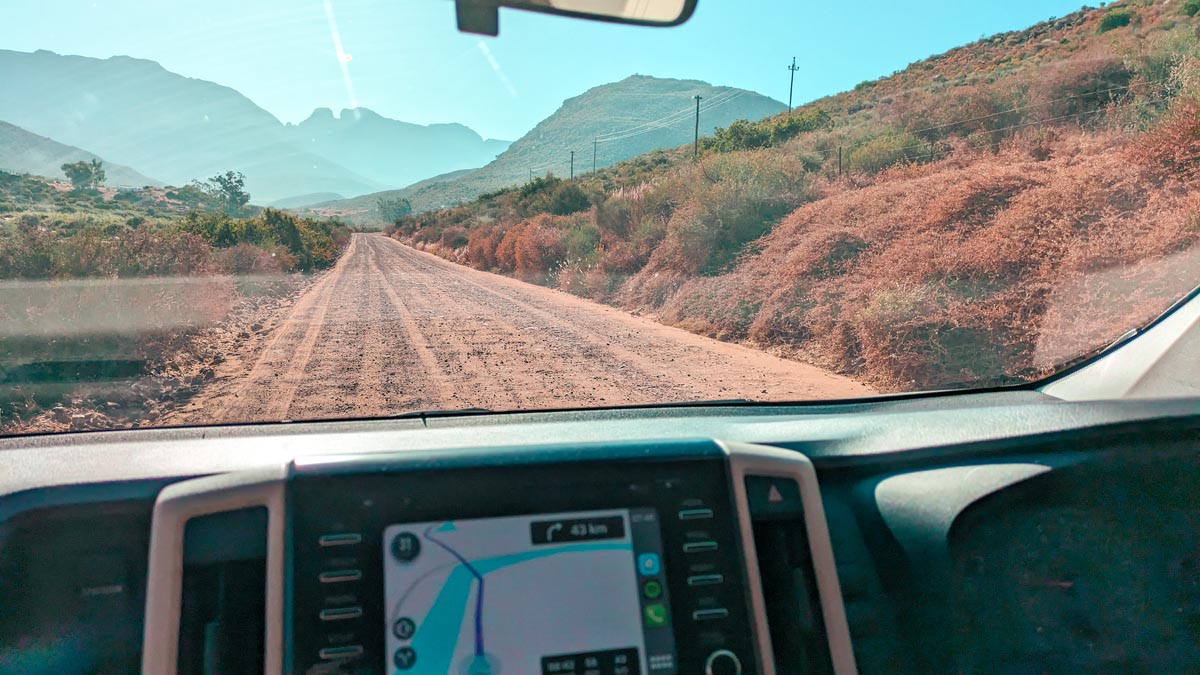
A regular sedan can make it if you drive slowly and carefully. But a high-clearance vehicle will make your life much easier.
We rented a Toyota Quantum for our family trip. It didn’t have a particularly high clearance, but we managed the roads just fine driving slowly.
If you do plan to rent a car, make sure to book it in advance, especially if you’re traveling during peak season. You can compare car hire prices on DiscoverCars or RentalCars to find the best deal for your budget.
If renting a car isn’t an option for you, a possible (though expensive) solution is joining a private guided tour. There are adventure companies that offer hiking trips to the Cederberg. But do double-check that they actually take you to the Wolfberg Arch hike because not all tours do.
Day 12: Arrive at West Coast National Park
If you rented a car to hike the Cederberg Mountains, let’s put that ride to good use! On day 12, we’re heading to the West Coast National Park (1.5 hours outside Cape Town) for some much-deserved relaxation.
Trust me, this place is nothing short of magical. The West Coast National Park is known for its jaw-dropping coastal scenery. Picture a turquoise lagoon, wildflowers that blanket the landscape in spring, pristine beaches, and the cherry on top – fewer crowds.
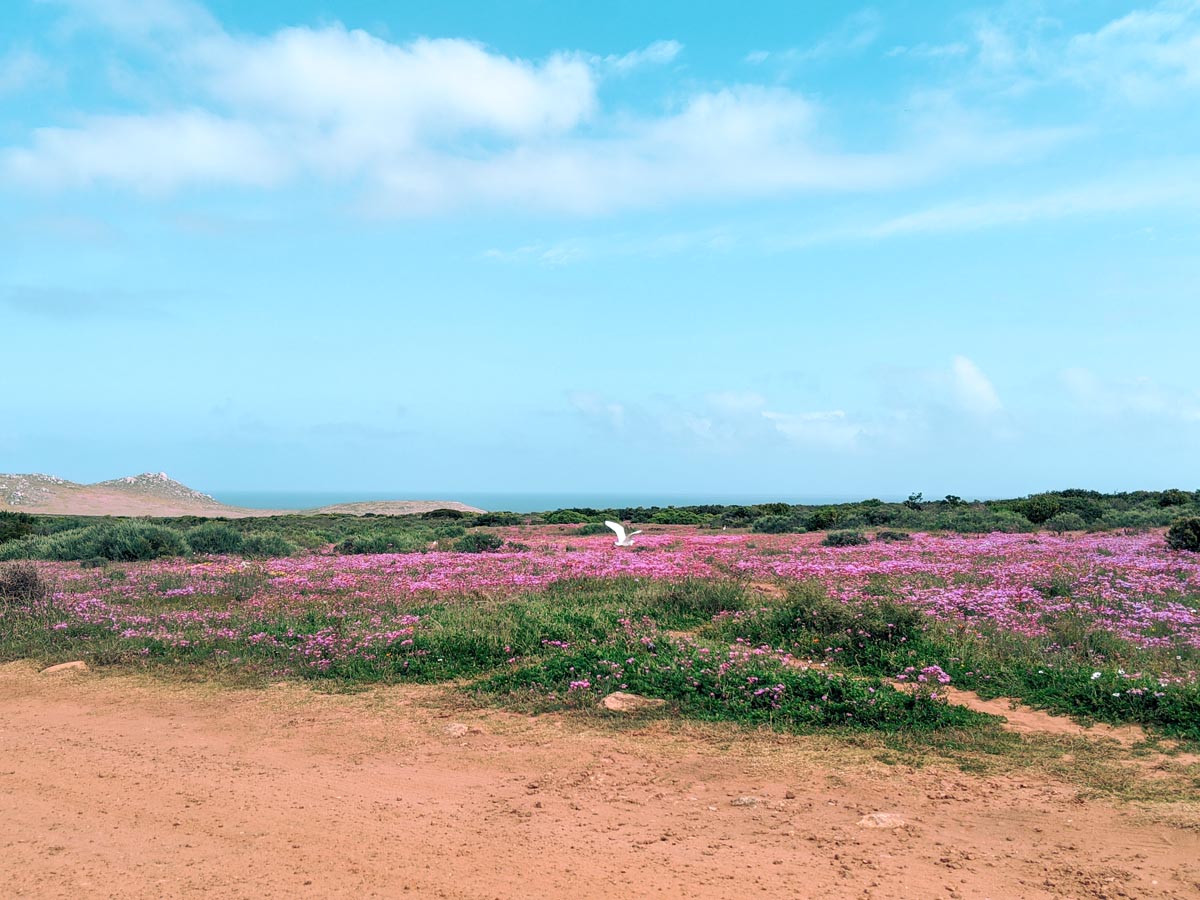
It’s one of the Western Cape’s most stunning natural gems and a must-do for anyone visiting Cape Town for 10 days or more.
The national park is perfect for beach lovers, wildlife enthusiasts (especially birdwatching), and anyone who appreciates raw, unspoiled beauty. If you’re lucky, you’ll spot antelopes, flamingoes, ostriches and maybe even a tortoise leisurely crossing your path.
Booking.comHow To Get To West Coast National Park
The best way to get to the West Coast National Park is by car.
The drive from Cederberg to the West Coast National Park takes around 3 hours (216km or 134 miles). From Cape Town, it’s a shorter 1.5 hour drive (139km or 86 miles).
It’s also possible to get here without a car via a private guided tour. This is a great option for you if you prefer to visit the West Coast National Park as a day trip from Cape Town (i.e. not stay overnight).
Where To Stay in West Coast National Park
Staying overnight in the West Coast National Park is an absolute treat for nature lovers. There’s nothing quite like falling asleep to the peaceful sounds of nature and waking up to views of the lagoon and wild coastal landscapes.
This Cape Town itinerary budgets for a 1 night stay in the West Coast National Park. But if you have more time, you could easily spend 2 to 4 nights here for a more relaxing stay.
For an immersive nature experience, we’d recommend staying in one of the SANParks cottages right inside the park. They’re rustic but cozy and are the best option for those who want to see fynbos (indigenous plants in South Africa), birds, and wildlife but no humans.
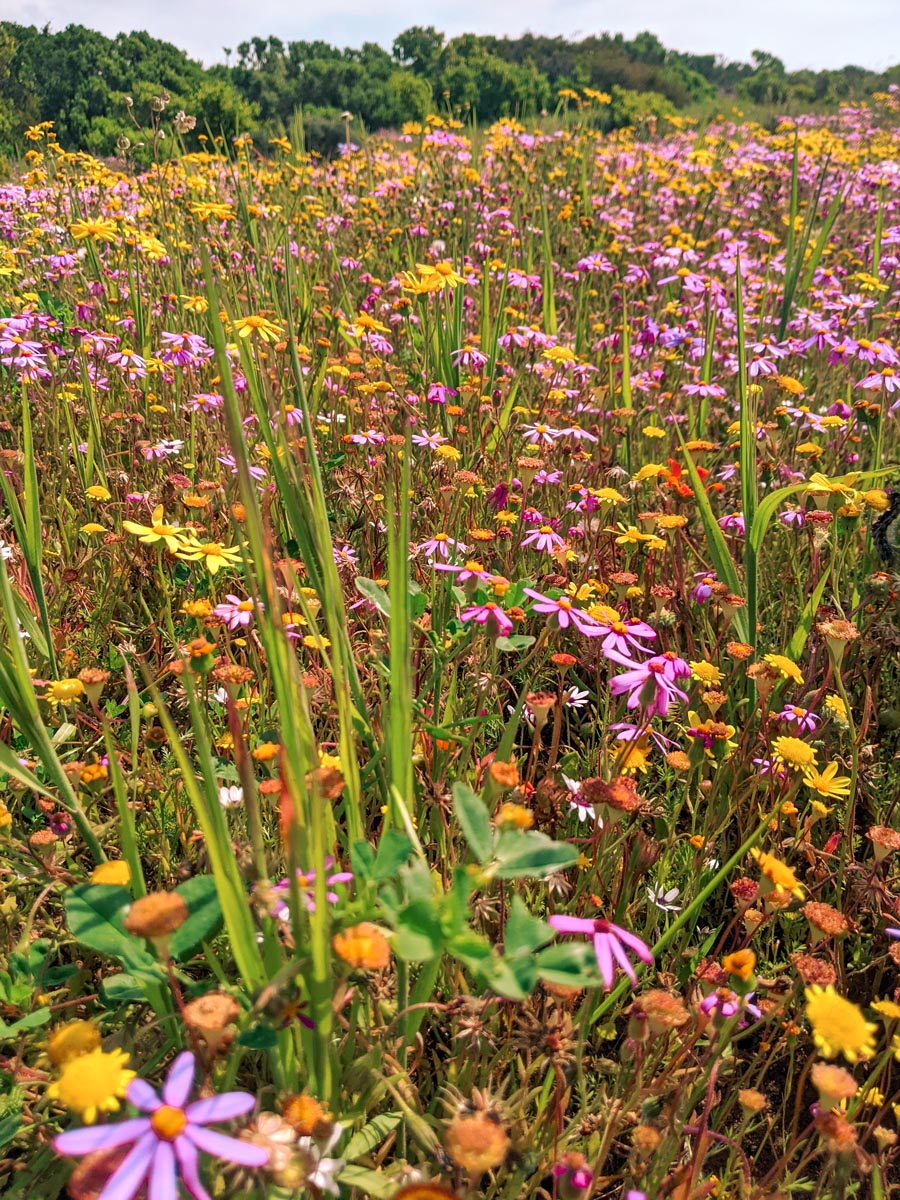
This option is for you if you want to REALLY go off the beaten track. So much so that you’ll need to bring and cook your own food.
If cooking on vacation is a no-go for you, then we’d suggest staying in Langebaan. It’s a charming coastal town right on the lagoon, just outside the West Coast National Park gates.
Not only will you have access to great restaurants and shops, but you’ll have more choices when it comes to where to stay. Here, you’ll find everything from a rustic seaside cottage to a luxury boutique hotel and spa – the world’s your oyster.
And for those looking for a truly unique experience, check out the Kraalbaai Houseboats.
Whatever you choose, book early – spots fill up fast, especially during wildflower season (usually August to September). You can compare hotel prices below:
Lunch at Die Strandloper
Once you arrive, head straight to Die Strandloper in Langebaan for a traditional seafood braai. It’s a feast you won’t forget!
Taste fresh mussels, smoked snoek (a local favorite) and West Coast crayfish all served up right next to the beach. Make sure to pace yourself because the courses just keep coming!
Bonus Tip: Make sure to make a reservation at Die Strandloper weeks if not months in advance. The restaurant only opens when they have a minimum of 20 guests.
Relax and Swim at Langebaan Lagoon
After lunch, check into your accommodation and spend the rest of your afternoon soaking up the tranquility at one of the West Coast National Park’s many beaches.
The beaches in the park are very different from the glitzy, people-watching vibes of Cape Town’s popular beaches (like Clifton and Camps Bay). They’re wild, unspoiled, quiet and the water here is calmer and warmer in comparison.
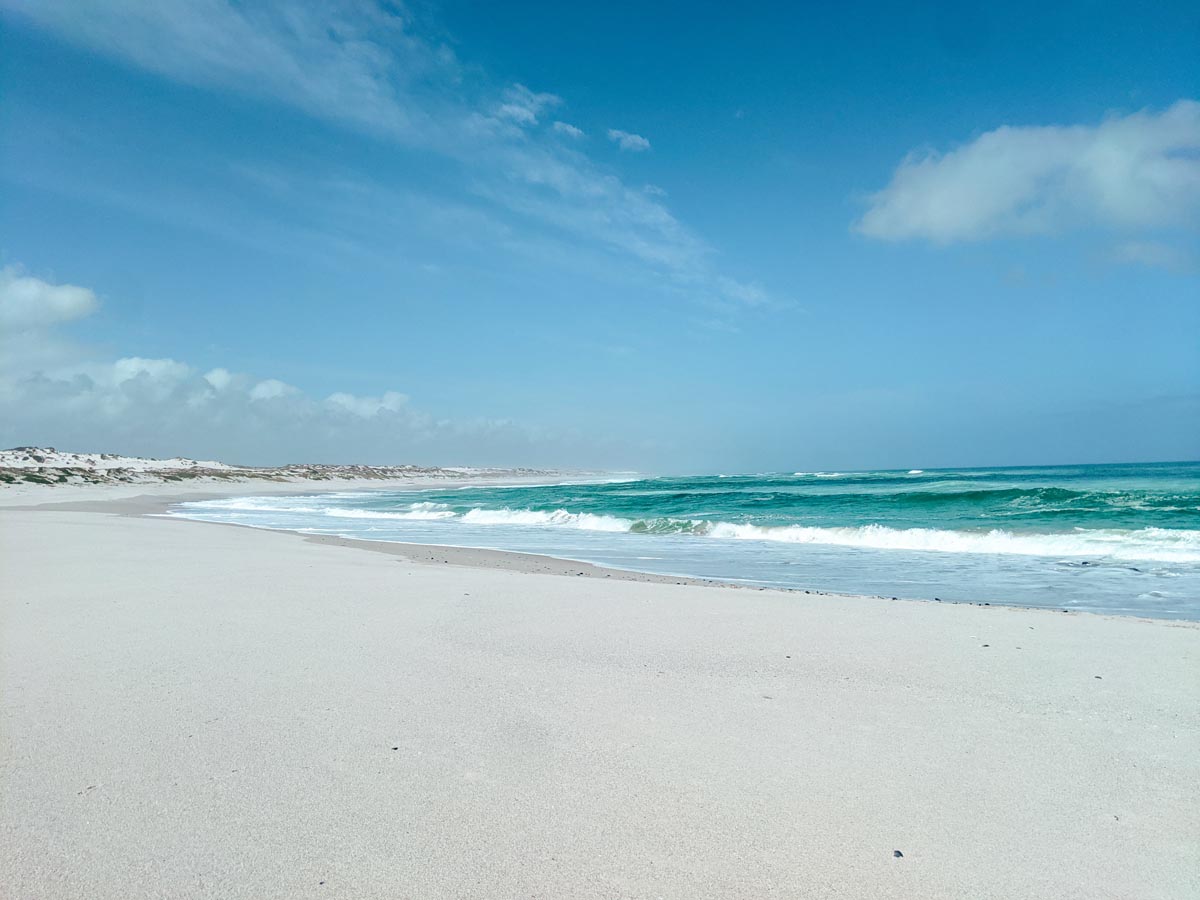
For the best beaches for swimming, head to Kraalbaai or Preekstoel (also called Churchhaven).
These beaches have crystal clear, warm waters perfect for swimming, stand-up paddle boarding, or just floating and lazing around. Kids will especially love its shallow bay and white sands!
Otherwise, if you’re not really into swimming, Langebaan Beach or Sixteen Mile Beach are great for a beach stroll.
Bonus Tip: Yes, there’s an entrance fee to visit the West Coast National Park, but it’s totally worth it! Tickets cost between R128 to R272 (€6.60 to €14) depending on whether it’s in or outside flower season. South African and SADC citizens get a discount – remember to bring your ID or passport.
Day 13: Explore Gems in West Coast National Park
Day 13 of this itinerary kicks off with exploring a few gems inside the breathtaking West Coast National Park before heading back to Cape Town.
Our first stop – Shark Bay. Don’t worry, despite the name, it’s not about sharks. Instead, it’s a serene stretch of shallow turquoise water perfect for kite surfing or a peaceful stroll along the shore. Bring your camera, the views here will take your breath away.
Next, head to Seeberg Uitsigpunt (which directly translates to Sea Mountain Viewing Point in Afrikaans) for one of the best panoramic viewpoints in the park. Standing up here, you’ll see the lagoon showing off in all its glory.
And if you’re visiting during flower season (August to September), you’ll also get to see a carpet of wildflowers stretching as far as the eye can see. It’s an absolute showstopper!
From here, wander over to Geelbek Bird Hide for some birdwatching. Keep your eyes peeled for flamingoes wading gracefully through the shallows.
Lunch in Yzerfontein
After soaking in all that nature, it’s time for lunch at Strandkombuis (which means ‘beach kitchen’) in Yzerfontein – a small coastal town around 25 minutes drive south of the West Coast National Park. This rustic beachfront restaurant serves up fresh seafood with views of the waves crashing just a hop and a skip away.
The West Coast is famous for its seafood. It would be a sin to leave without enjoying ‘the fruits of the sea’ (as the Italians would call it) one last time before heading back to Cape Town.
Quad Biking at Atlantis Dunes
Feeling adventurous? Make a pitstop at Atlantis Dunes for a thrilling quad biking experience. It’s a must-do for adventure lovers!
These stunning white sand dunes, stretching across 32 square kilometers, are a surreal escape from Cape Town’s usual scenery. Not only are they a beautiful sight to behold, but they’re also the only true white sand dunes near Cape Town.
Some sand dunes are 50 meters high, so if you’re looking for a thrill – THIS. IS. IT!
And the best part? You don’t need any experience – just a sense of adventure and maybe a bandana or light scarf to keep the sand out of your mouth from all the grinning you’ll be doing.
There’s also an option to do sandboarding if quad biking is not adventurous enough for you.
Sunset Beach
As the day winds down, we have one last treat in store for you: Sunset Beach.
This is not only one of the best places in Cape Town to watch the sunset. But it’s also where most photographers come to capture that iconic shot of the sun dipping below the horizon, casting Table Mountain’s unmistakable silhouette across the bay.
Lots of couples come here to take engagement or wedding photos for this exact reason! If you’re in Cape Town for honeymoon – don’t miss this!
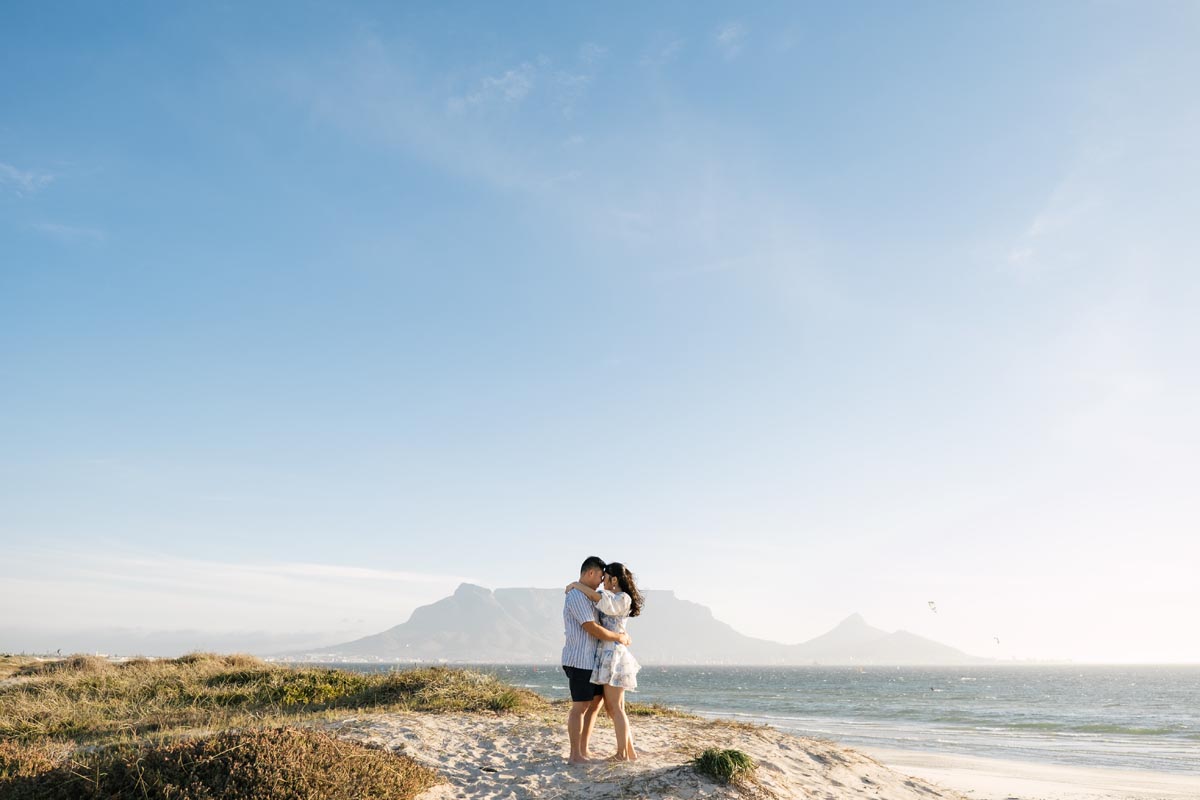
So grab a spot, kick back, and soak in that golden glow before heading back to Cape Town with a heart full of West Coast memories.
Day 14: Spa Day or Wine Tasting in Stellenbosch, Paarl
After 14 days in Cape Town packed with hikes, beaches, wine tastings, and unforgettable landscapes, you’re probably feeling like you need a vacation from this vacation.
We get it – there are so many things to do and see in Cape Town – 2 weeks is not enough! So for your final day, we’ve got a couple of suggestions to help you end your adventure on a high.
Option 1: Relaxing at a Luxury Spa
If you’re craving a full day to relax and recharge, Cape Town has some world-class spas where you can unwind in style. Two of our favorites are the spas at The Twelve Apostles Hotel and the One&Only Hotel.
We honestly can’t pick a favorite – both are incredible in their own way.
At the Twelve Apostles Hotel Spa, we love the Rasul chamber and salt floatation pool. If you’re craving a treatment with a view, their stunning mountainside gazebos are a dream for those who love an outdoor massage.

Then there’s the One&Only Hotel Spa, which delivers next-level luxury. We’ve celebrated our wedding anniversary here twice (it’s that good!), and the dedicated couple’s treatment rooms with private jacuzzis are always such a treat. Plus their massages and body wrap treatments are nothing short of heavenly.
One thing is for sure – you can’t go wrong with whichever option you pick.
Stay the night at the spa of your choosing to complete the full day of relaxation.
Option 2: Wine Tasting in Stellenbosch or Paarl
If you’re not ready to part ways with Cape Town’s amazing wine scene, why not squeeze in one last wine route in Paarl or Stellenbosch? Here’s a quick breakdown to help you decide which wine region is for you.
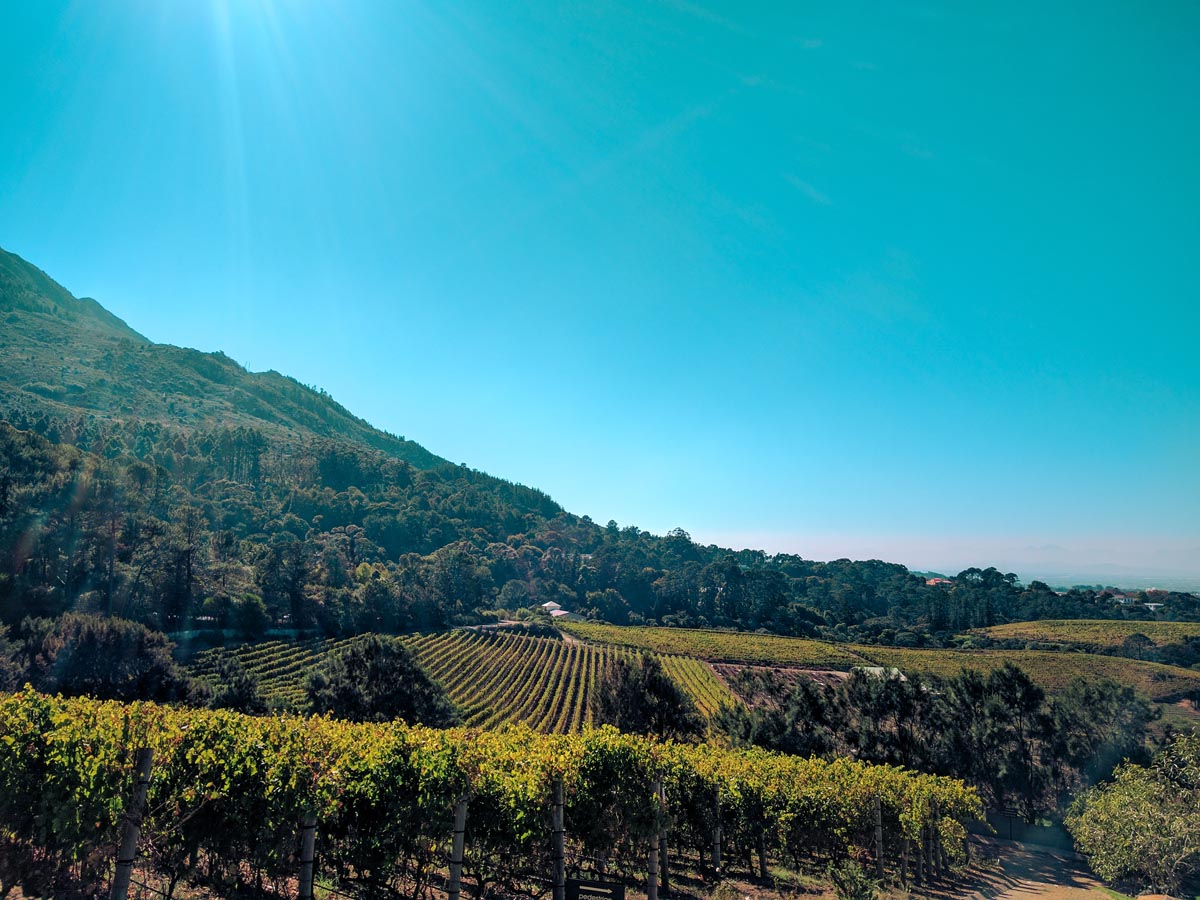
If you love red wines, go to Stellenbosch (also lovingly referred to as ‘Stellies’ by locals). It’s known as South Africa’s red wine capital for good reason.
This wine region is famous for its bold and complex reds like Cabernet Sauvignon and Merlot. It’s also home to charming wine estates with Cape Dutch architecture and stunning vineyard views.
Otherwise, if you love white AND sparkling wines as well, then Paarl is your winner.
Paarl is renowned for both its elegant Chenin Blancs as well as its robust and spicy Shiraz. Many of the wine estates here also specialize in MCC (Methode Cap Classique) – South Africa’s version of Champagne.
We’ve pinned the exact wine routes to follow in both regions in our custom map. Plus we’ve also added a non-wine stopover for each place for those traveling Cape Town with kids.

Can’t decide between Paarl or Stellenbosch? No problem! You can do them both on these wine tasting tours:
Wrapping Things Up
Cape Town truly offers an experience like no other. The city seamlessly blends breathtaking landscapes, rich history, world-class cuisine, and endless outdoor adventure.
Whether you’ve followed this Cape Town itinerary to the letter or mixed and matched a few suggestions, we hope our local insider tips helped you create unforgettable memories in South Africa.
For more awesome first-hand experiences and travel advice, check out all our South Africa Travel Guides. And as always, if you have any questions, you’re welcome to ask us via our social media channels or e-mail.


